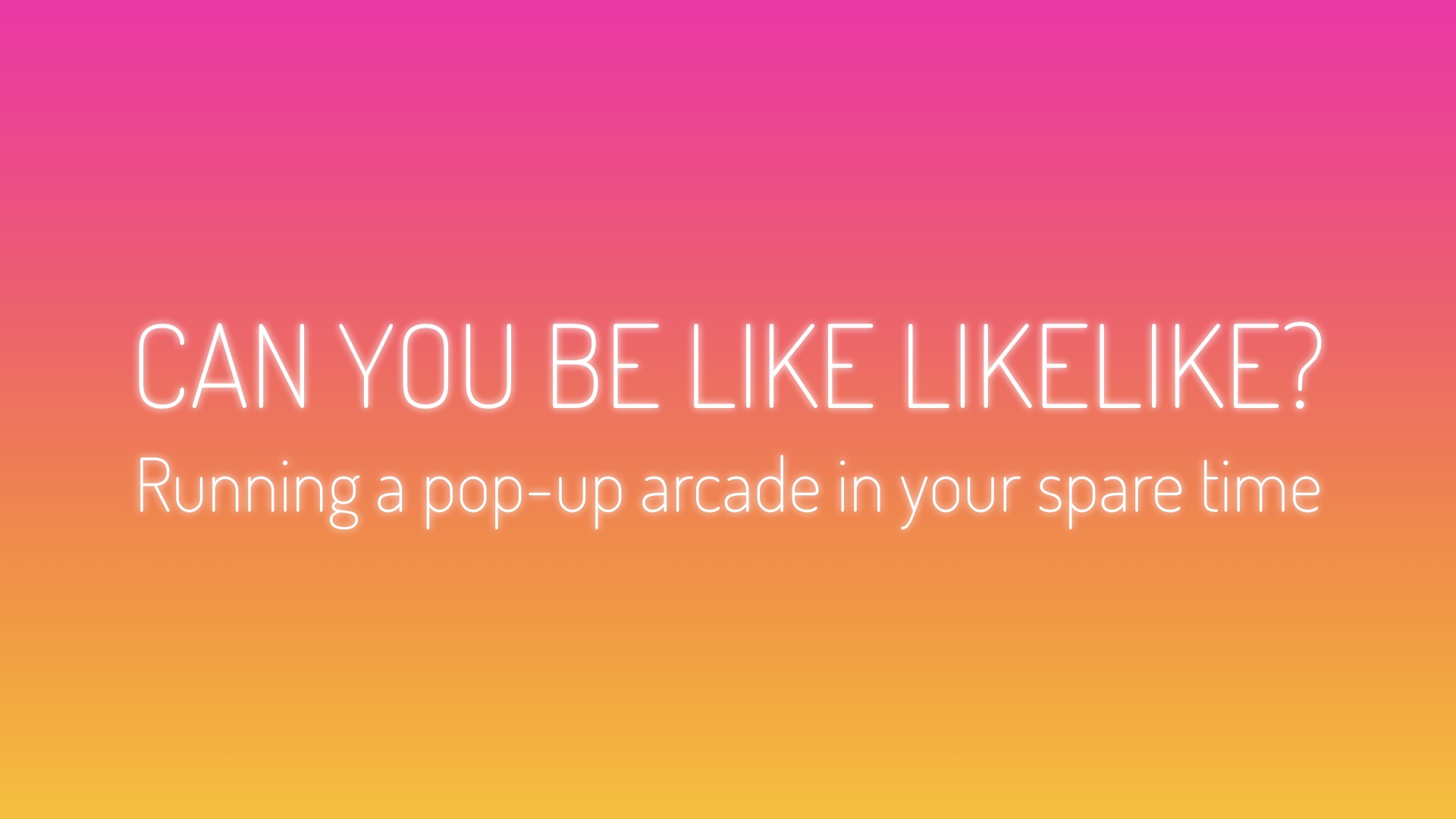
I couldn’t find a title for this talk so we ended up with this: Can you be like LIKELIKE?

The short answer is NO.
Or you shouldn’t really.
I’d like to copy-paste Lorenzo Pilla's disclaimer listing my various privileges.
I'm a white guy, I'm based in the USA, I have a stable job, I've been around for a while, I entered the job market before the financial crisis, and so on... these are all crucial factors to keep in mind when talking about accomplishments and such.
But first, let me briefly explain what LIKELIKE is
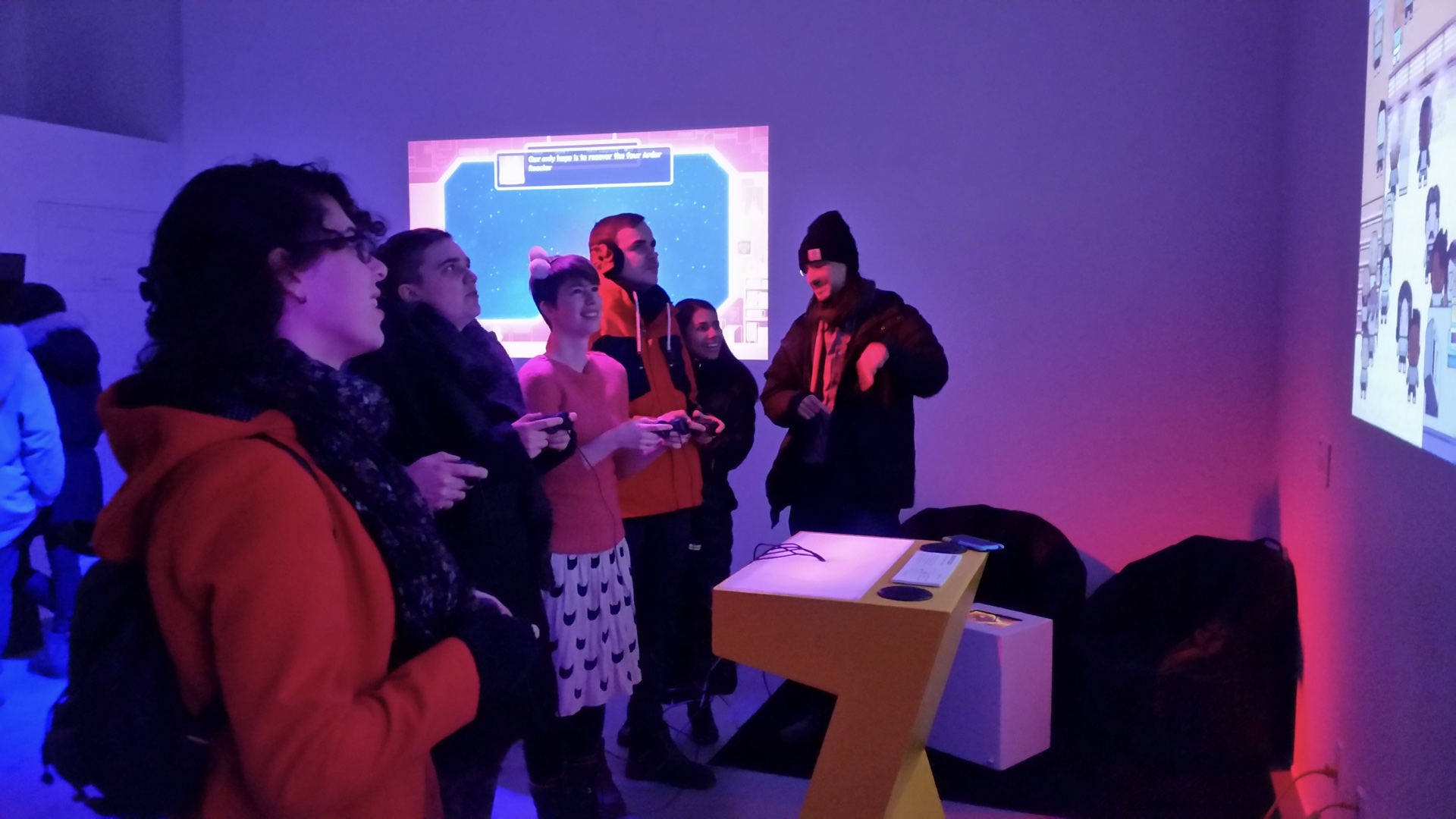
LIKELIKE is space for independent games and playable arts.
It's in Pittsburgh, which is a small city in Pennsylvania USA.
That’s where I live.
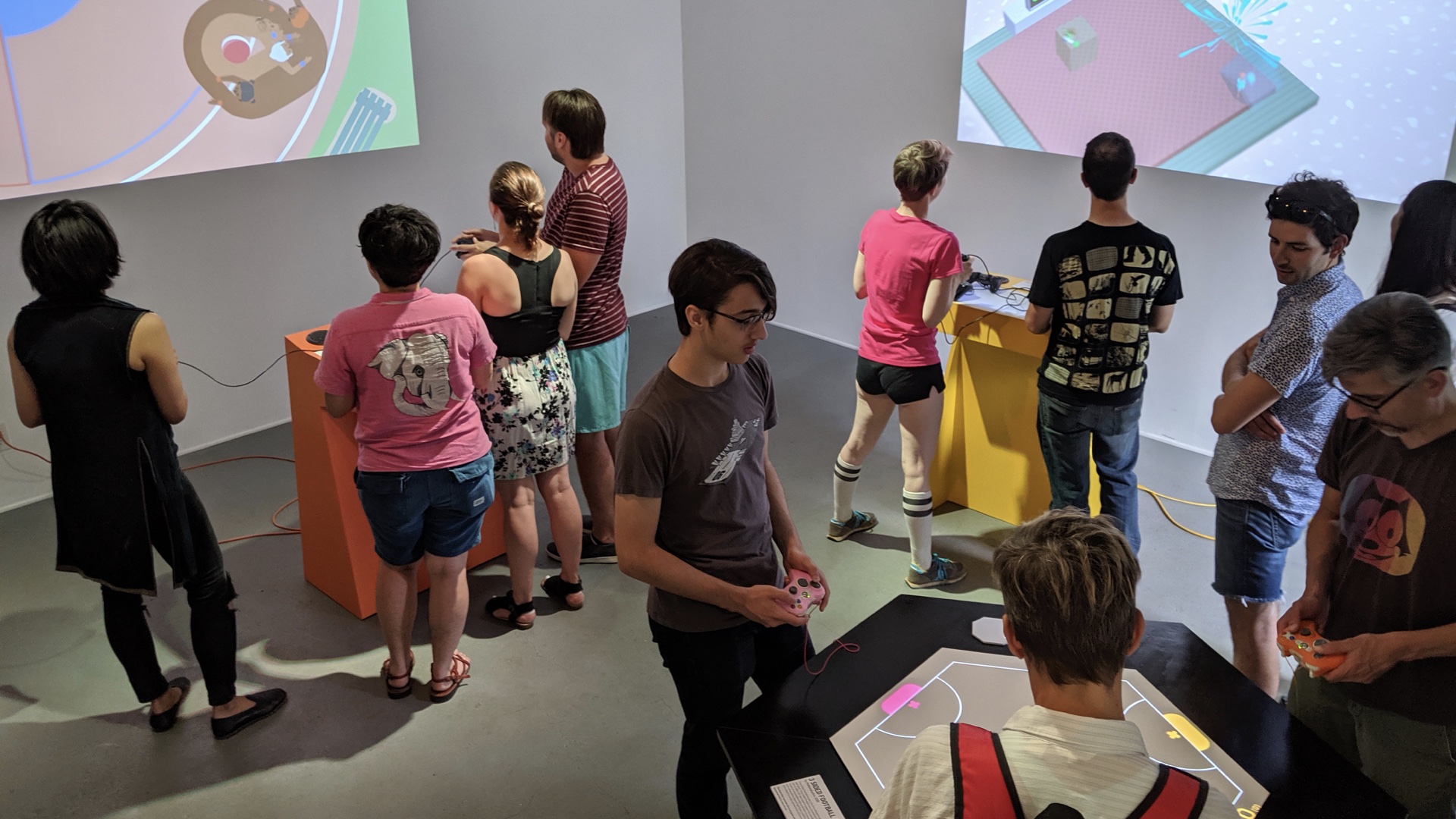
It’s a strictly non-commercial endeavor.
Physically, it’s a small room of about 7x7 meters.
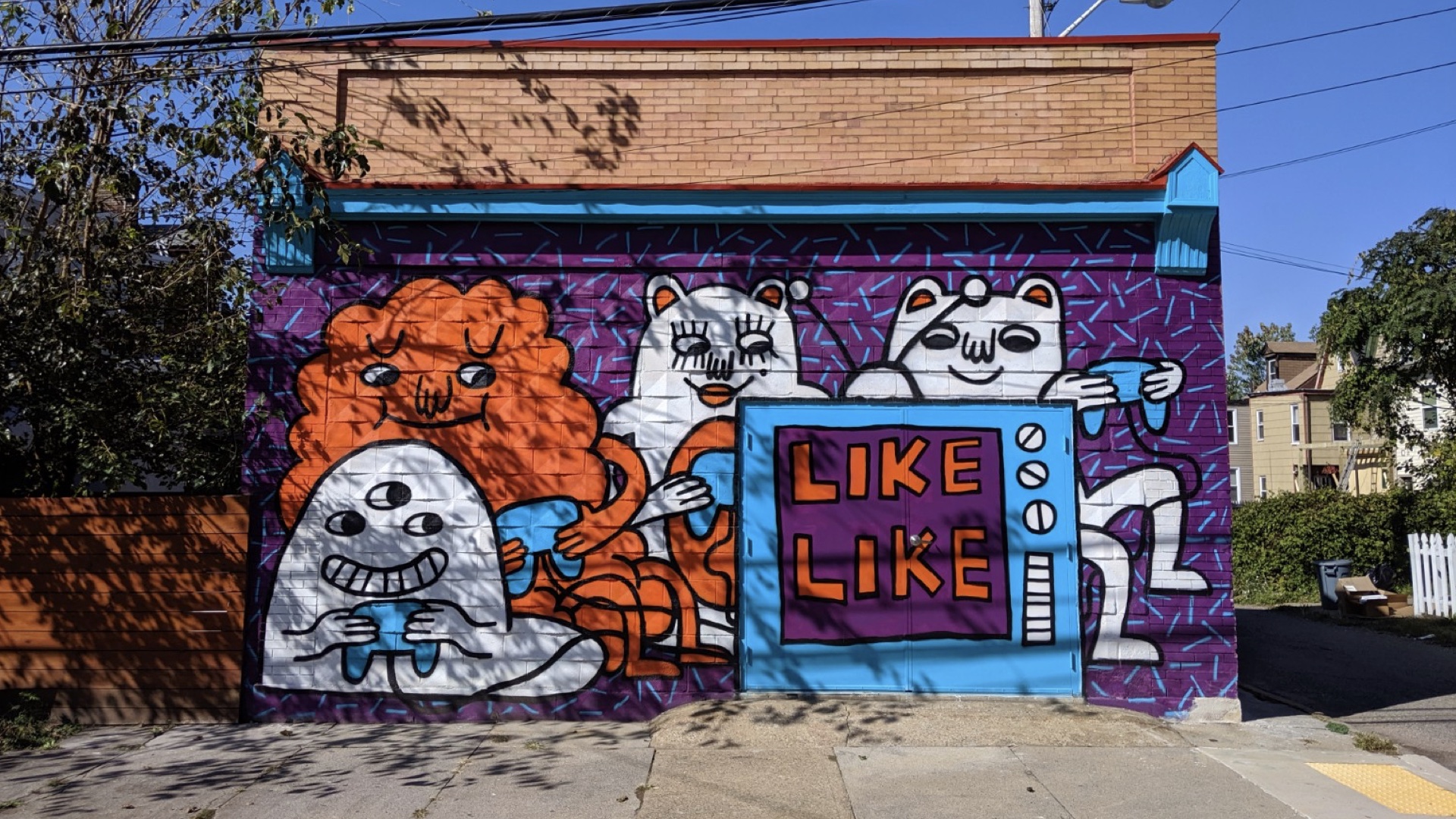
It looks like this from the outside.
It’s basically my garage.
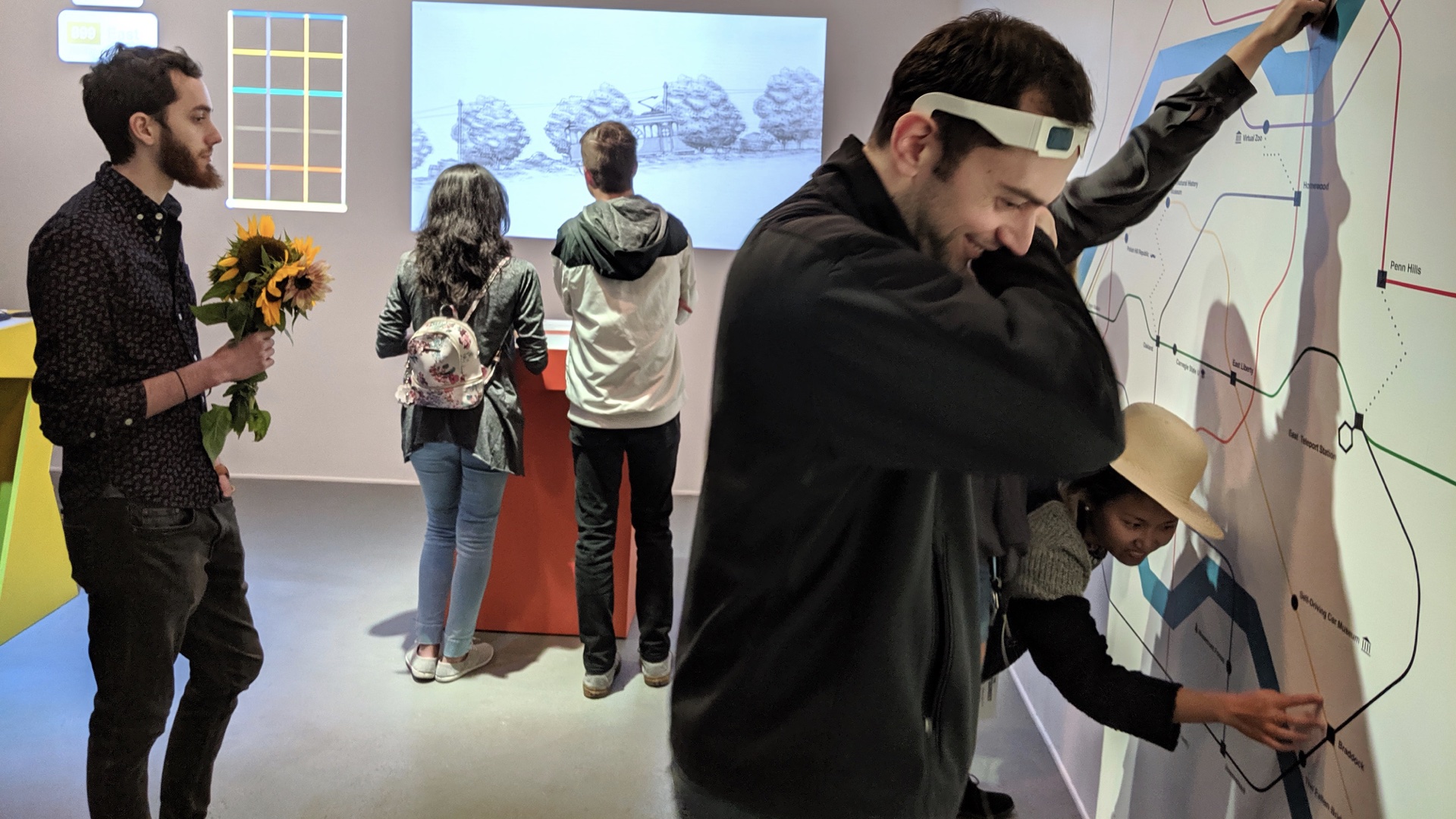
Experientially, it tries to be somewhere between an arcade and an art gallery.
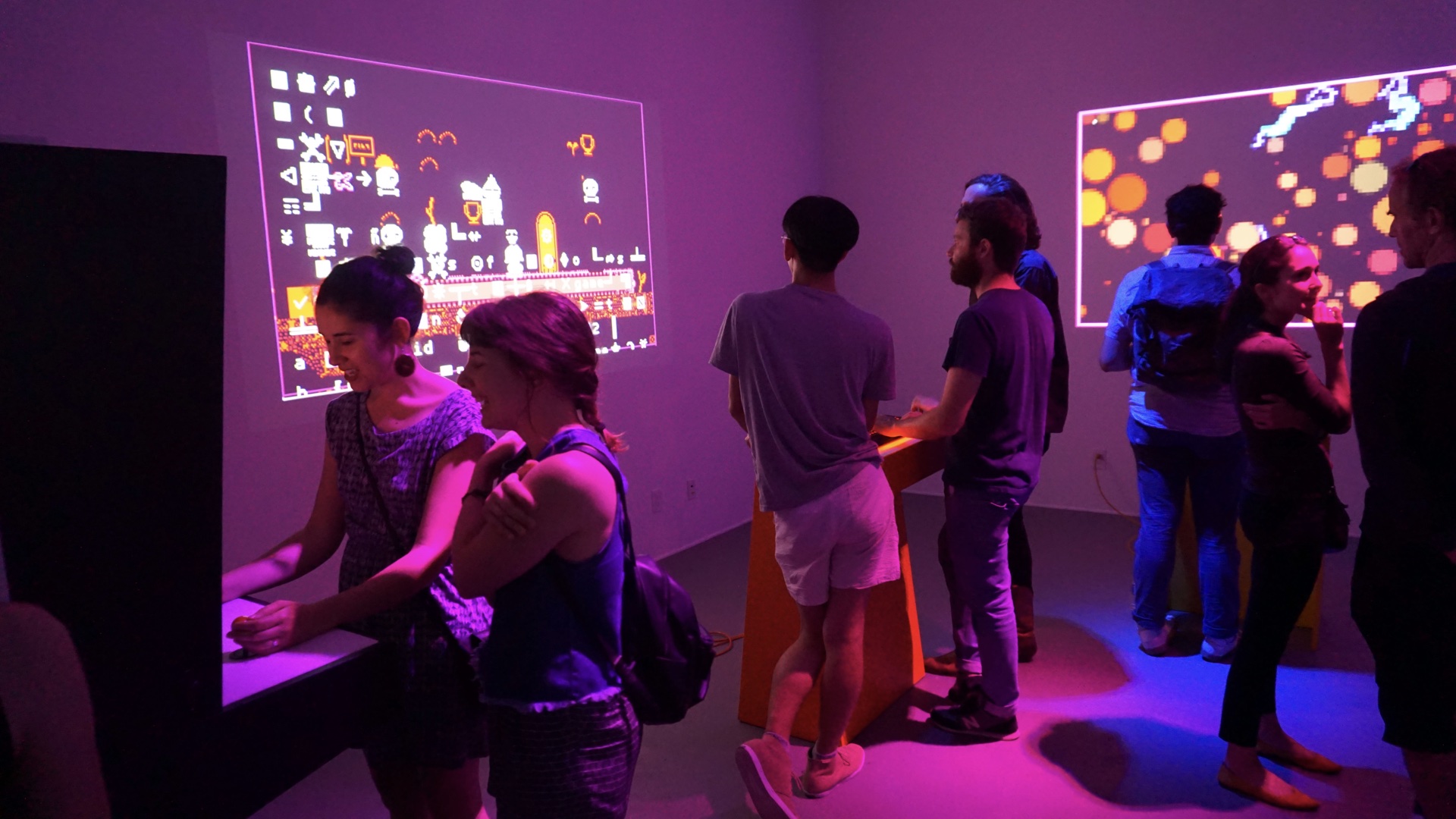
Organizationally, it tries to be somewhere between a venue and an event. It doesn’t have opening hours, only one night shows that last 4 hours.
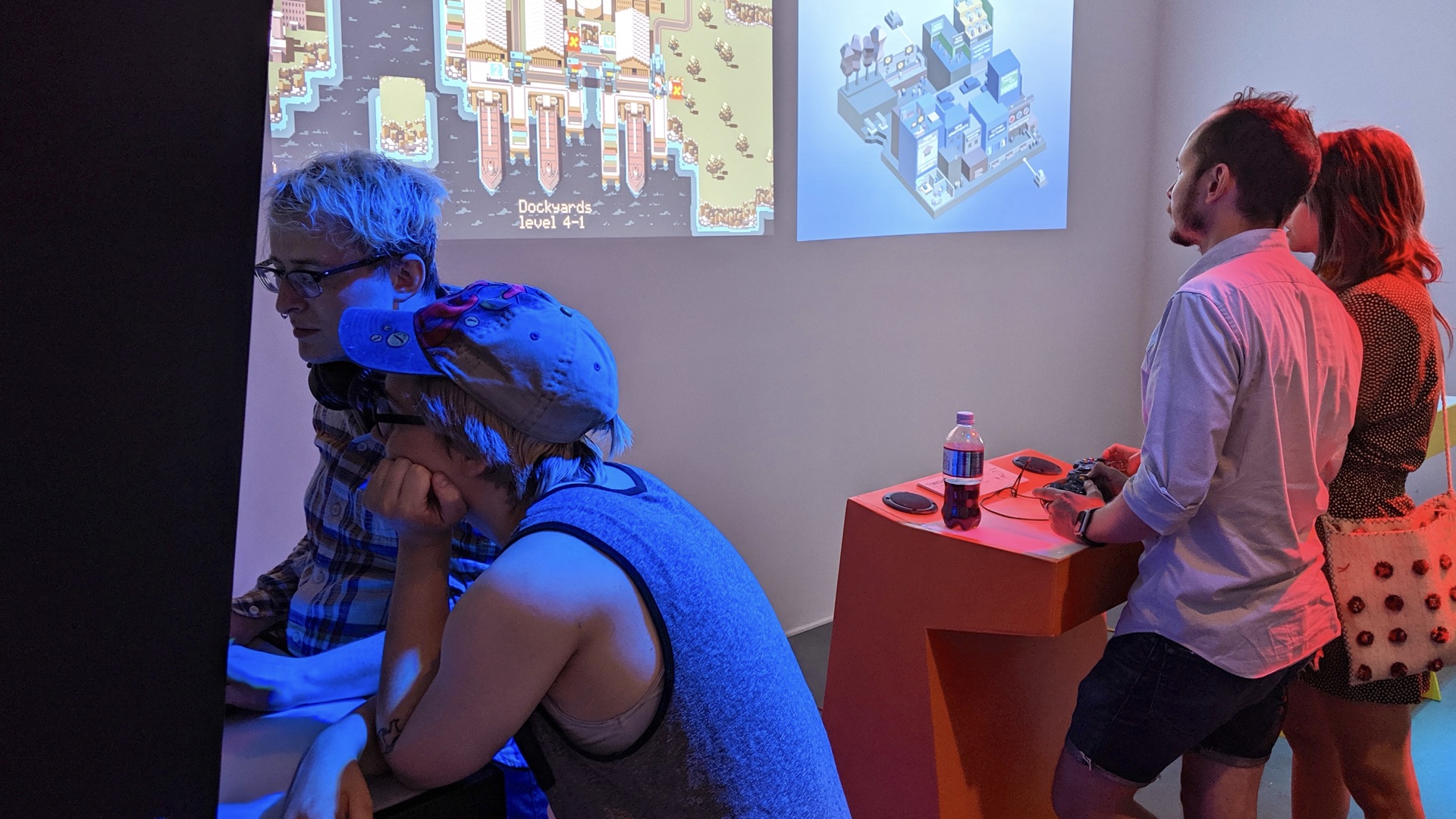
LIKELIKE opened on February 2018 and we’ve been putting together one small show every month for most of the year.
It’s a total of 18 shows.
They are all centered around a theme.
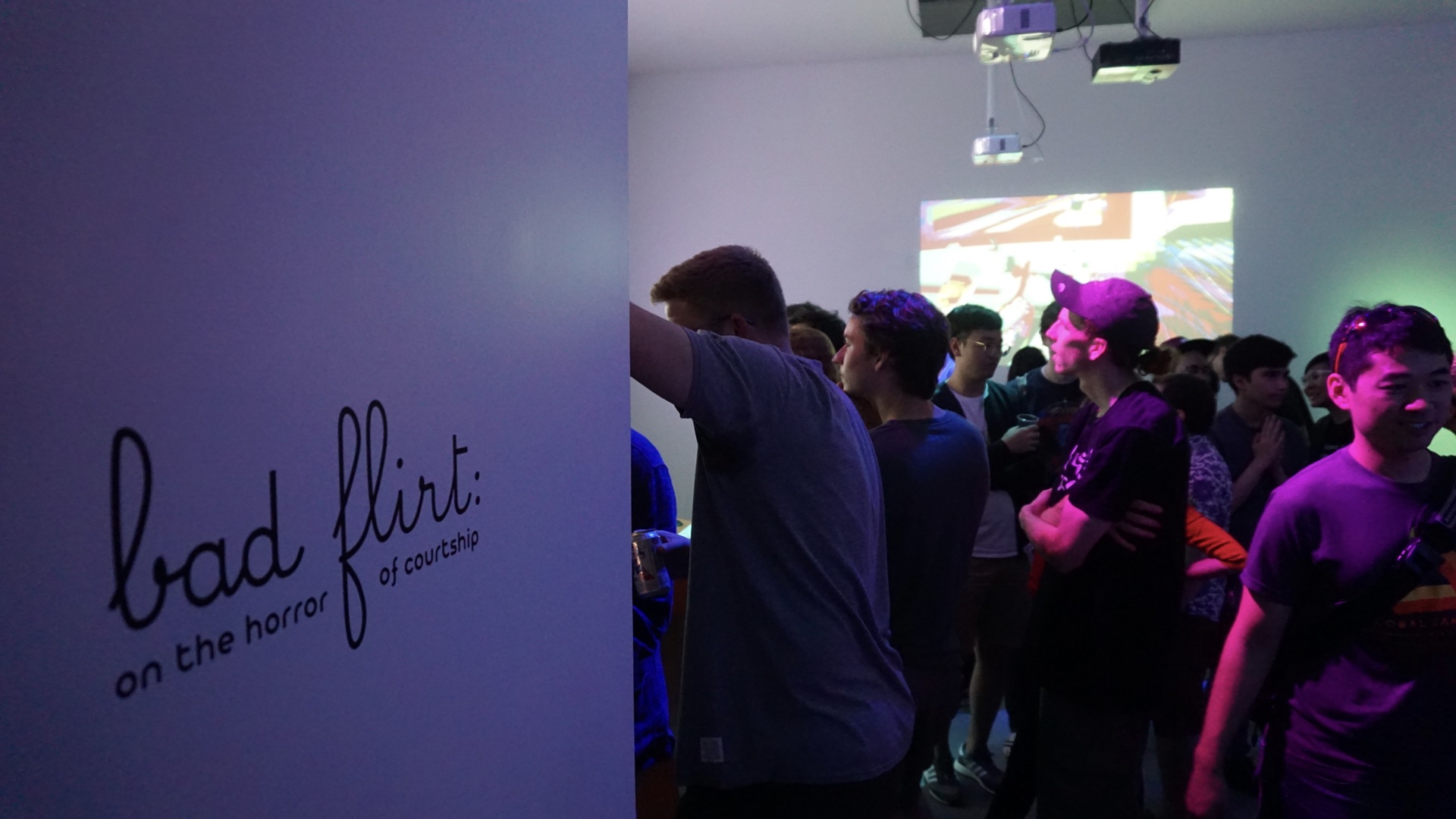
Since I can fit a maximum of 6 games I can afford to pick very narrow themes.
Like the horrors of dating or the joys of public transportation.
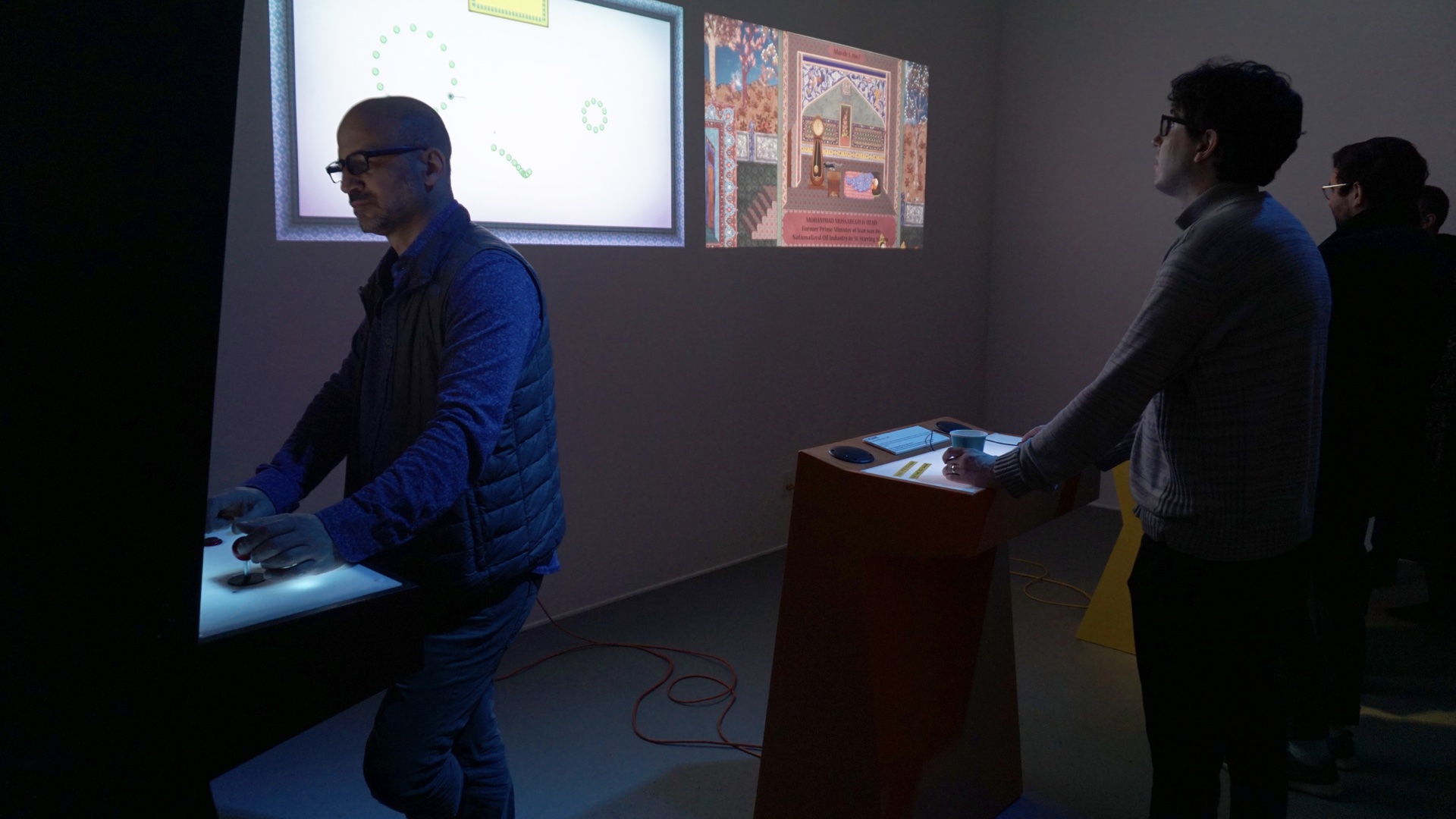
Many shows tend to have a political slant.
This was a show about Iranian games made by Iranian and Iranian diaspora people. Another one was about utopian futures.
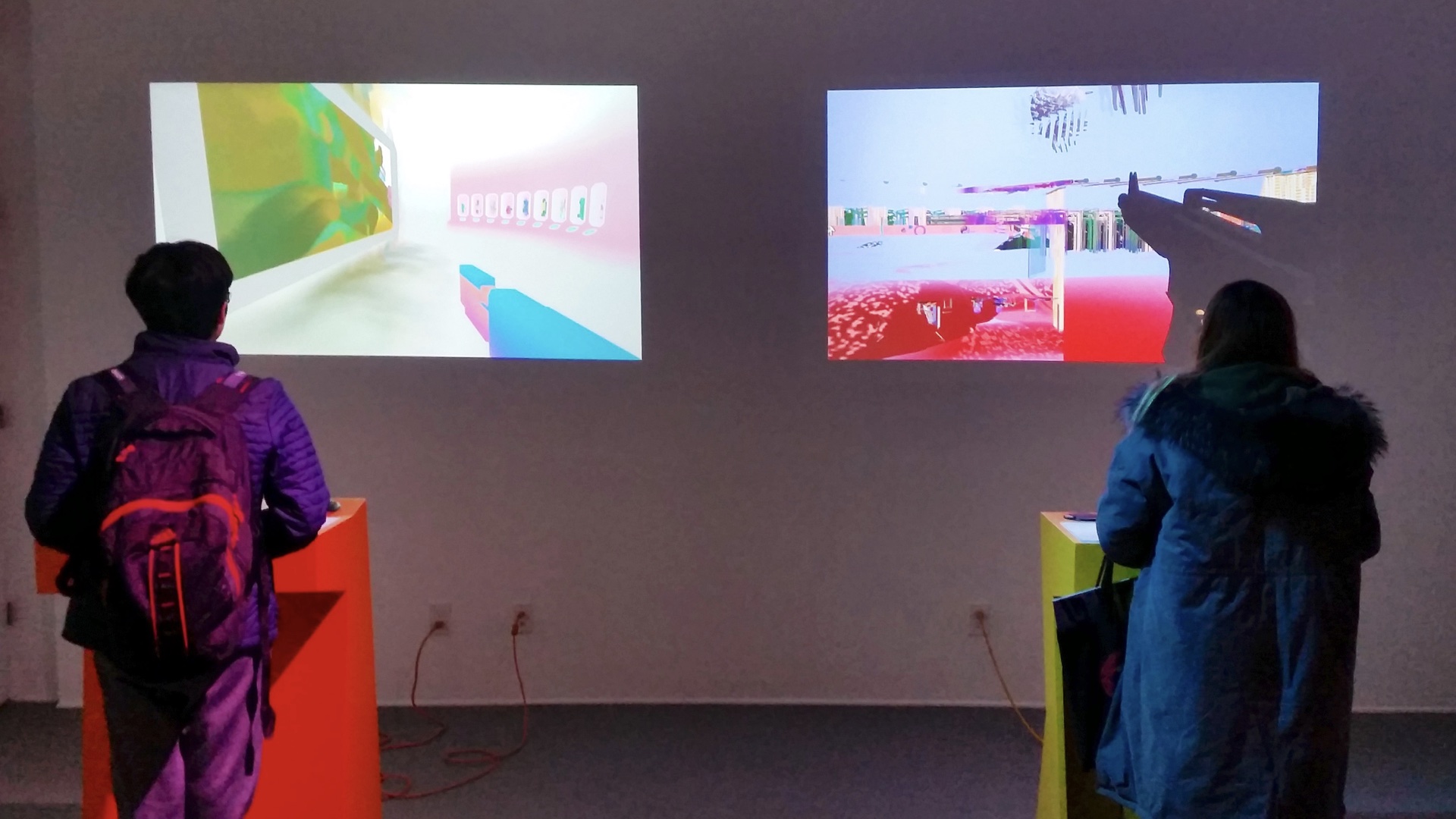
Since they can be organized pretty quickly they can respond to current events.
Last year there was yet another mass shooting. Conservatives were blaming violent games, gamers were on the defensive.
So we made a show about artistic/non violent interpretations of First person shooters, which defied the whole violence and games debate.
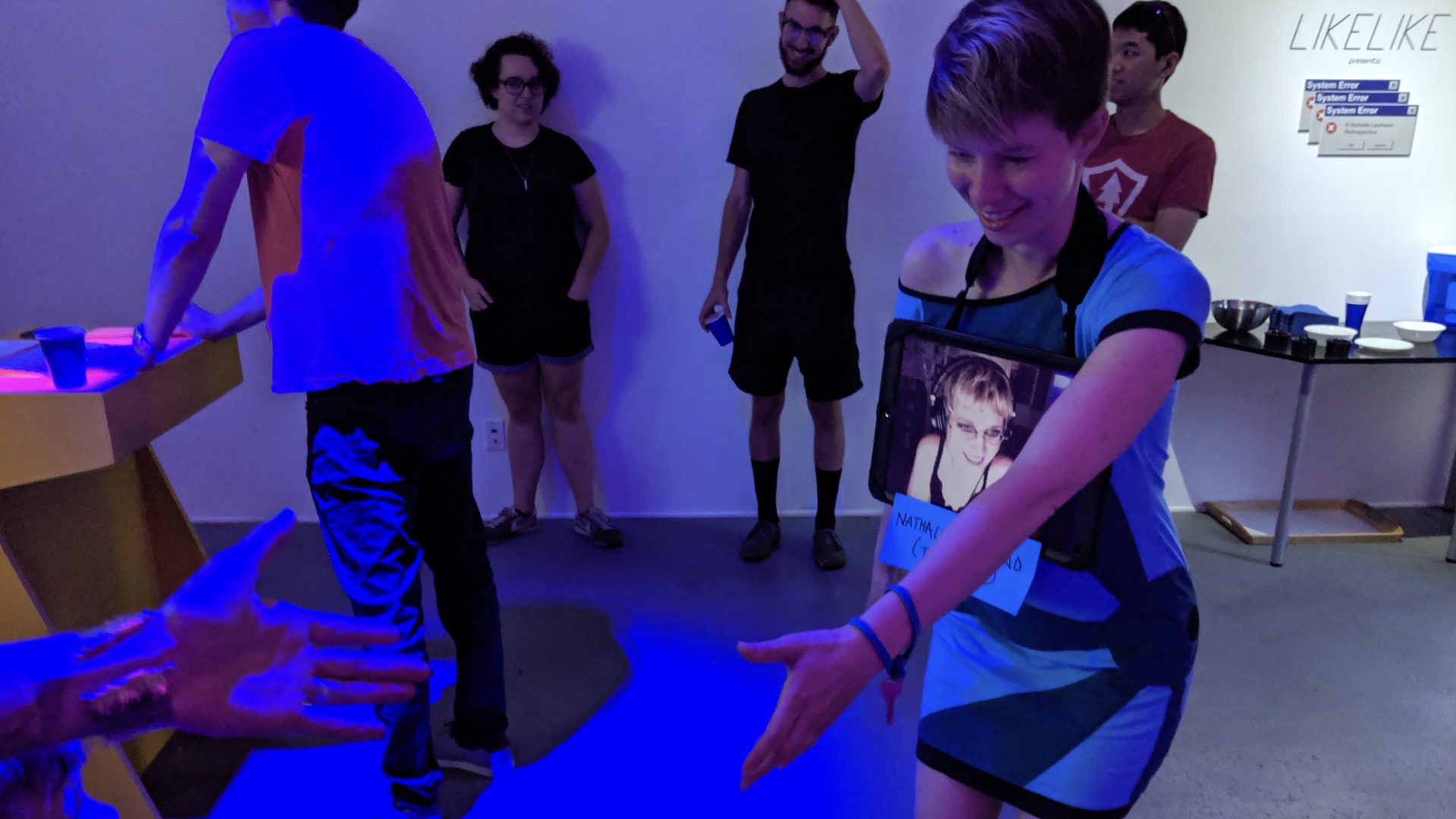
We also had two solo shows devoted to a single author. One showcased works by Pittsburgh-based artist and game maker Loren Schmidt, the other was a Nathalie Lawhead's retrospective. She attended in telepresence.
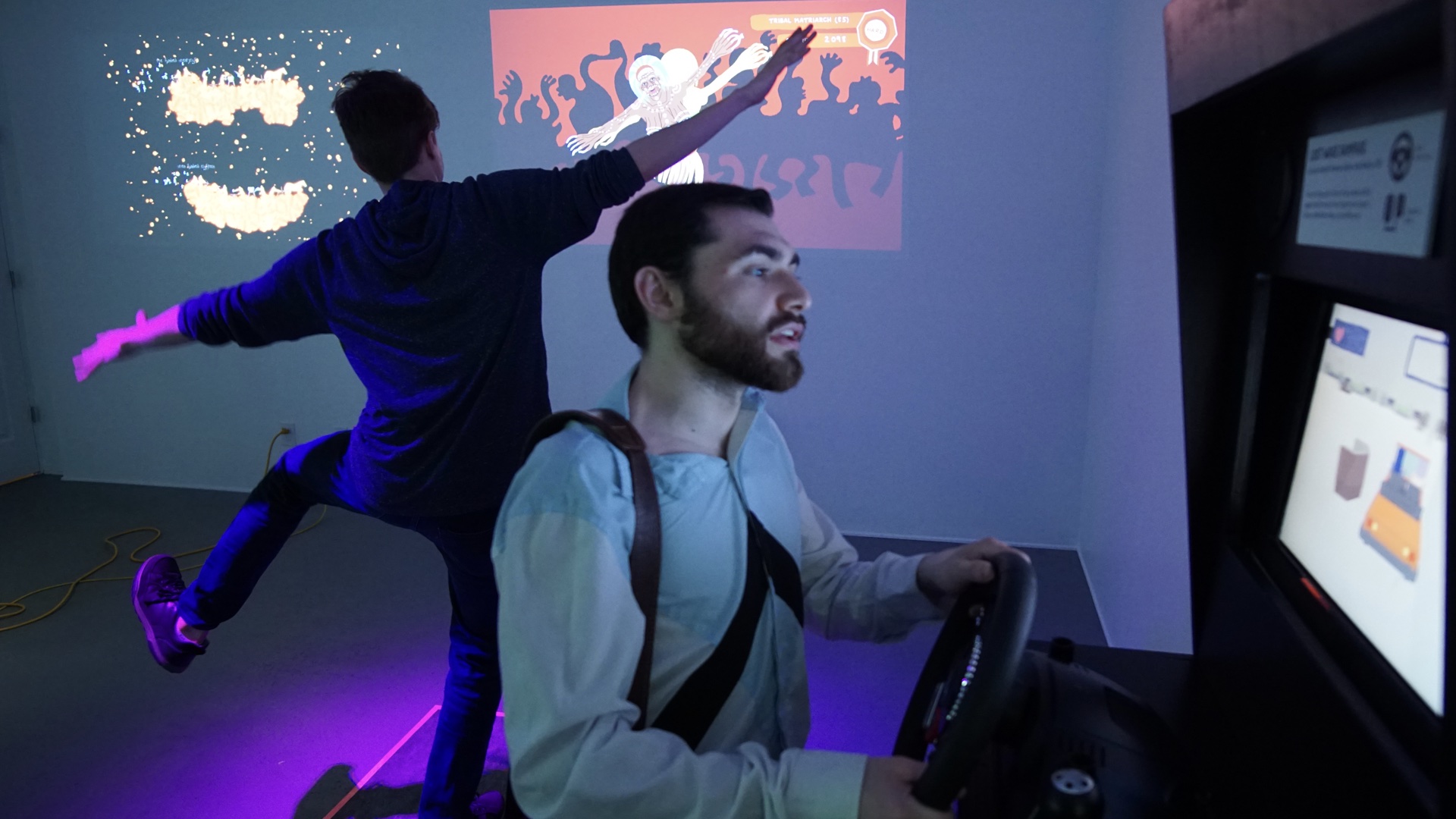
We are not focused on novelty. We are not targeting an audience of indie gamers, so we can show a game that's even 8 years old and people would still be delighted because statistically speaking: NOBODY PLAYS EXPERIMENTAL GAMES
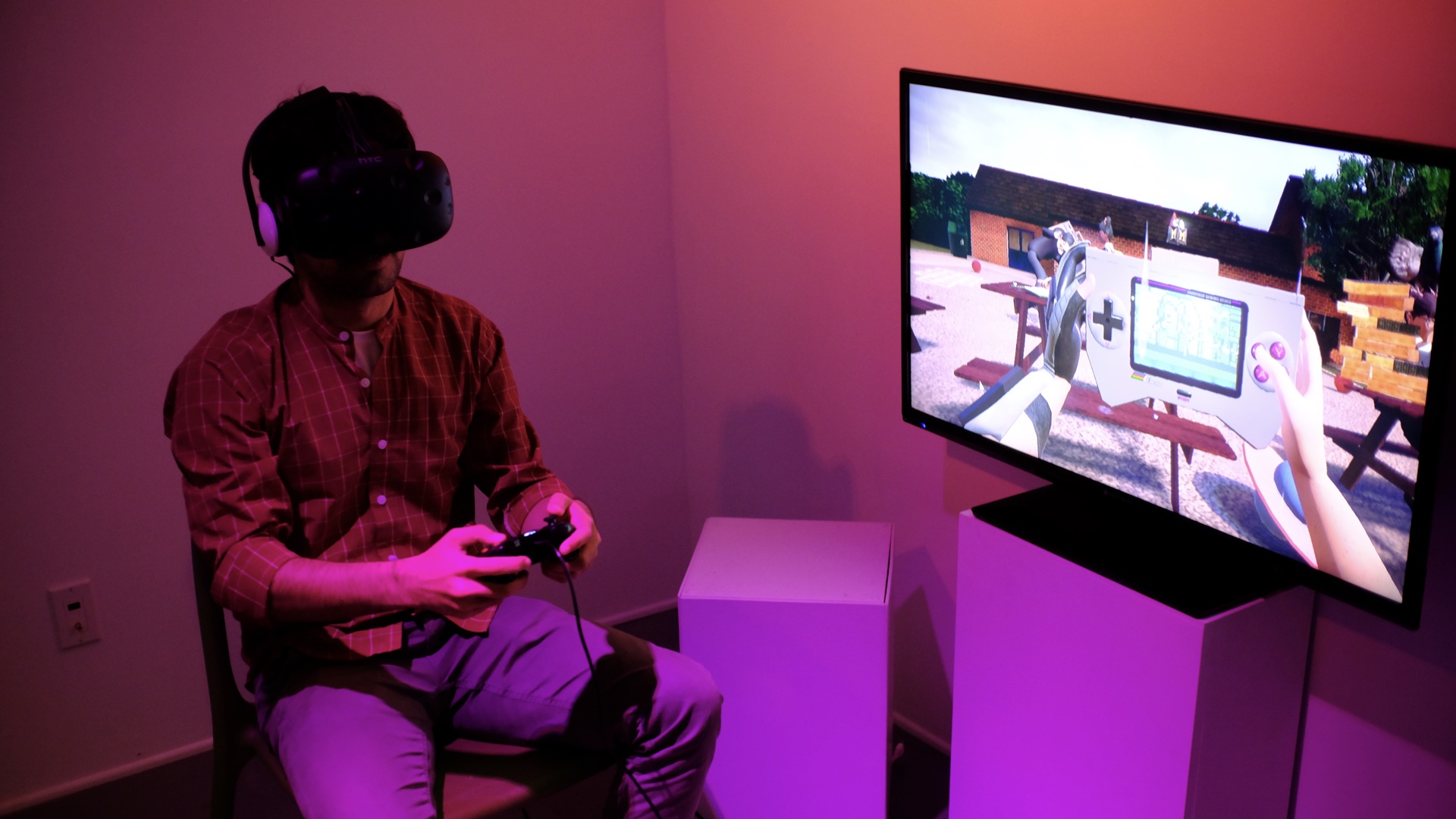
Each show typically showcases 6 works.
Ranging from commercial independent games...
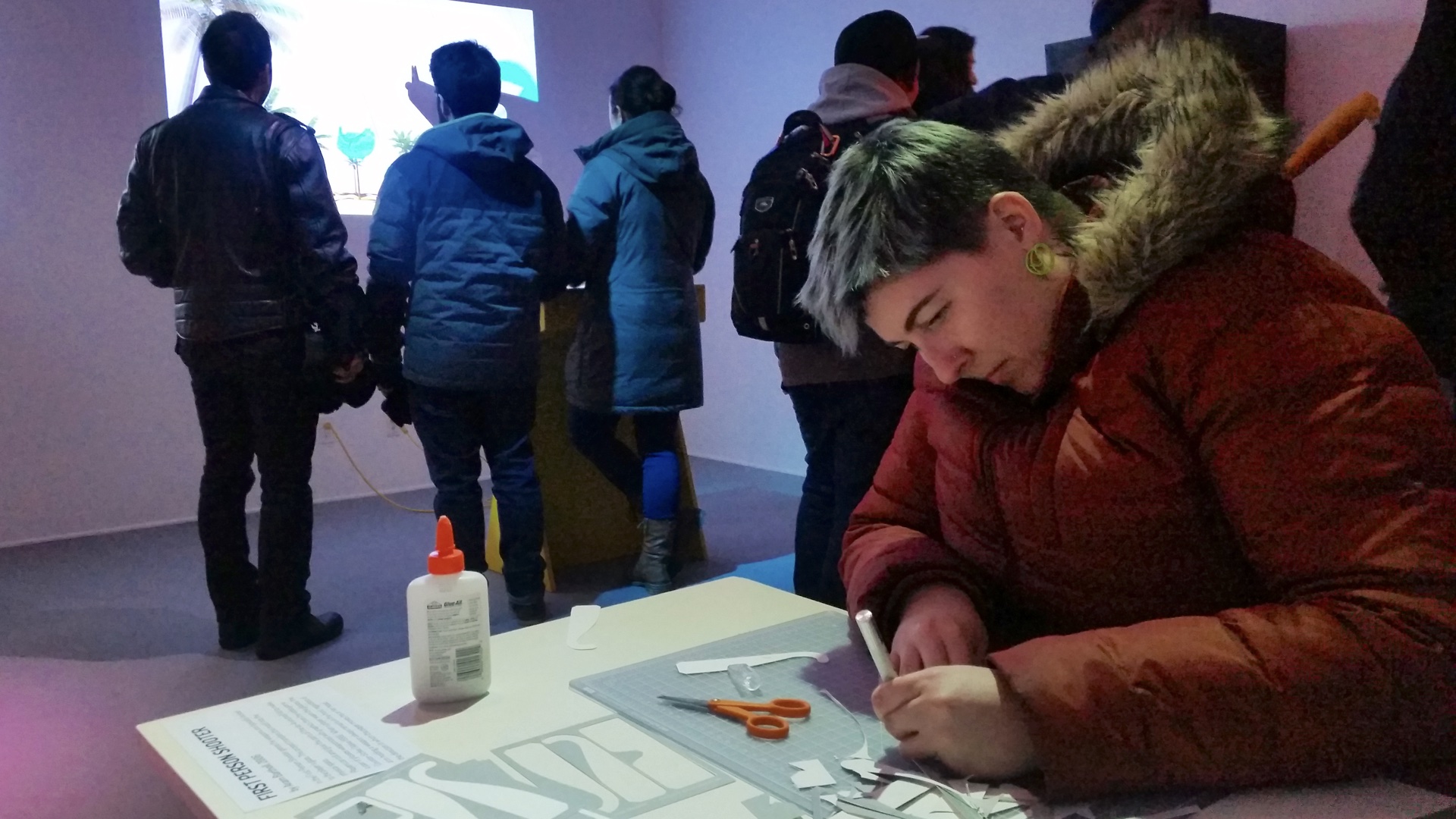
...to game art installations made by people operating in the fine art world. This was a cut-up paper piece by Aram Bartholl, a game-adjacient artist.
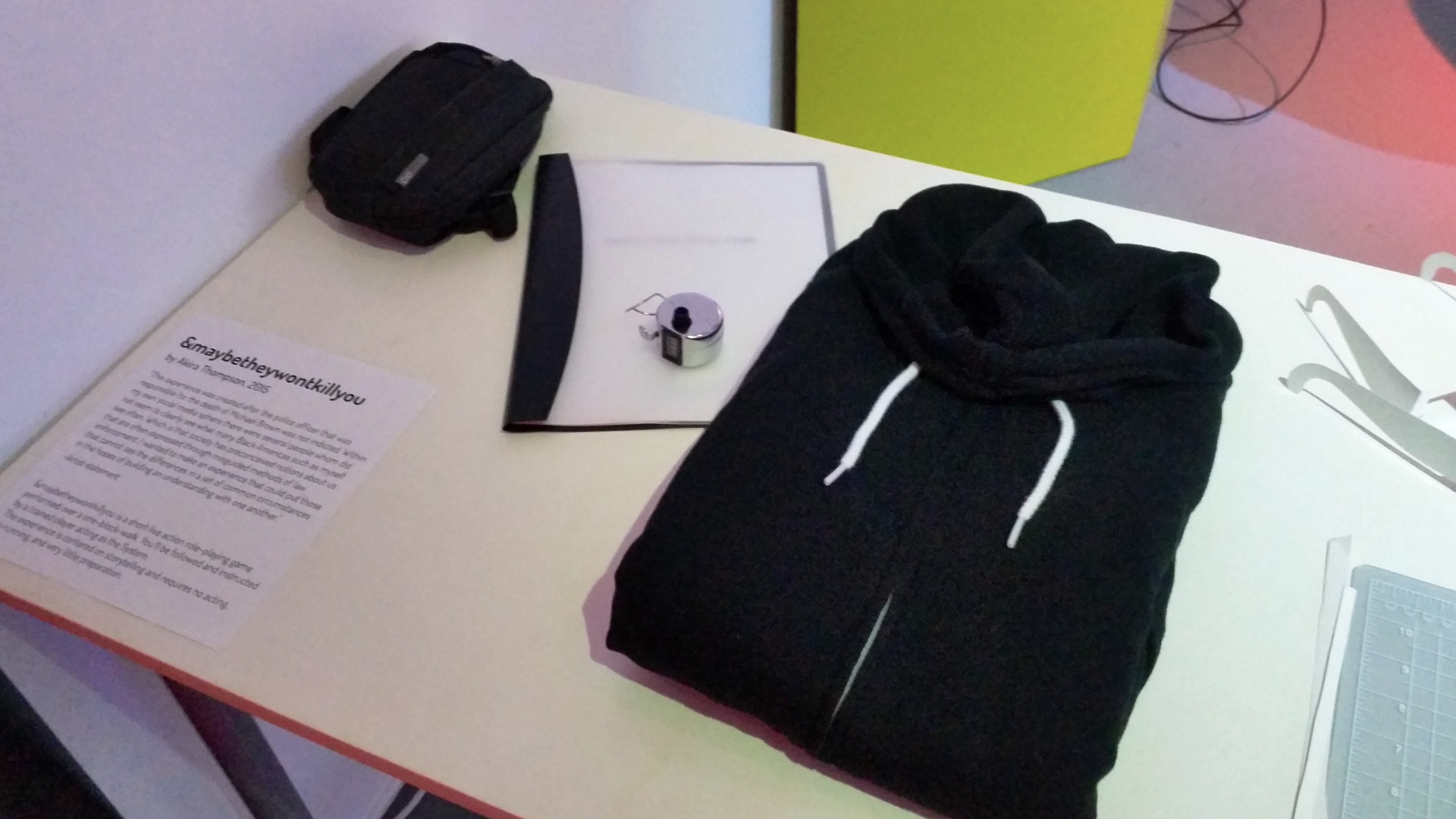
We mostly show screen based works
but every show has at least one piece that is a bit special. Something that is not on the internet.
Like this short LARP by Akira Thompson about police brutality.
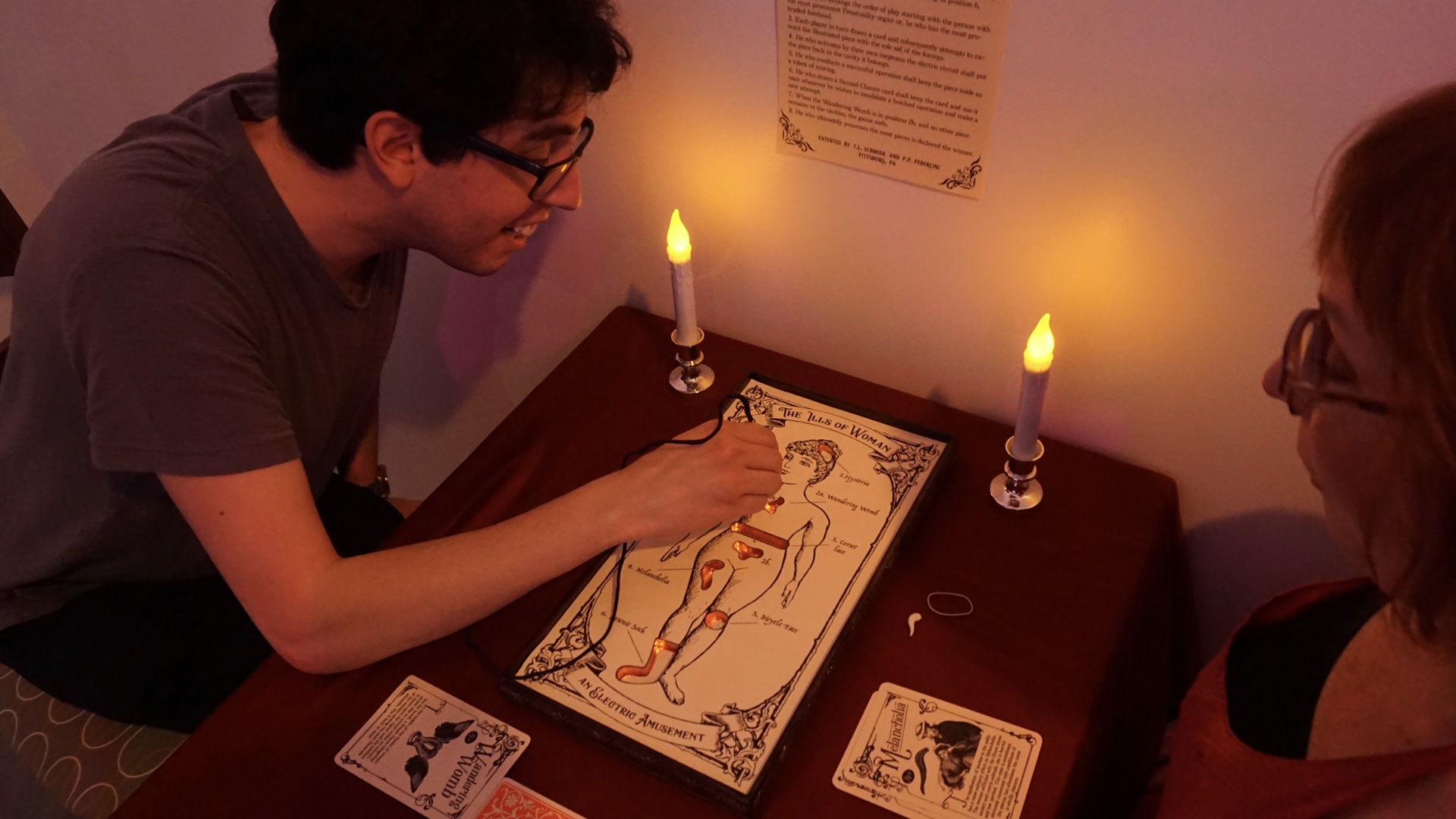
Or games that are made for the show, like this faux operation game about the outlandish diseases diagnosed to women in the Victorian Era.
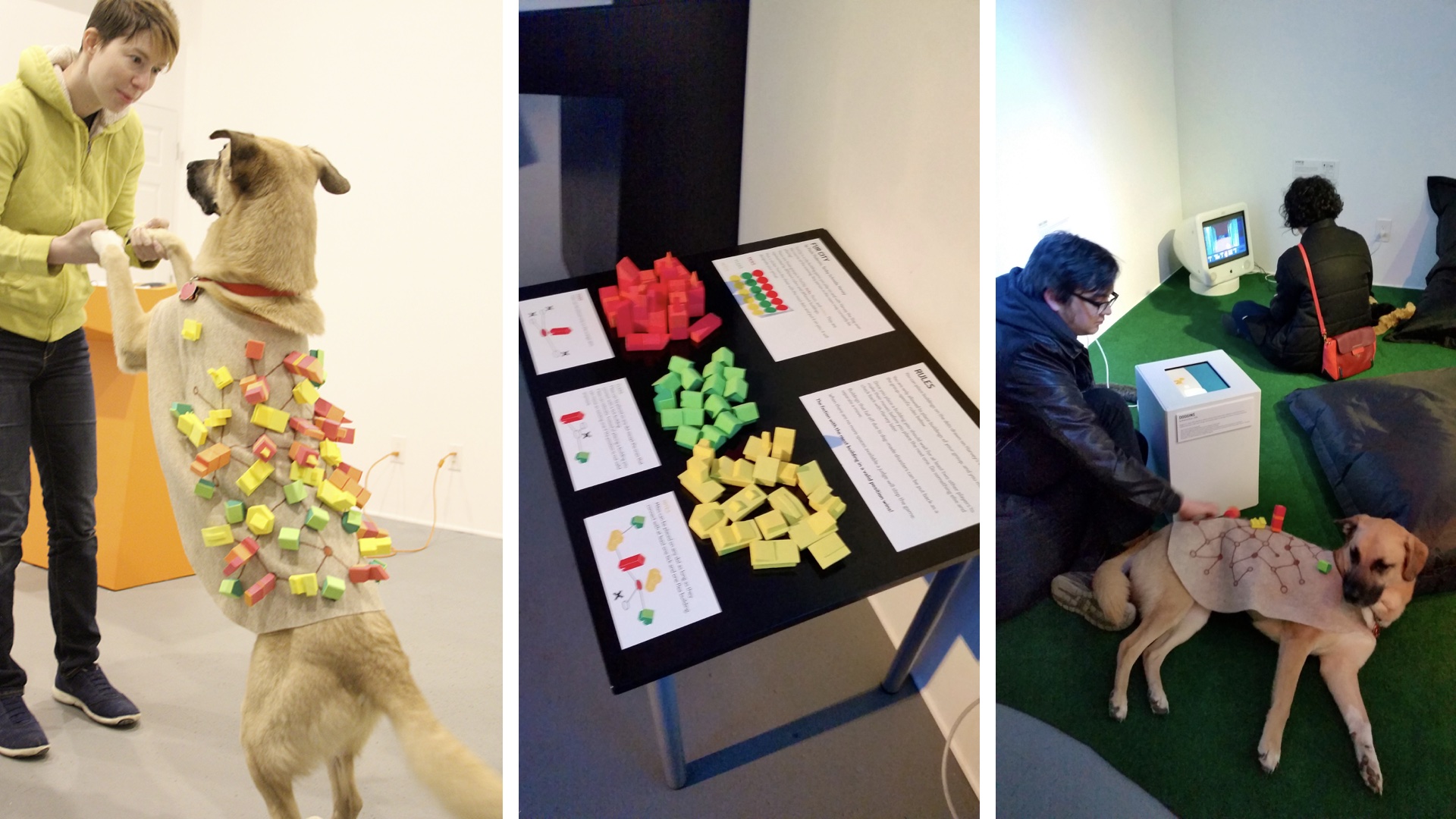
Or like this city building board game that uses my actual dog as board, and as random event generator and catastrophe.
Or sometimes games that require special hardware.
This is Analog pleasures. It was the most ambitious show so far in terms of custom experiences.
I will not talk too much about the content we show.
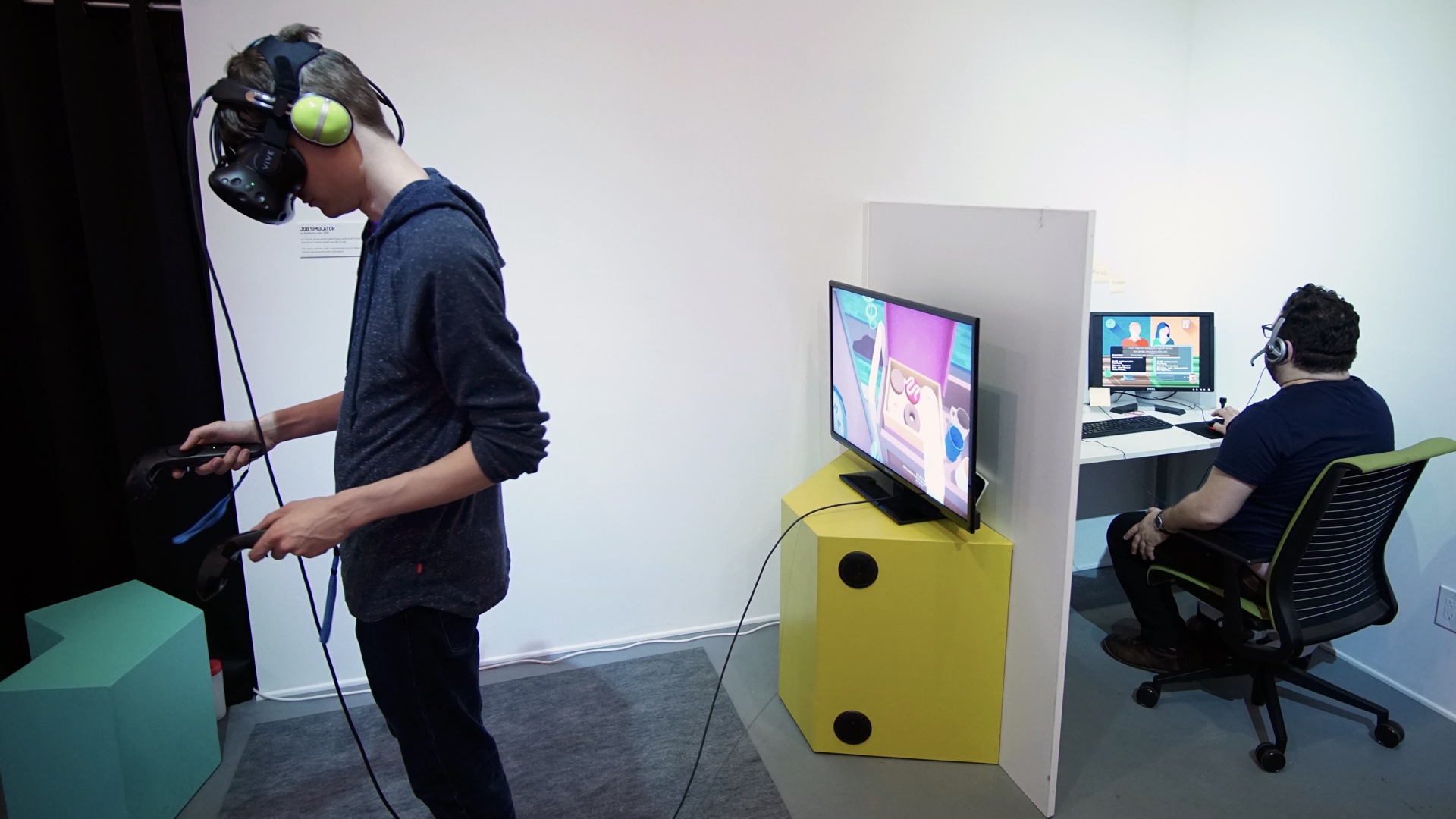
Sometimes we try to create custom installations around the games, but only when they are also functional. Like this fake cubicle for a series of games about labor.
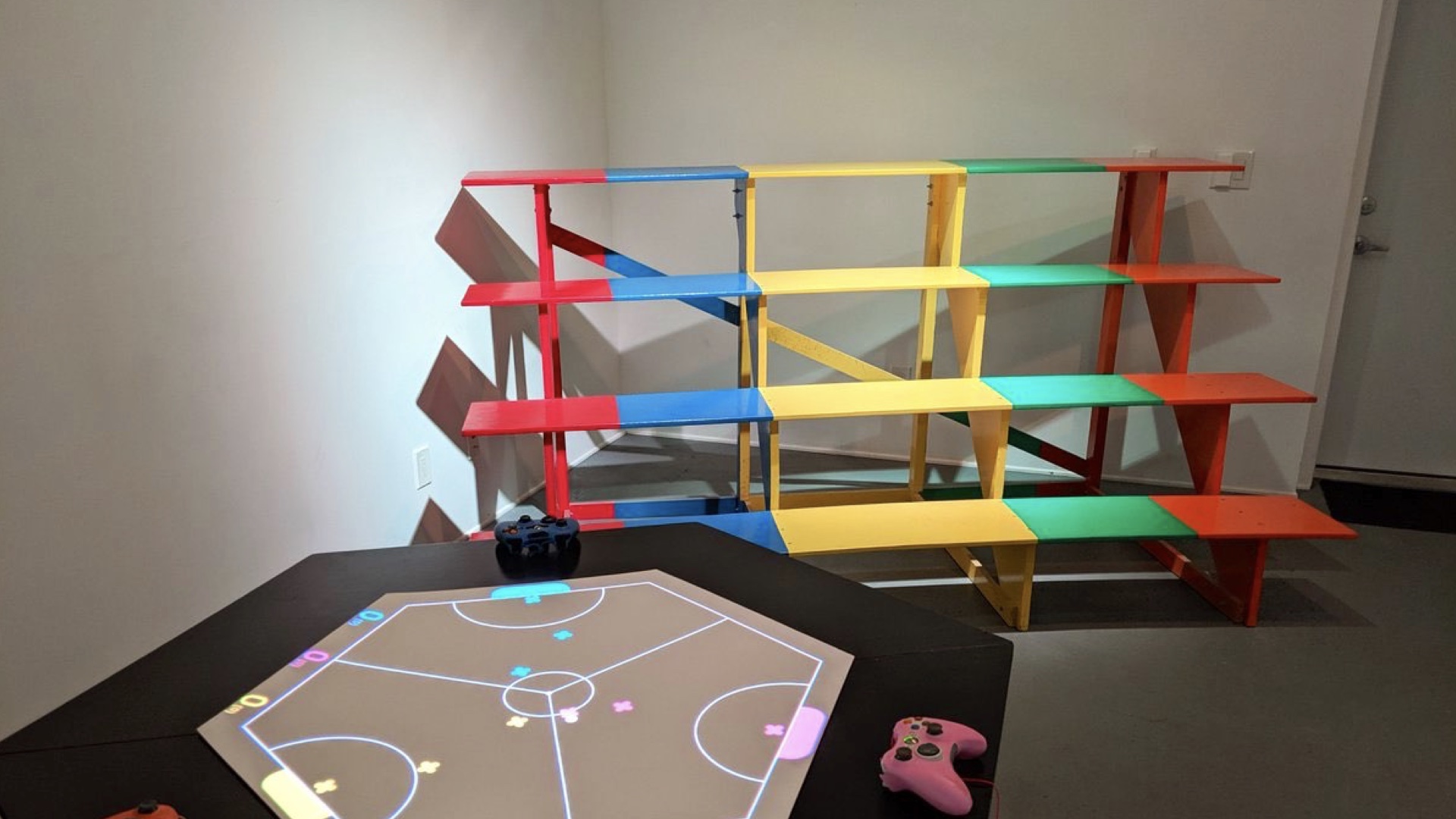
Or when we borrowed artisanal bleachers for an exhibition about sports games.
But generally the installations are unthemed, we let the games speak, we don’t spend time and energy decorating the room.
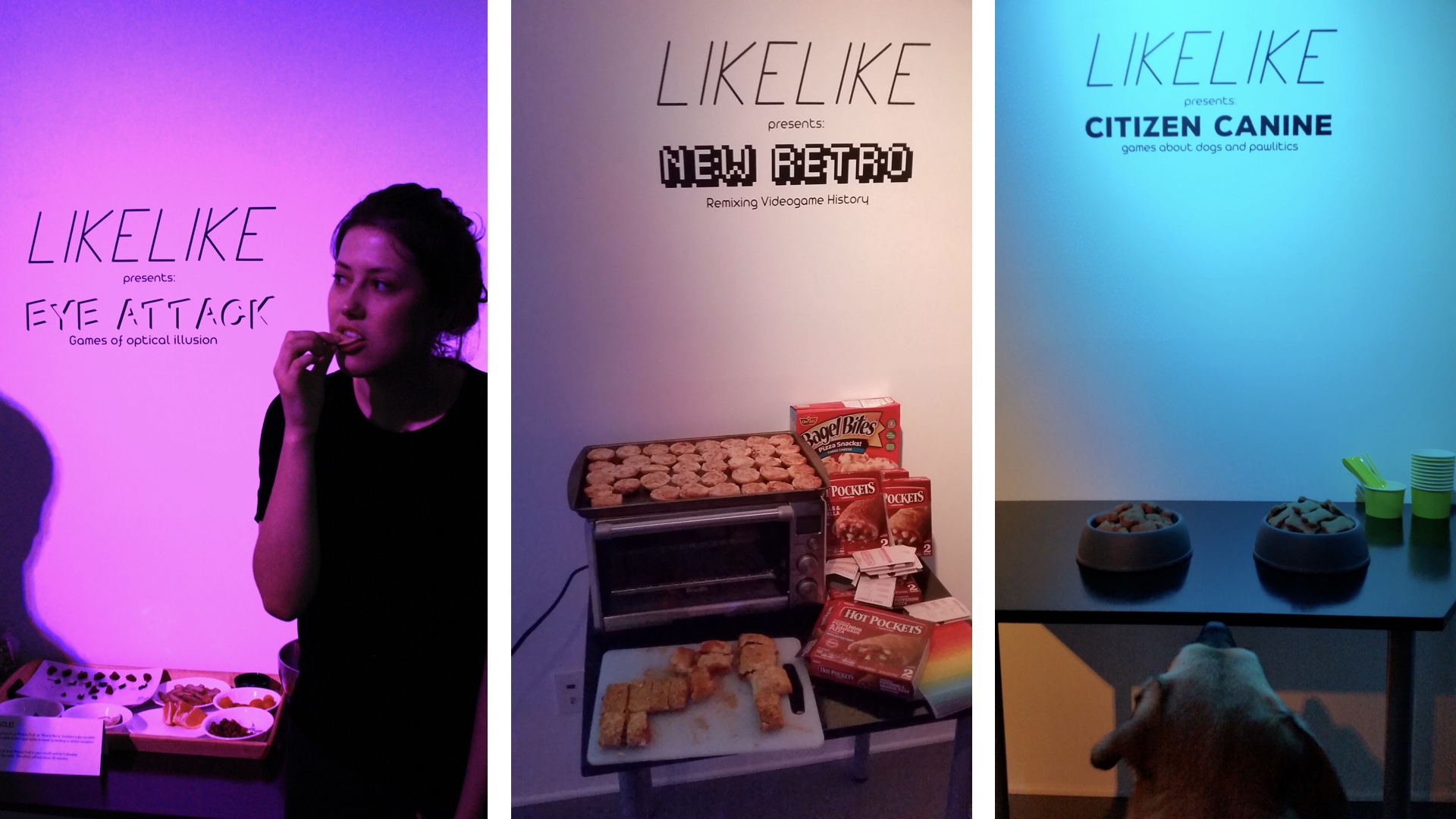
One thing we do consistently are a non audiovisual complements usually involving taste and smell, but we tried haptics too.
They are curated by our sensory director Heather Kelley.
For example, a show about optical illusions offered miracle berries that transform food flavors, that show about dogs offered identical cookies for both dogs and humans and you had to find out which one was which. A retro themed one had nostalgic snacks and so on.
Now, I say we because I’d never be able to run LIKELIKE without help from Heather Kelley and my partner Tenley.
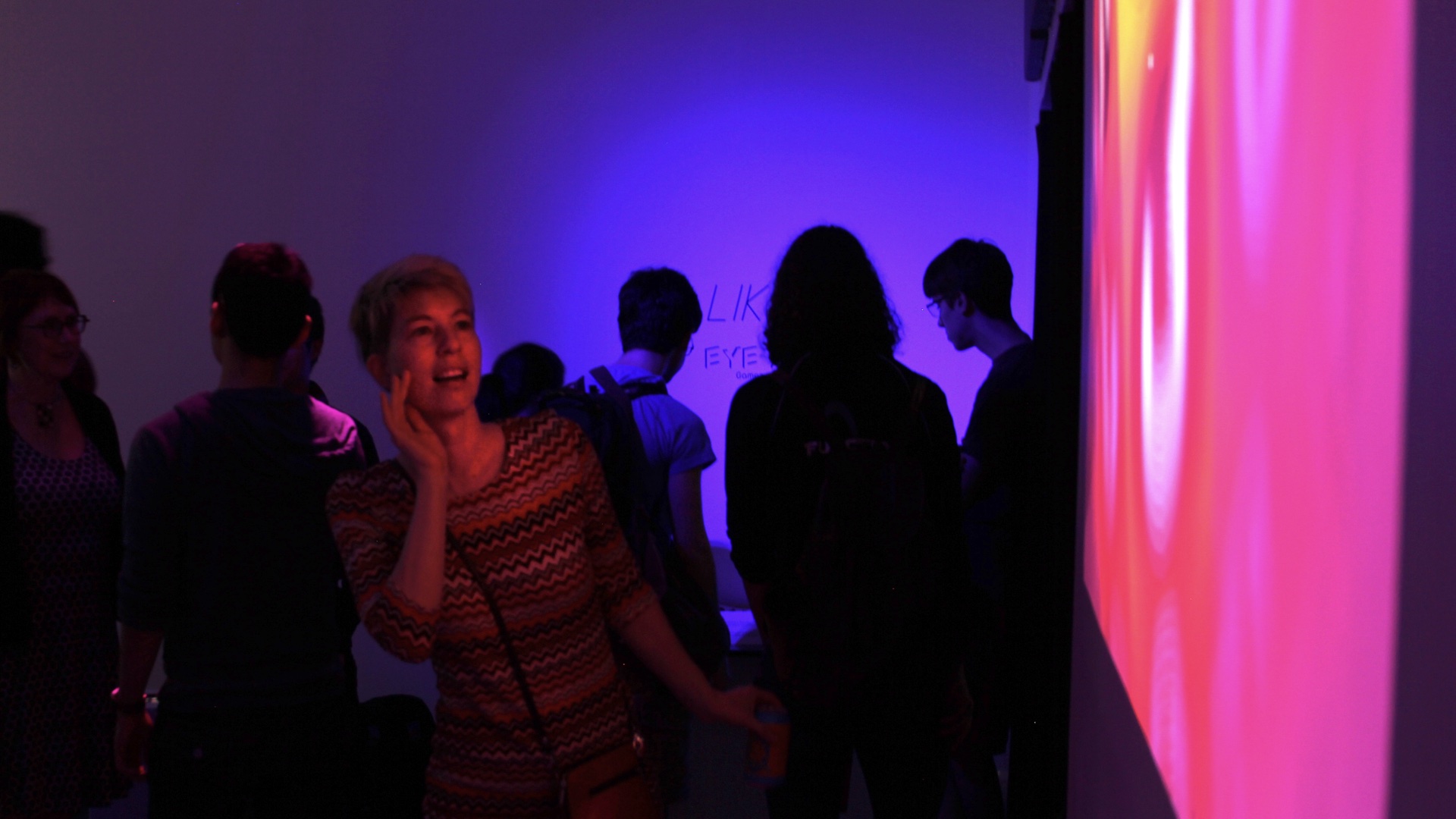
And I can’t stress enough how important is to have a person that greets and welcomes visitors, encourages them to engage with the works.
Sometimes casual visitors just need a bit of permission and I don’t really have that kind of energy or willingness to perform that emotional labor.
Occasionally we also have a volunteer or two helping out.
So I say "we", but aside of that kind of facilitation during the night of the events...
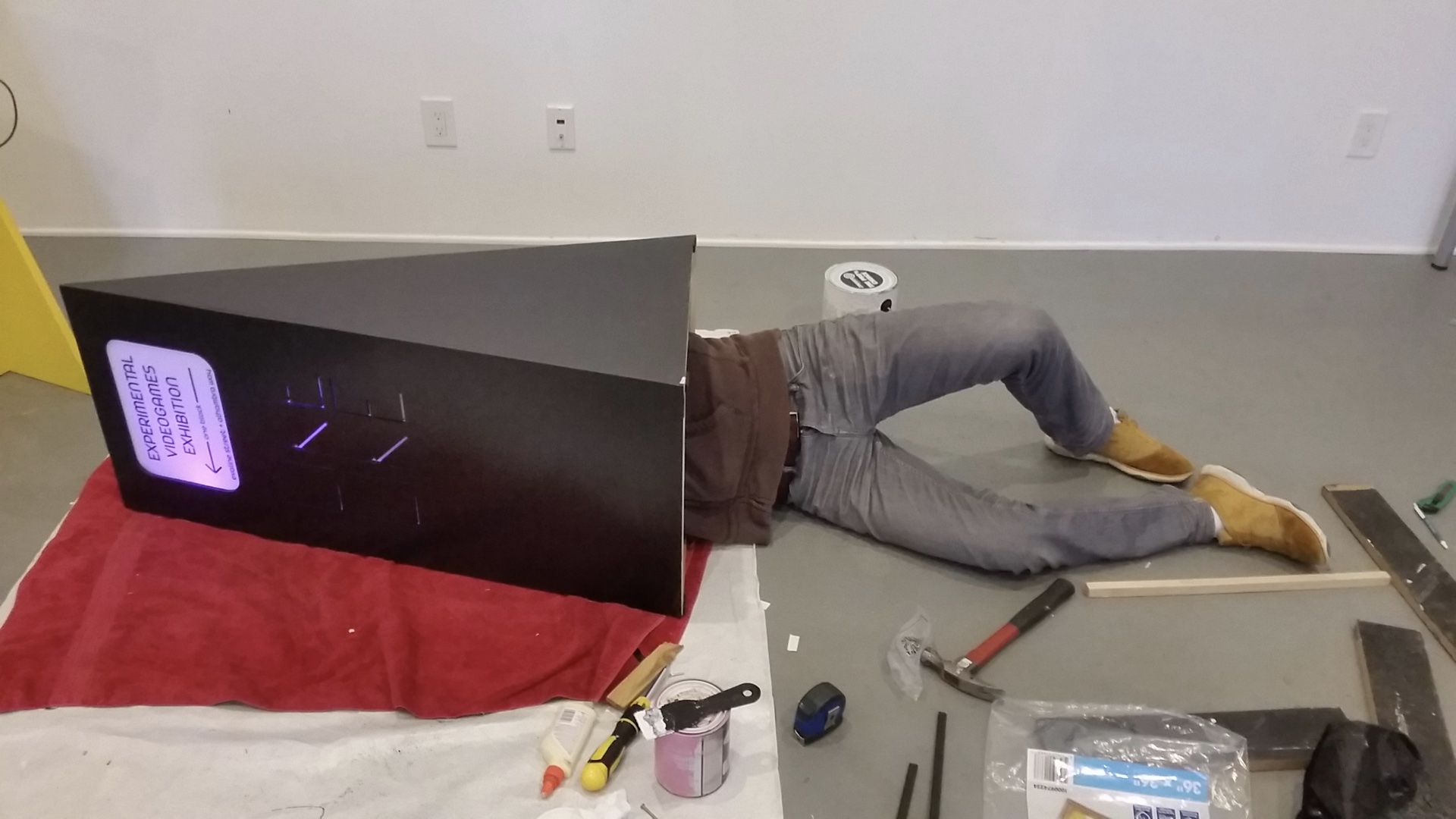
I do pretty much everything by myself. From curation, which is the easy part, to the technical install.
fabrication
grant writing
promotion
copywriting
graphic design
merchandise creation
documentation
And I often produce or co-produce special content for the exhibitions.
Right now we have an augmented ping pong table installation programmed by musician and artist Jesse Stiles.
But I had to figure out all the physical and logistical stuff.
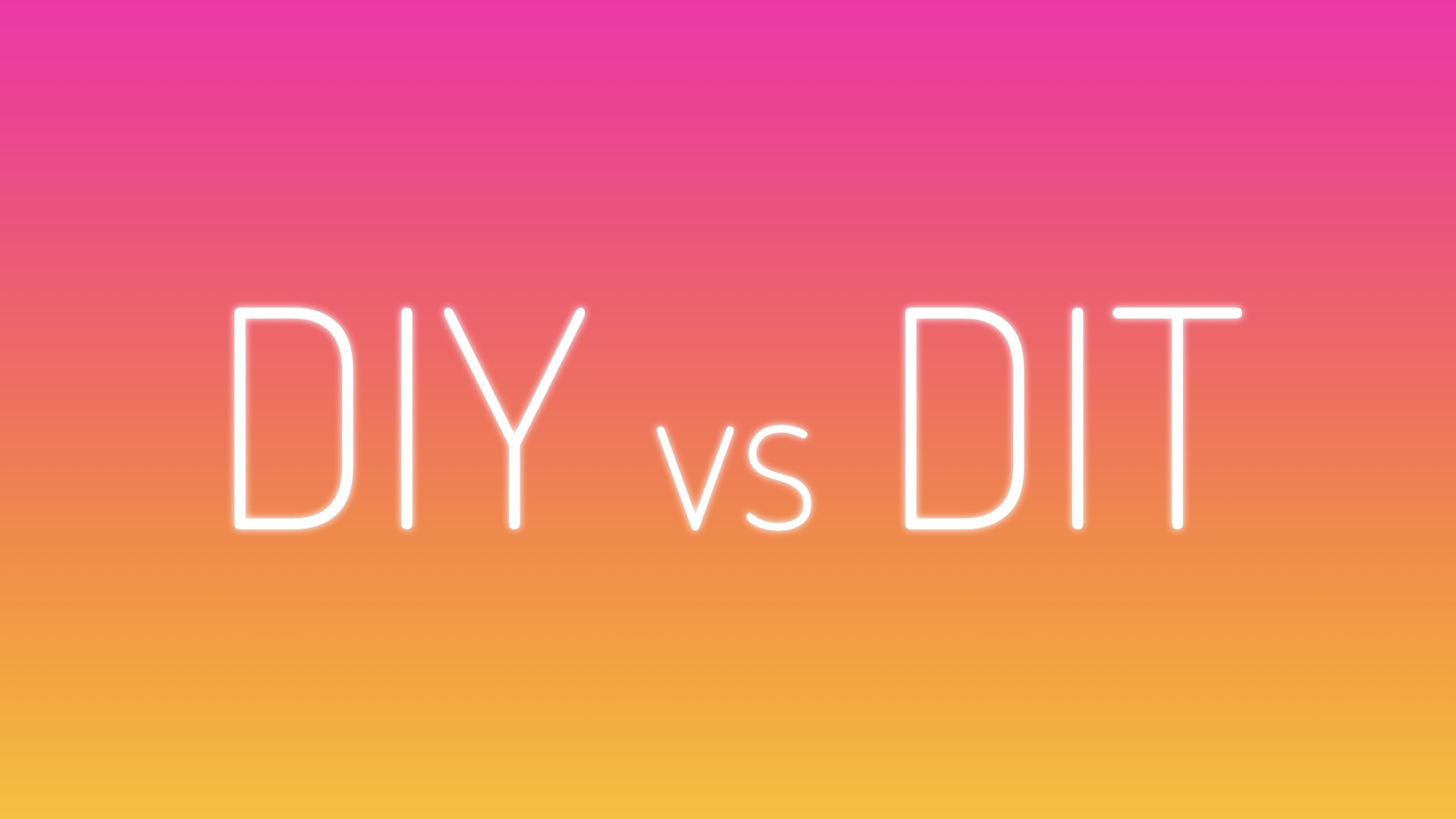
So this is an almost pathological pursuit of DIY.
And DIY is not always a good idea. Do it together if you can (DIT).
But this is basically my creative constraint.
In terms of time management, I should say that this is not my job.
LIKELIKE is a side project of a side project. My real job is teaching art, video, creative coding and games at Carnegie Mellon University.
(This is student work from many years ago)
It pays well, it’s a technically a full time position but not entirely, because it gives me quite a lot of free time (most notably the entire summer) to pursue my personal practice, which is considered research and part of the actual job.
My main hobby is making games as Molleindustria. Mostly small experimental games.
I should also say that I don’t have children and that makes things easier in terms of free time.
But I’m also kind of lazy and relaxed. And I’m kind of old.
A lot of what LIKELIKE is determined by this laziness and oldness.
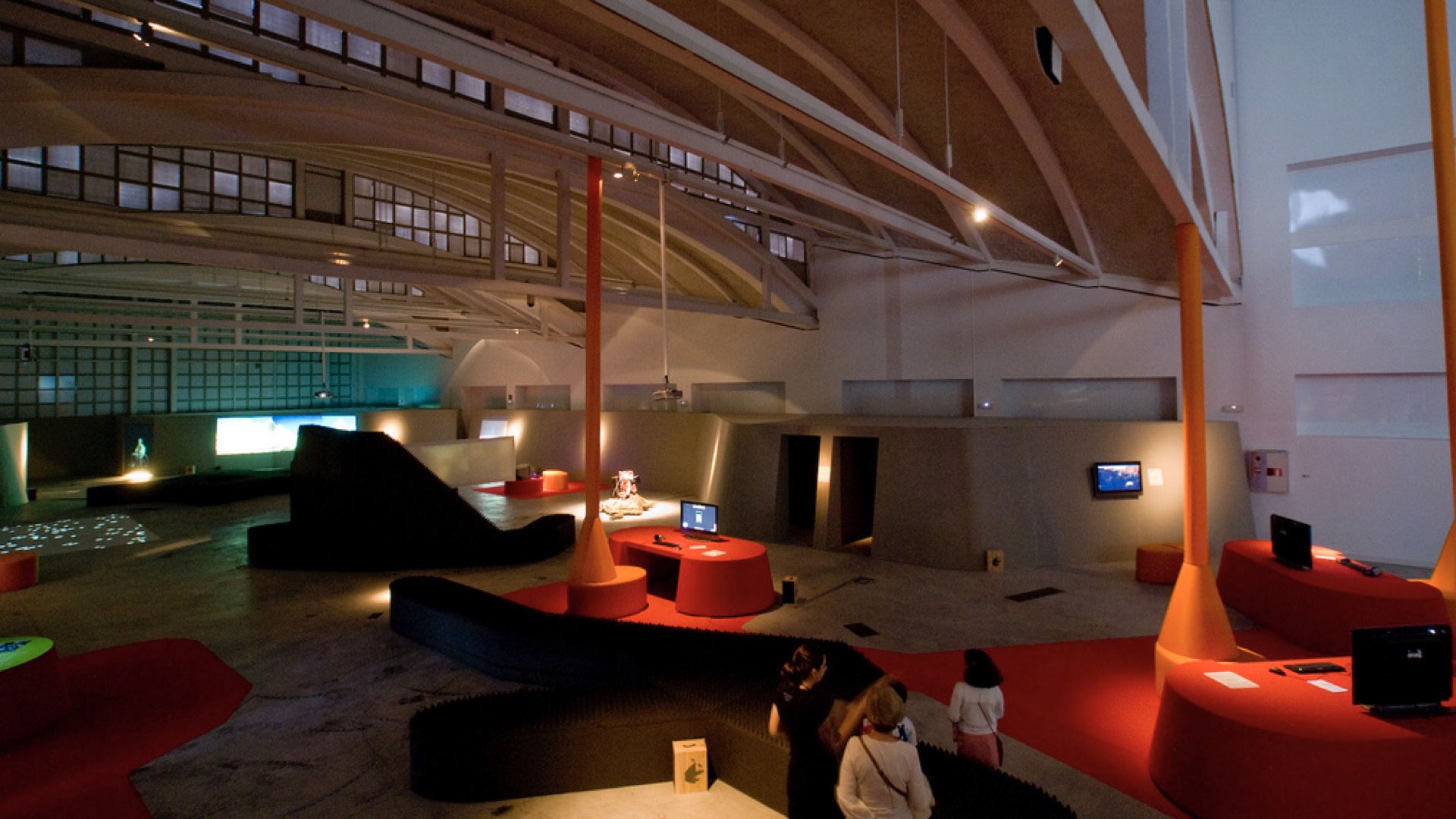
I started making games in 2003 before the indie revolution, and before there was an international infrastructure for indie games.
So my work ended up in a variety of non-industry contexts. From big budget game exhibitions...
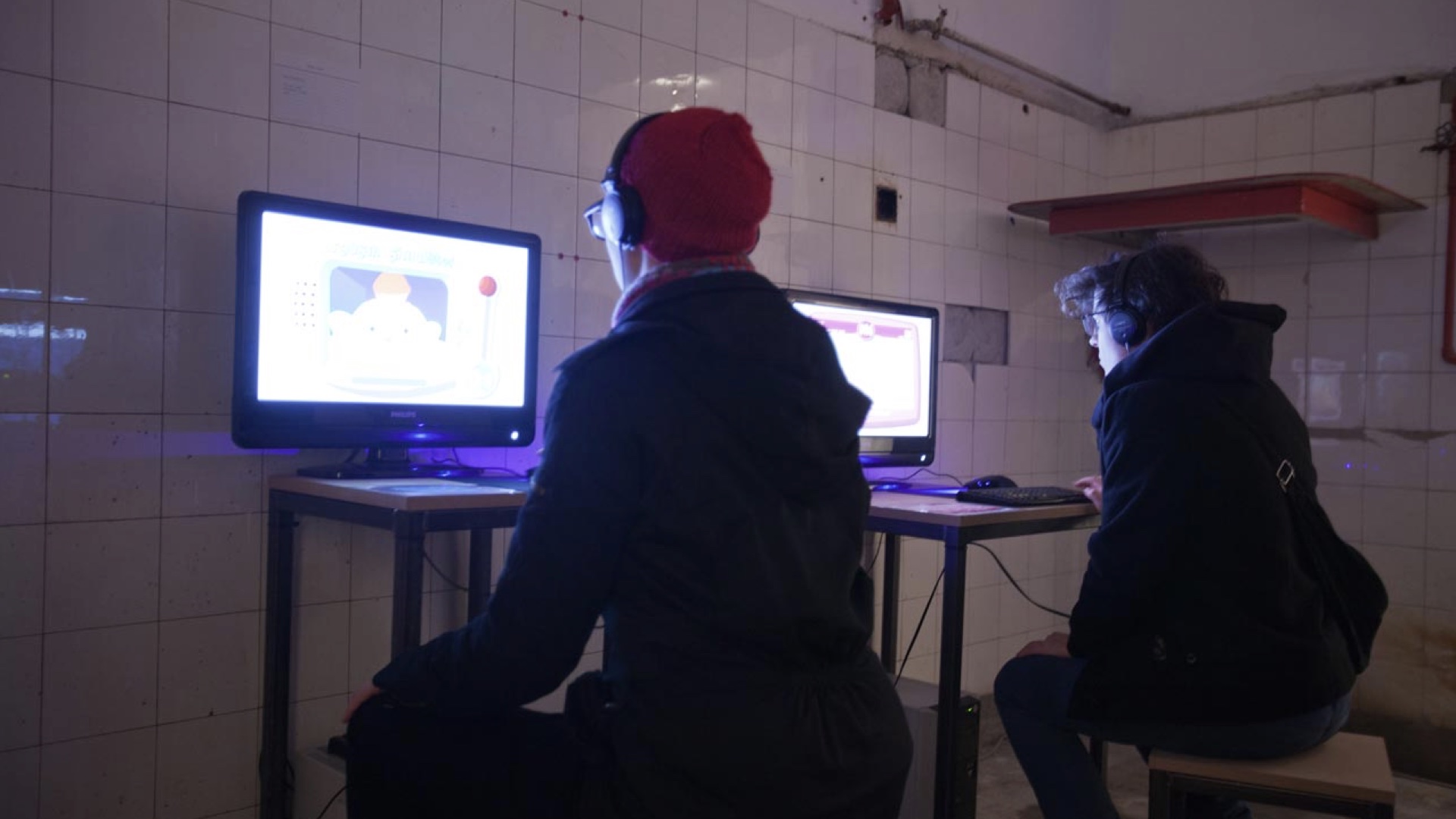
To informal DIY spaces. This was a porn game exhibition in a former bathroom.
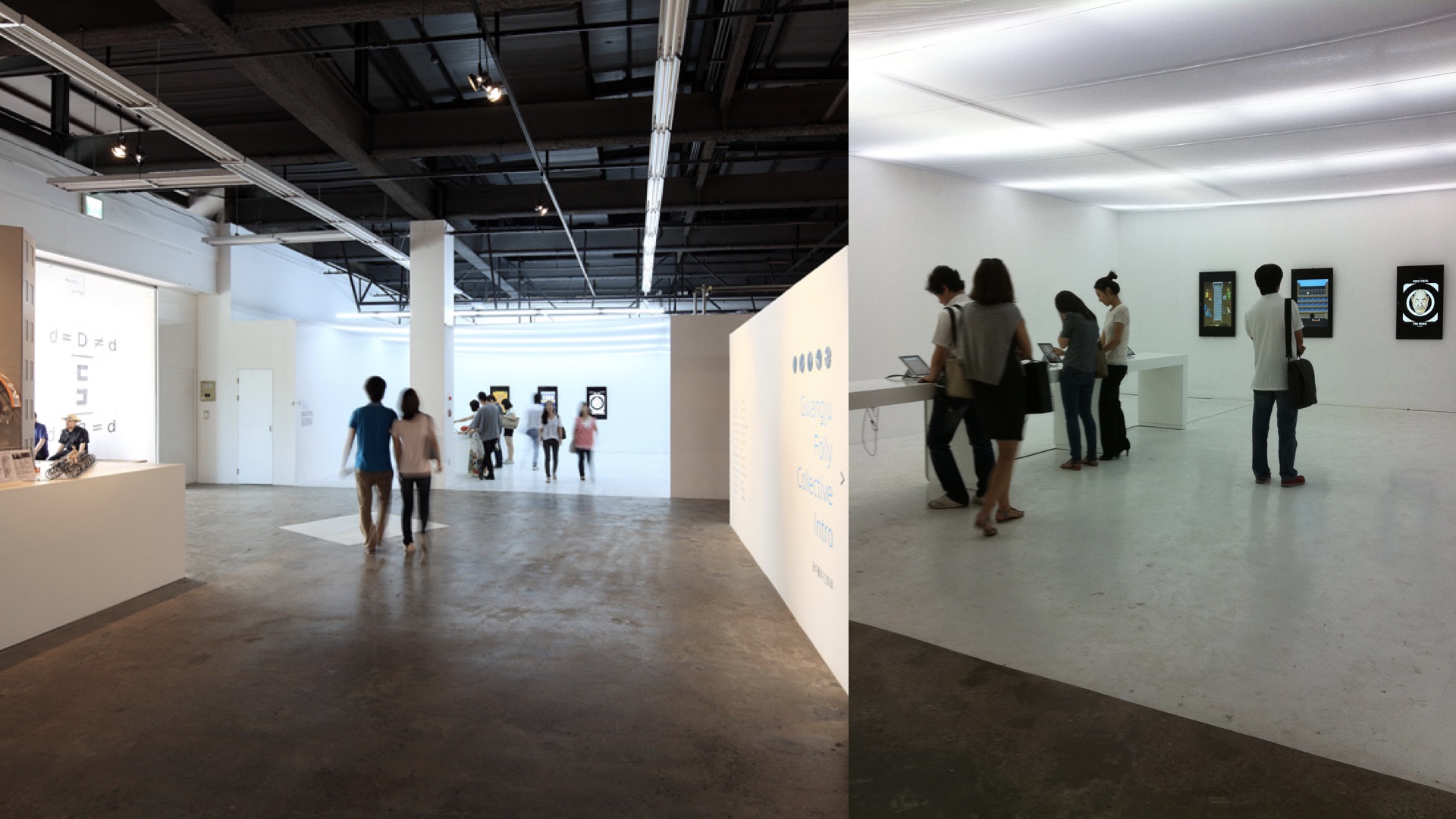
Or fancy design shows. This one was in Korea.
I just told the curators "can you set up a space for my phone game that looks like an Apple store?"
An they did it!
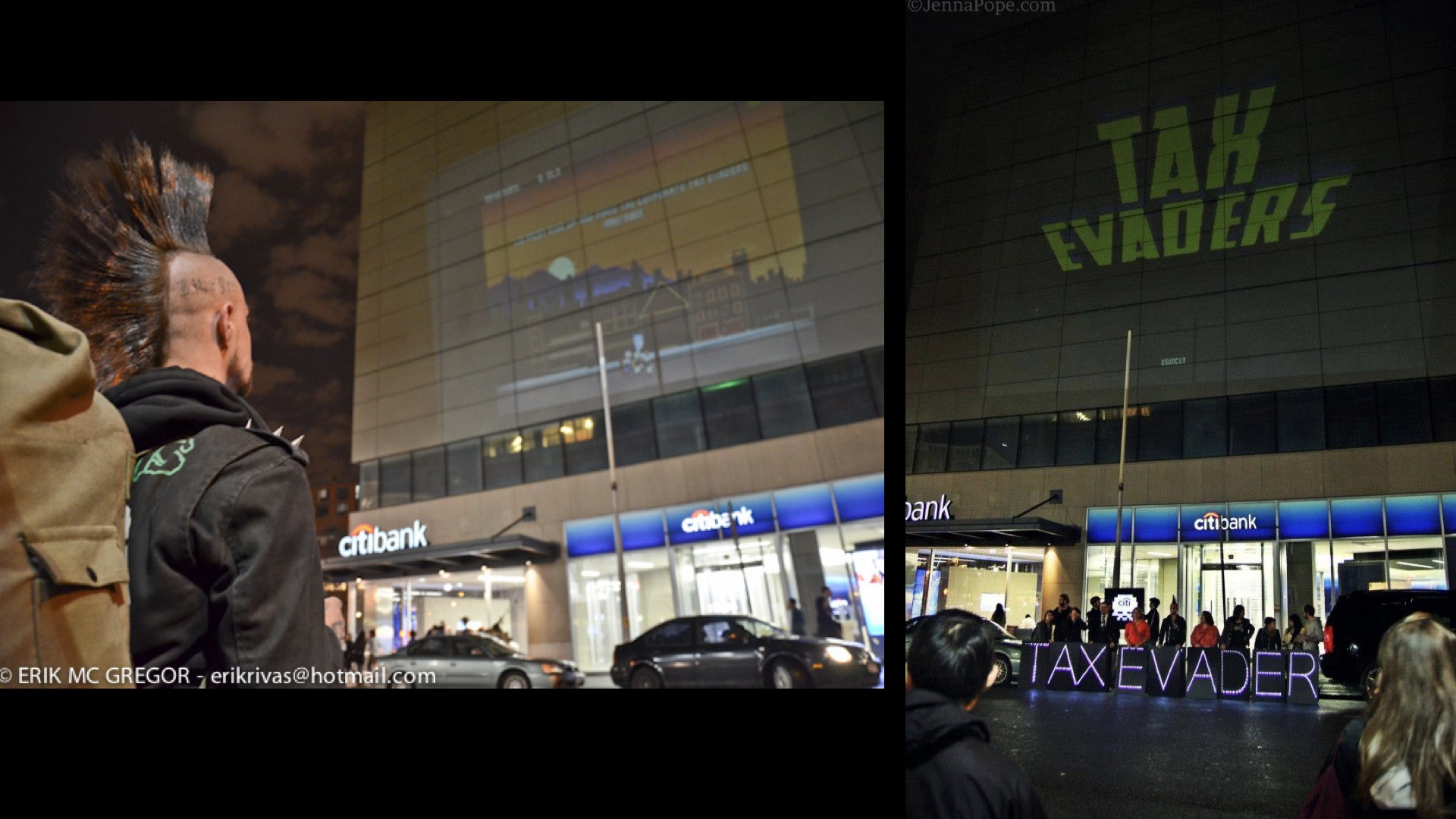
This was a guerrilla projection, part of a Occupy Wall Street spin-off campaign
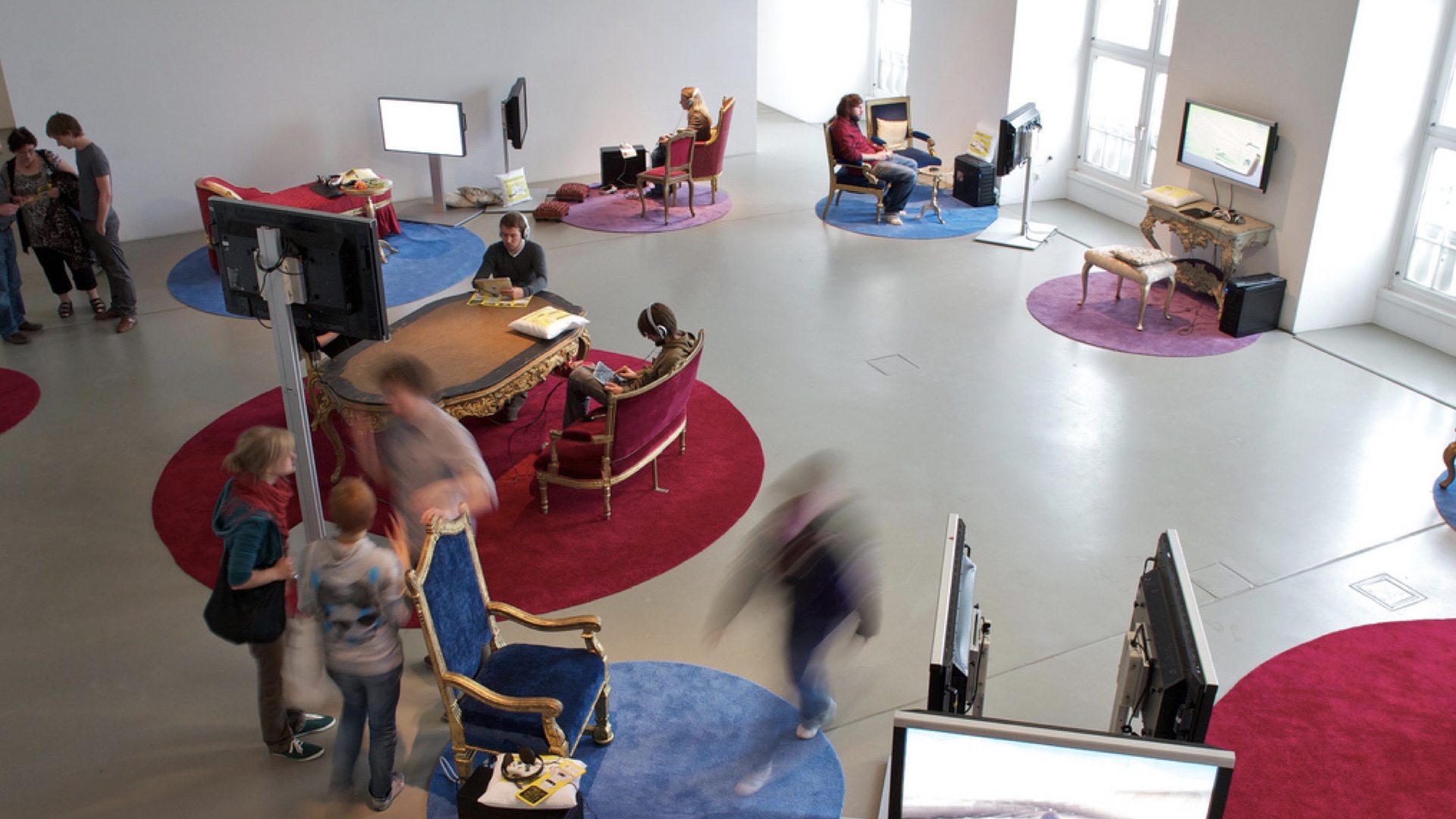
This was in Kassel Germany, in one of the oldest museums in Europe. The organizers matched the rococo style of the location.
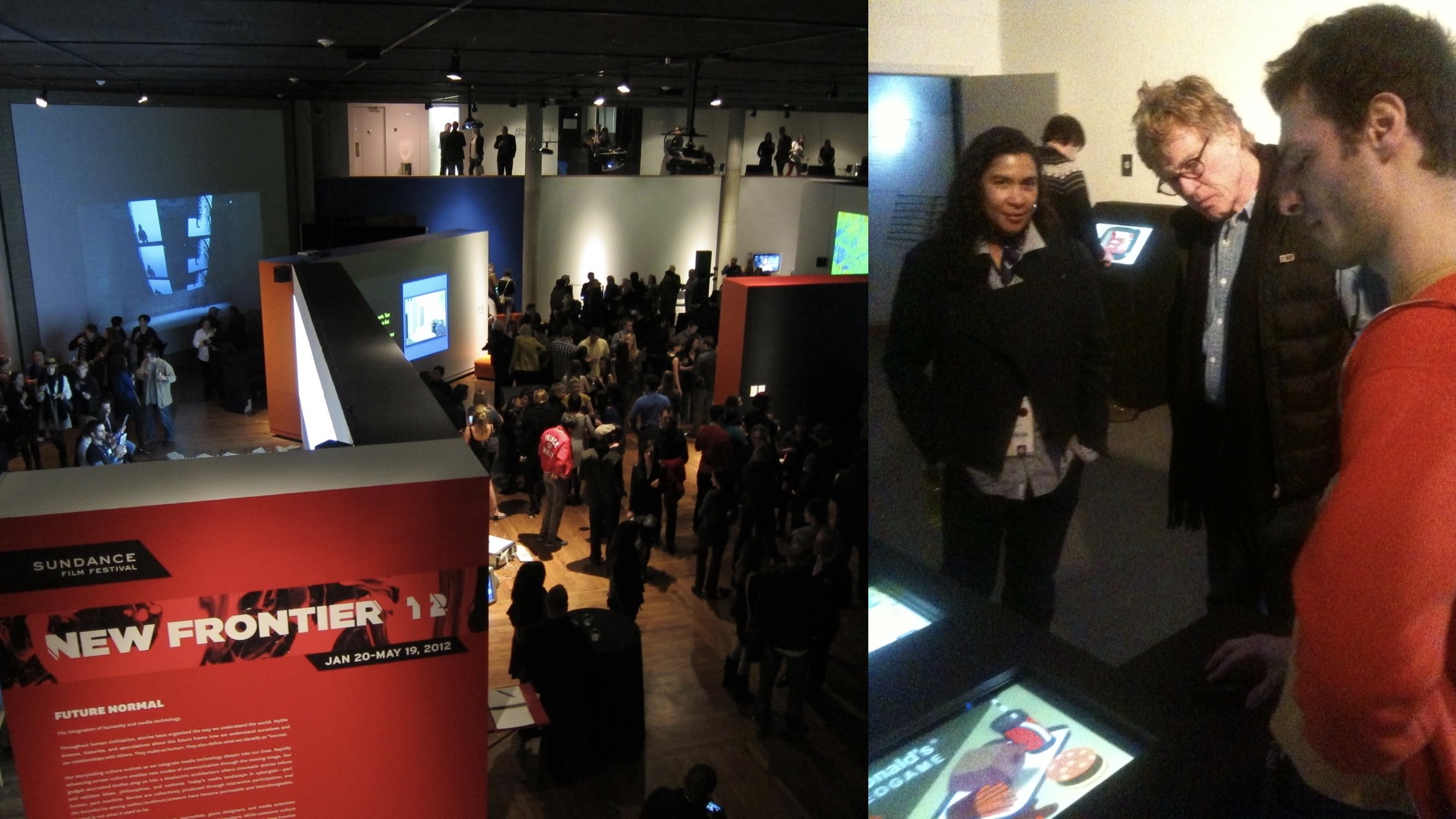
So I had the privilege to see how different institutions and communities exhibit games.
Organizations with very different budgets, agendas, and audiences.
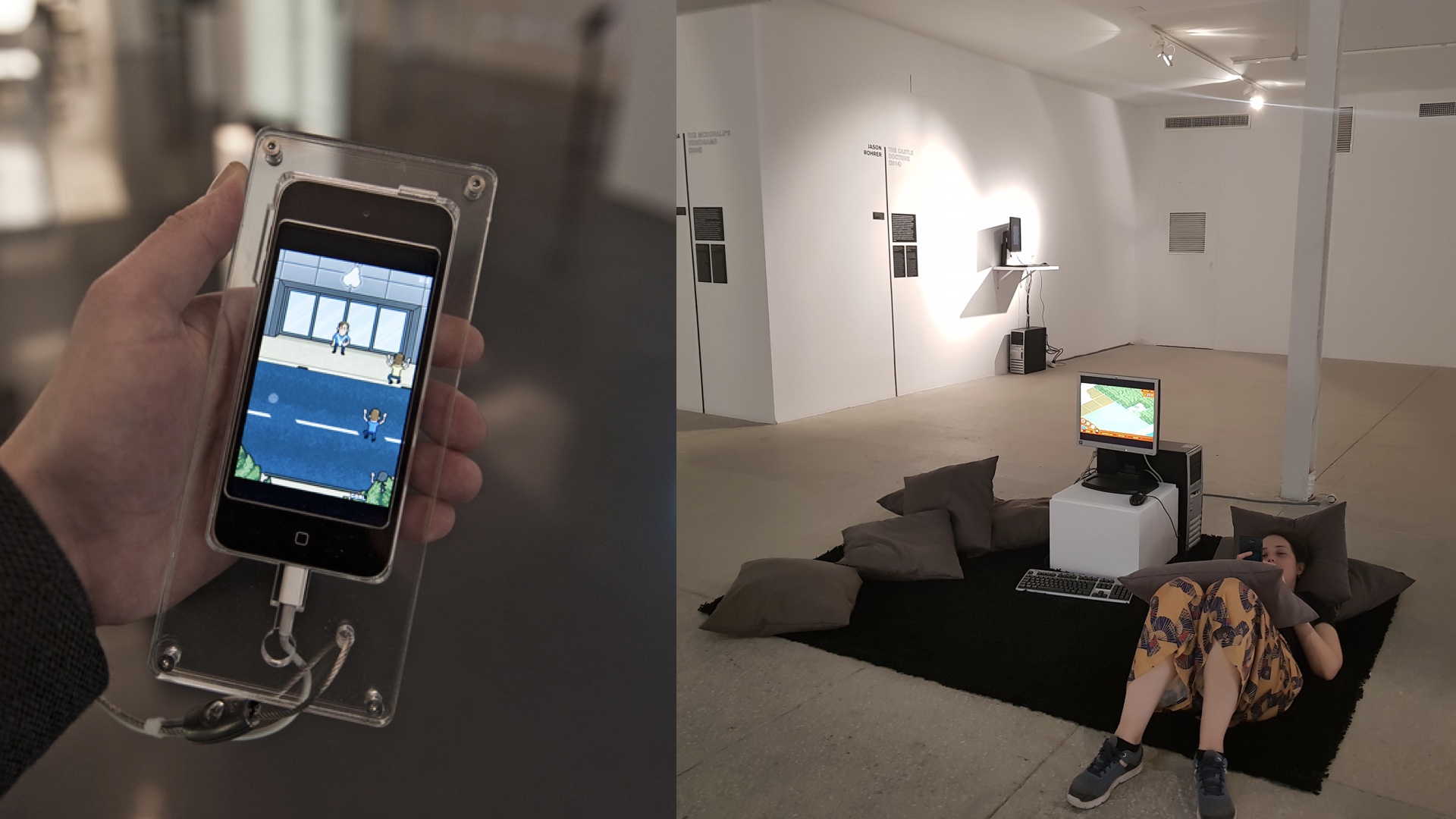
And I learned a bunch of practical things: anti theft solutions, ergonomics, documentation...
What works and what doesn’t.
For example this picture shows a person NOT playing my game, just checking their phone.
Because the installation is comfy and galleries don’t have many comfortable spaces.
That’s fine.
But I personally wouldn’t use that as an official exhibition picture.
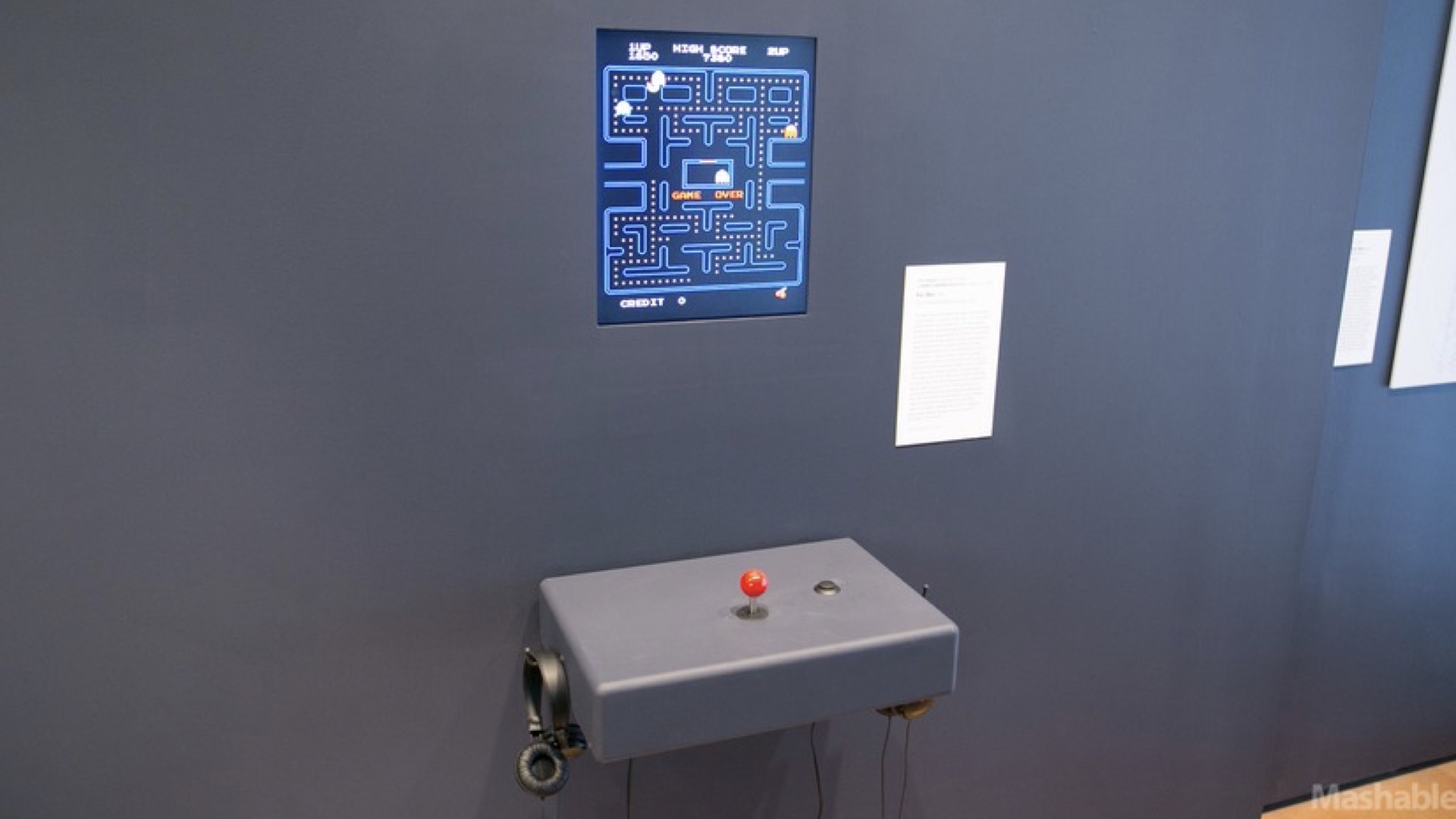
In general, I’ve always suffered a tension between the fine art treatment of games and the indie commercial infrastructure.
This is at the Museum of Modern Art in New York. I call it the MoMafied version of pacman.
It’s austere, institutional, trying hard to make it look like hight art. They are obsessed with cultural relevance, so there is a long wall text explaining why there is a GAME at the MoMA.
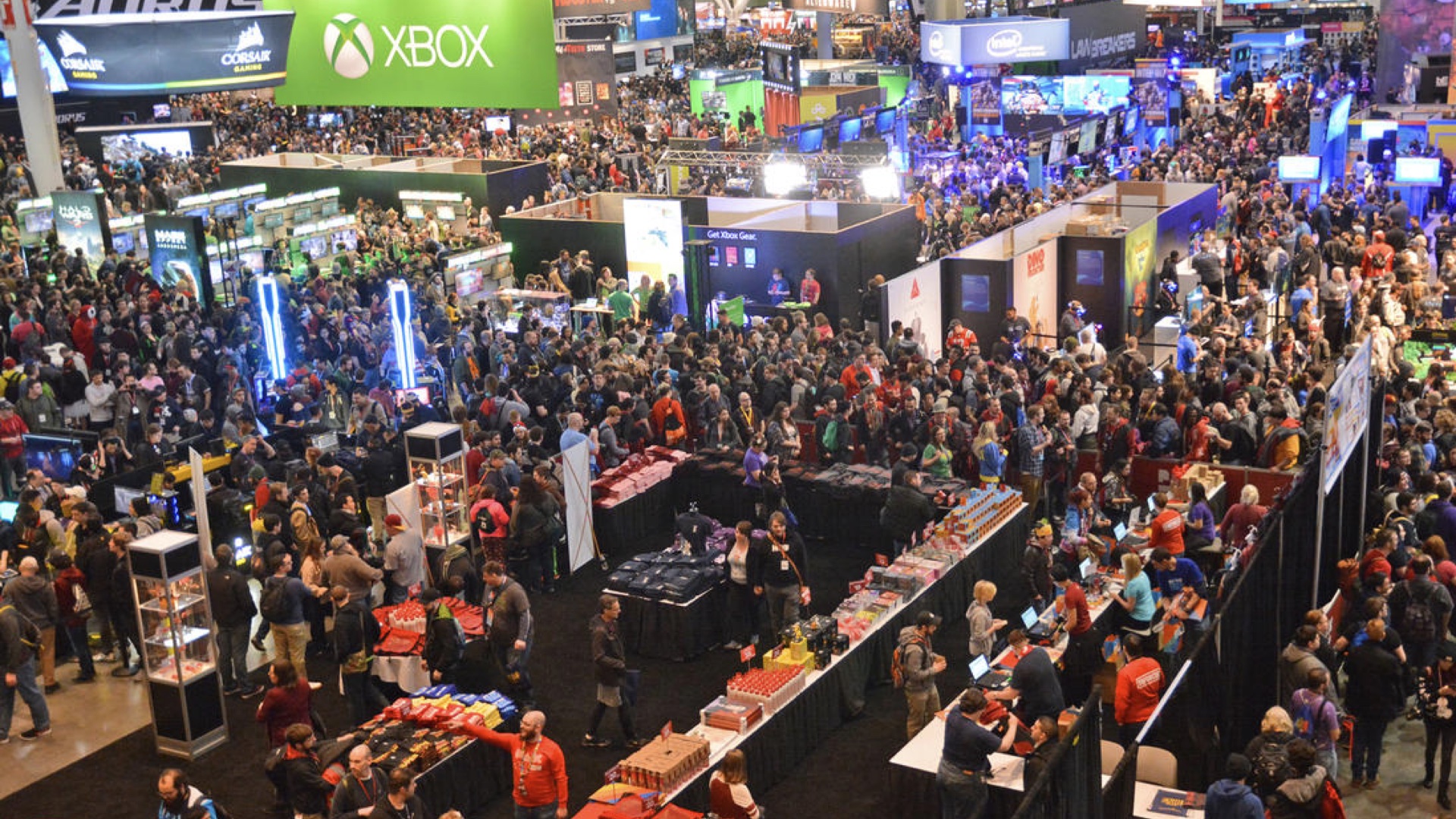
And on the opposite side of the spectrum you have the loud, crowded consumer expo.
Commercial indies have to deal with this context in order to survive.
But many experimental, personal games cannot be played well in a space like that. And maybe they shouldn’t even target an audience of hardcore gamers who travel to see previews of videogames.
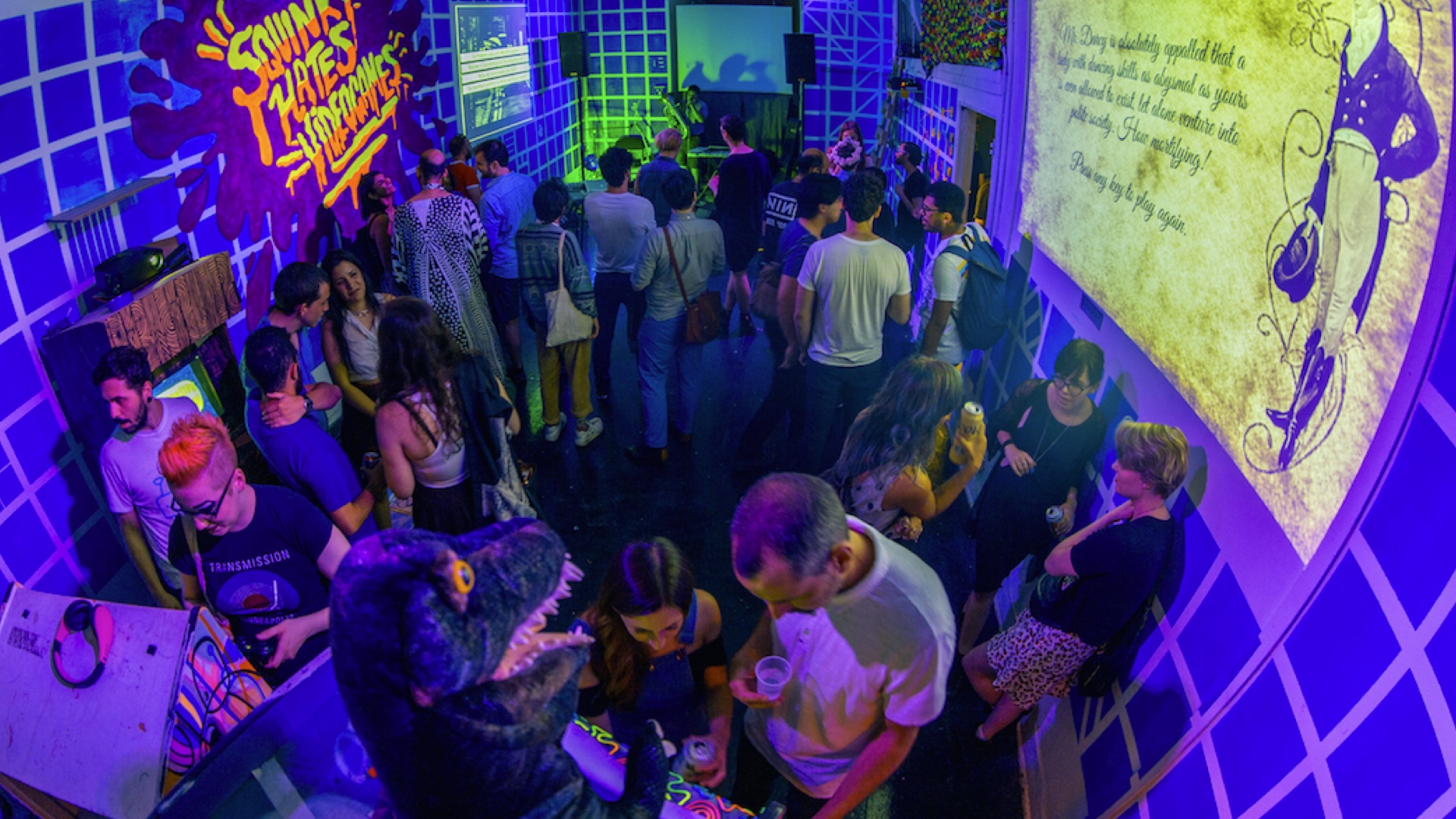
There are only a few venues and events that are located between these two worlds
Like Babycastles or other initiatives represented here at GAIA.
But they are in big cities cities that have a critical mass of niche audiences.
Before LIKELIKE I organized a couple of game events in connection to music festivals, activist festivals.
This one was in a punk venue. It was fun but it was a lot of work. I hated carrying around equipment and cabinets, pulling extension cords, figuring out the space every time, dealing with the venue's idiosincrasies.
I’m old and my back hurts, so I knew I needed a space that I could control and access at my own pace.
The other problem with being old is that my friends are old too.
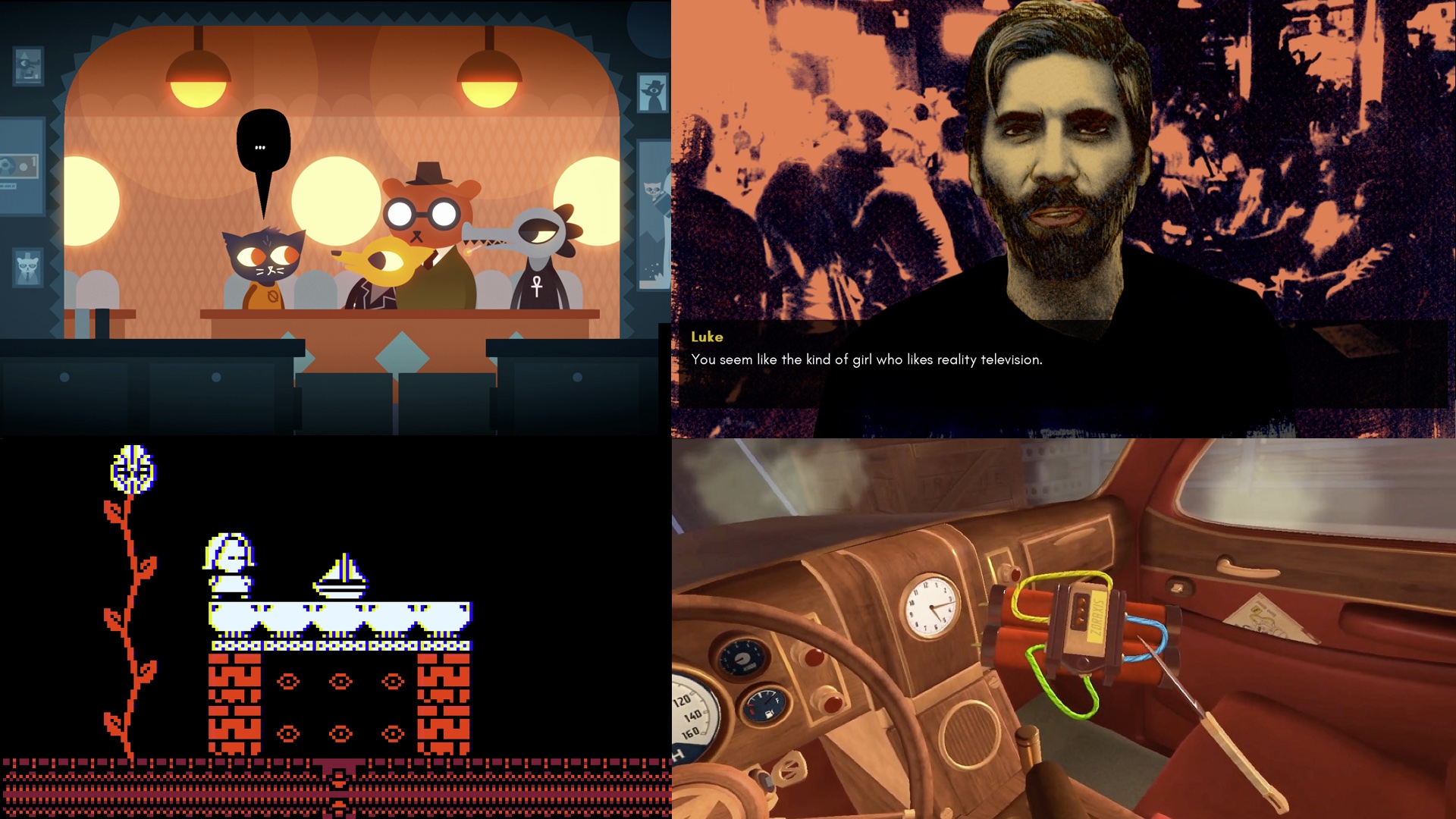
There are a lot of amazing game people in Pittsburgh but they all have their own careers.
I’m already bad at asking for help and I cannot be like: "hey Scott Benson, hey Angela Washko, hey Jesse Schell... let’s all do this punk rock thing that doesn’t make any money"
These people all are busy doing their own things, they already established a path for themselves.
Heather Kelley’s sensory direction fits with her research, but painting pedestals not so much.
It would be different if my friends and I were in our early 20s, just starting up our careers.
But that’s not my case so I knew I had to do most of the work on my own.
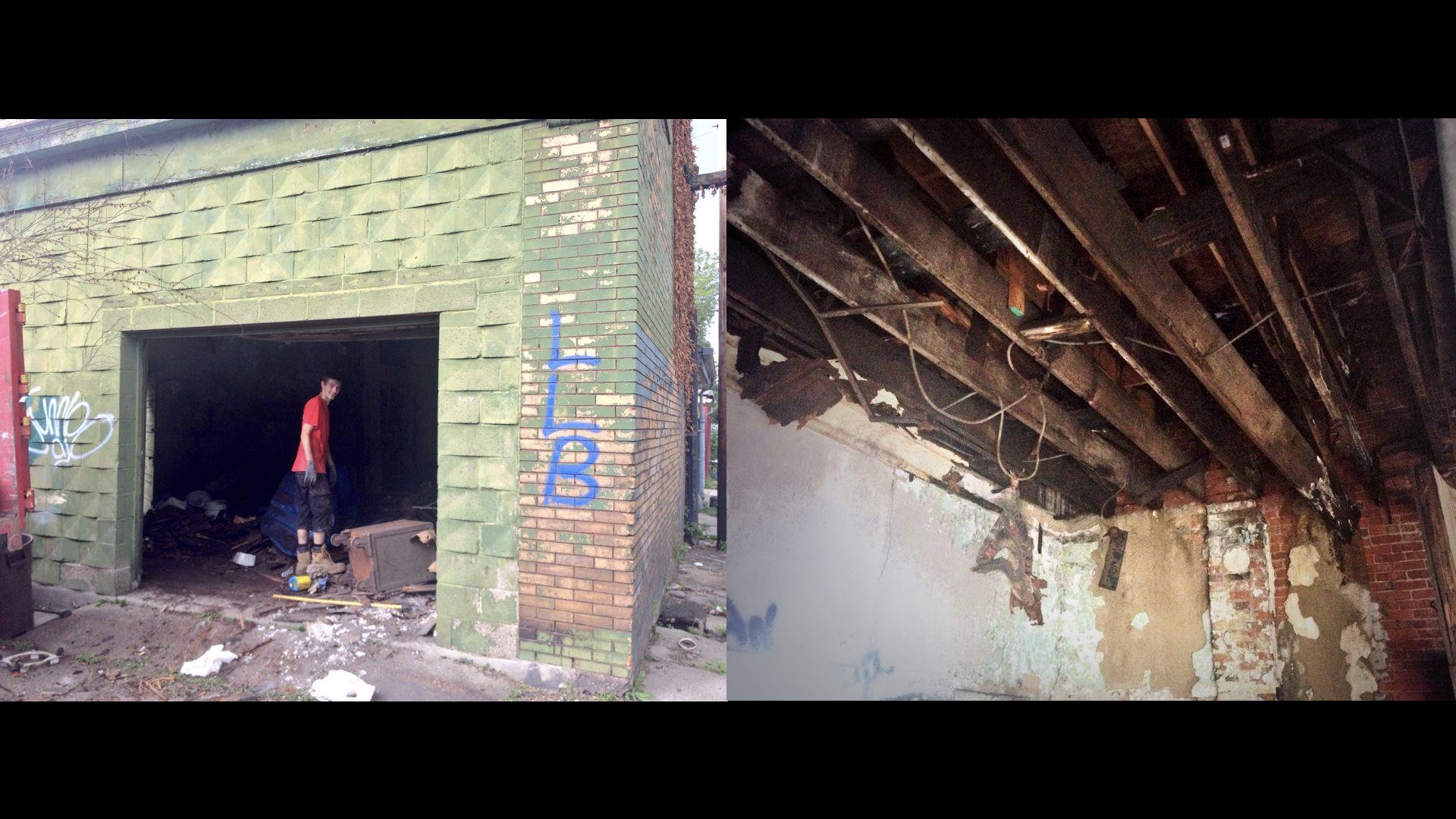
One advantage of being in an uncool, deindustrialized city is that real estate is relatively cheap and easy to find.
Even if I didn’t own a property, it would be easy to find a similar space in Pittsburgh for rent or even for free.
When I bought a house, my garage was falling apart and I had to fix it anyway. So I decided to invest a little bit more into turning into a flexible exhibition space.

Everything I did was basically determined by one principle:
I want to do the least amount of work possible.
I want to put up shows quickly and cheaply.
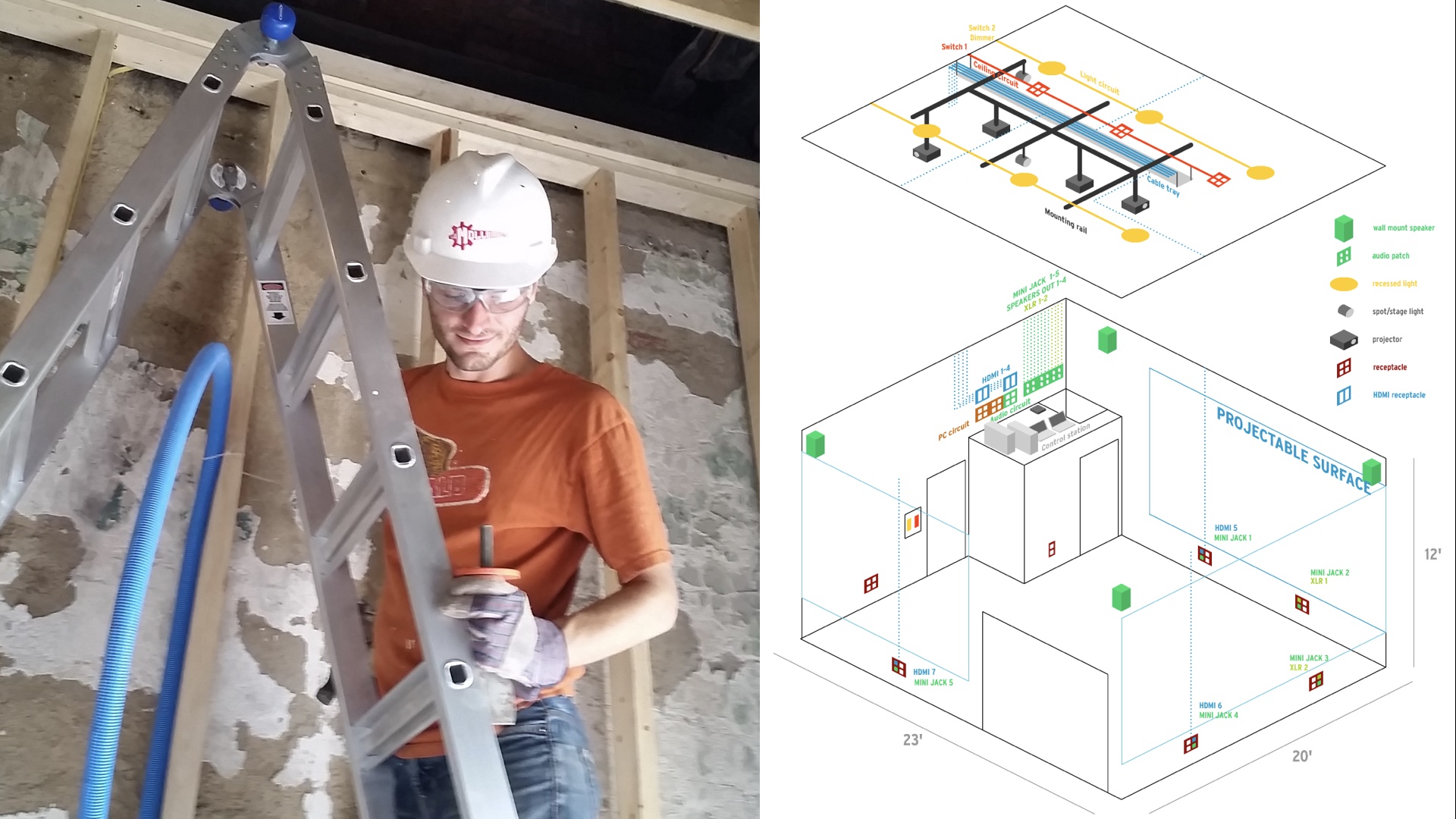
That meant practical things like running audio and video cables inside the walls, installing a lot of outlets, even on the ceiling.
I hired professionals for standard stuff like drywall, but I did some work myself for the specialized stuff.
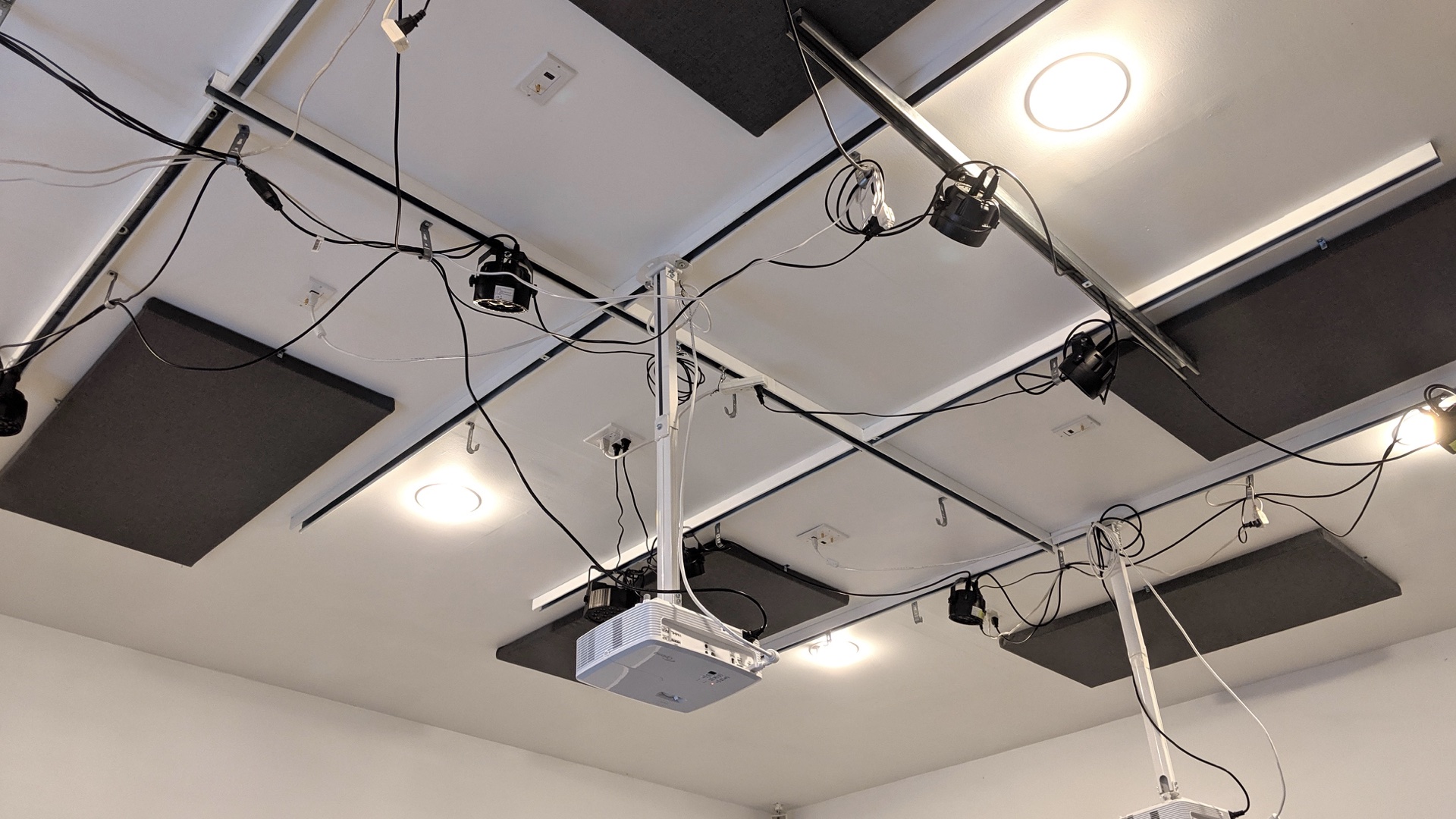
I made my own sound absorption panels for example.
Acoustics are common problem in galleries, because they are mostly empty and the reverb is terrible.
I installed a unistrut grid on the ceiling. Those metal rails are like $50
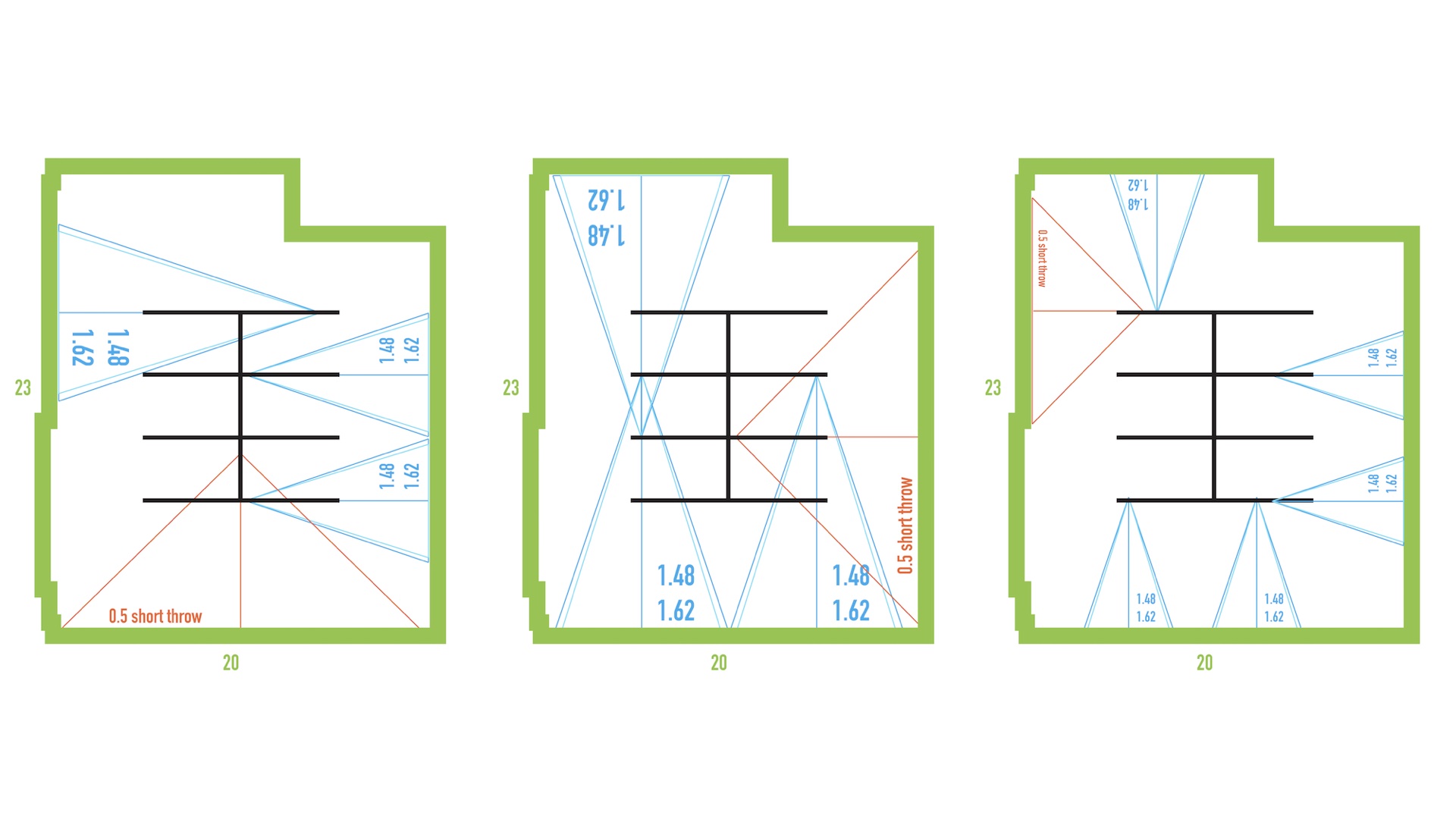
They can support various configurations of projectors and lights.
All the walls are finished and smooth to work well as projection surfaces, we never ever paint on them, we never ever hang things on them.
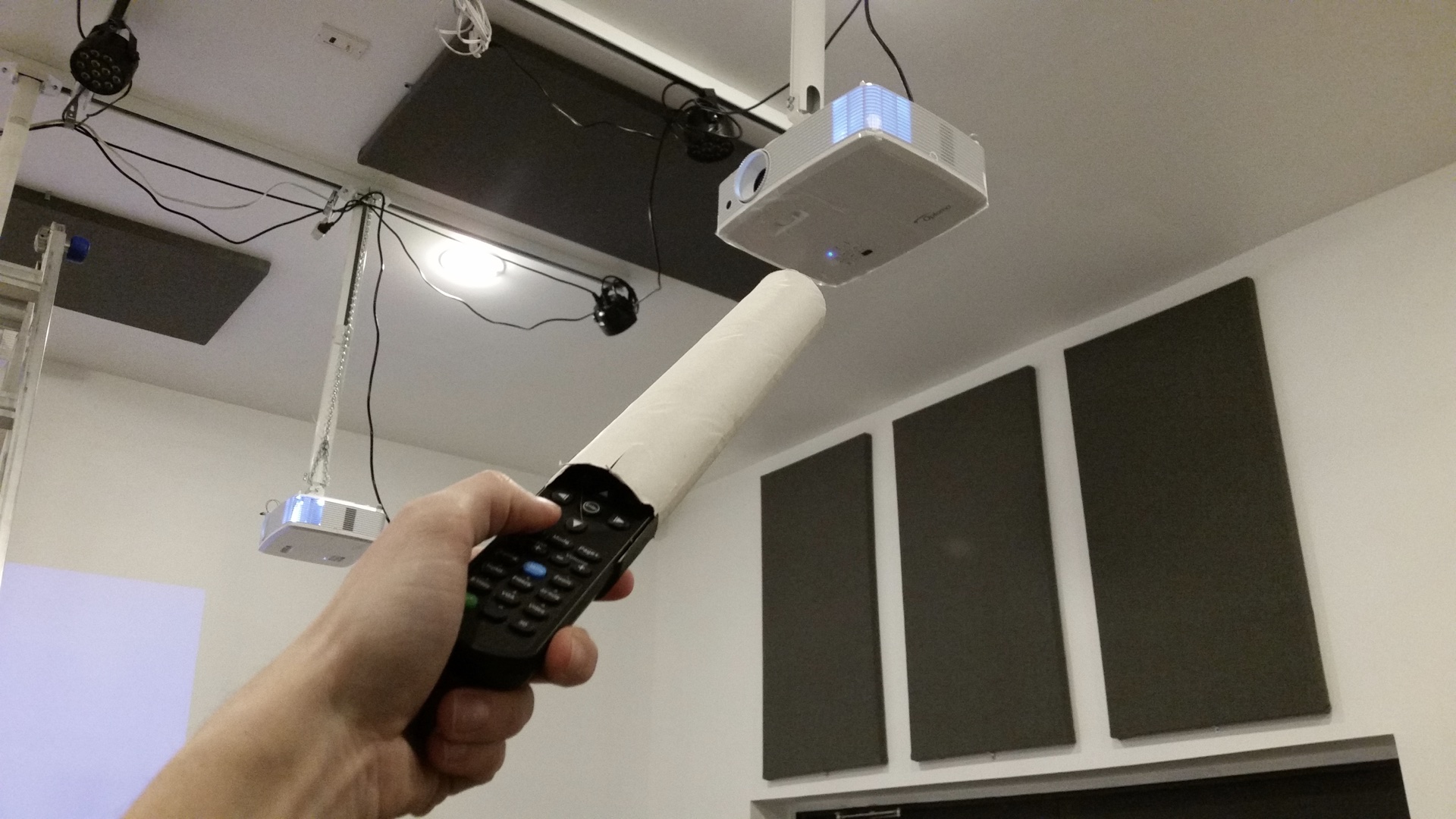
By the way it’s cool to have multiple projectors of the same model for visual consistency.
The problem is that the remote controls them all at the same time. So I use a cardboard tube to aim at one. That’s the same principle of the Nintendo light gun.
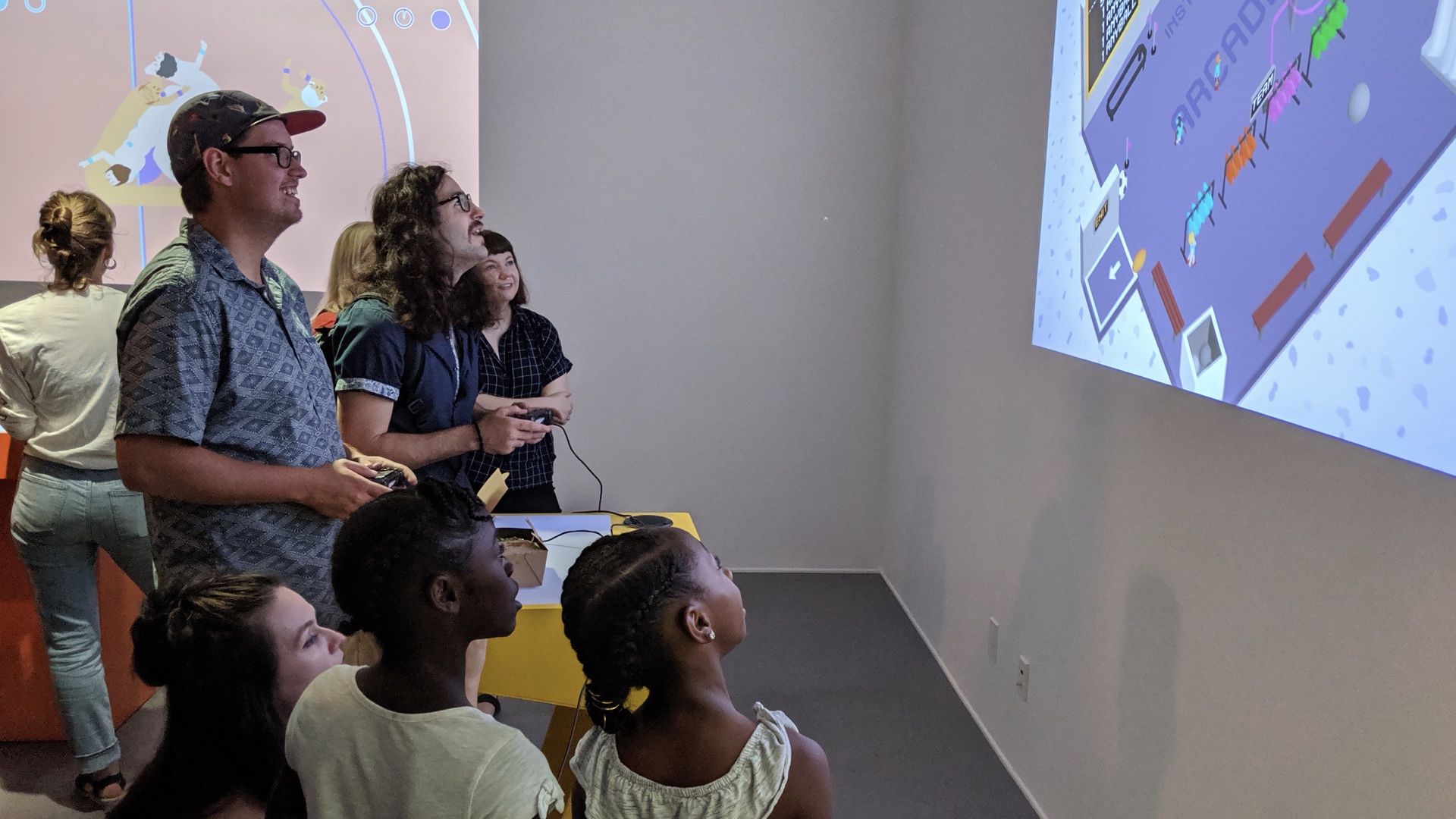
Projectors have their own particular issues (light control, distance to wall), but once they are up, they are easy to adapt to various layouts.
And they facilitate spectatorship: you don’t feel like you are crowding the players like with cabinets or screens.
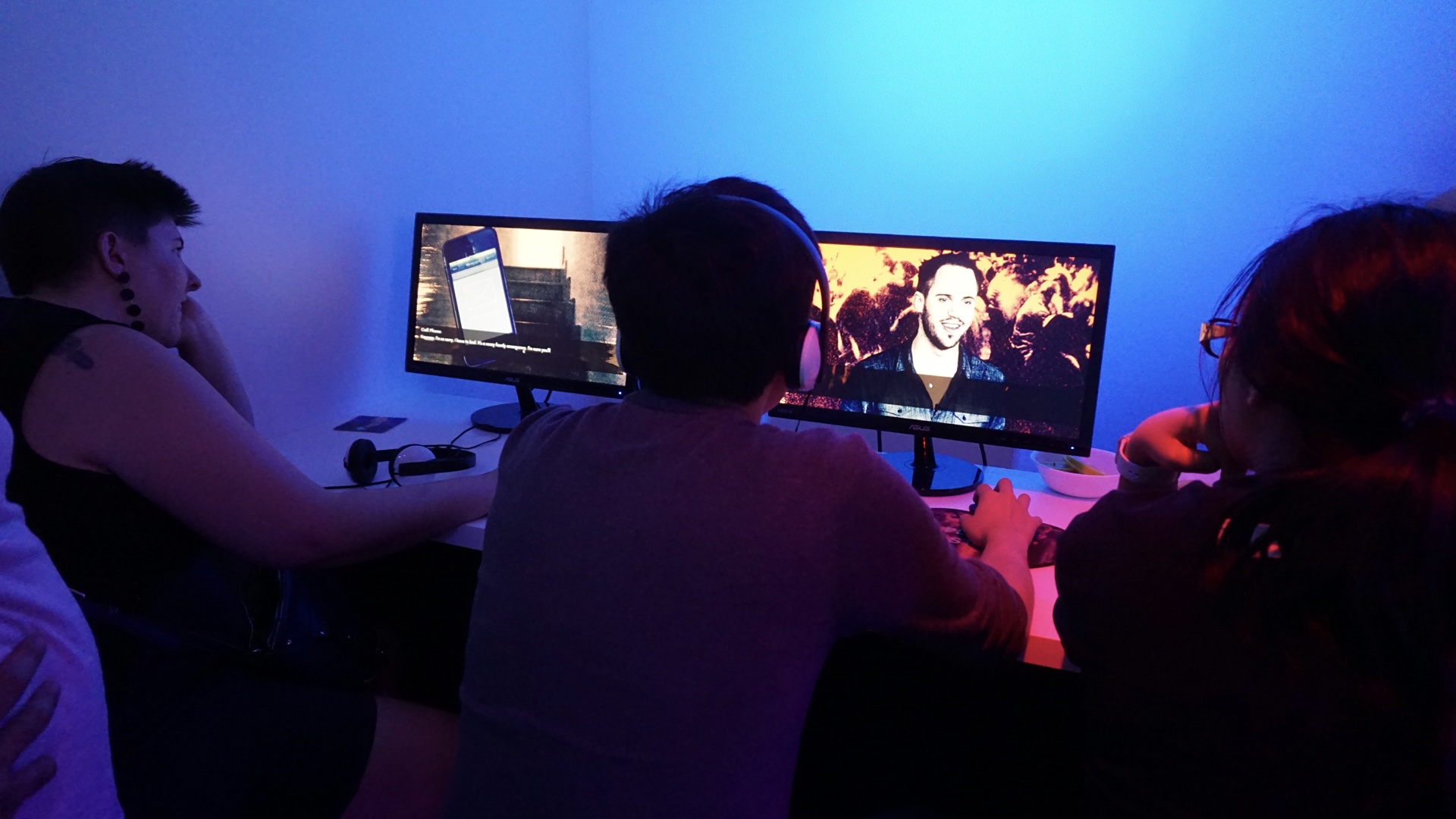
Obviously some games require a more private, intimate experience. We do what we can to accomodate that. For the Game: the Game using headphones and seats helped quite a bit.
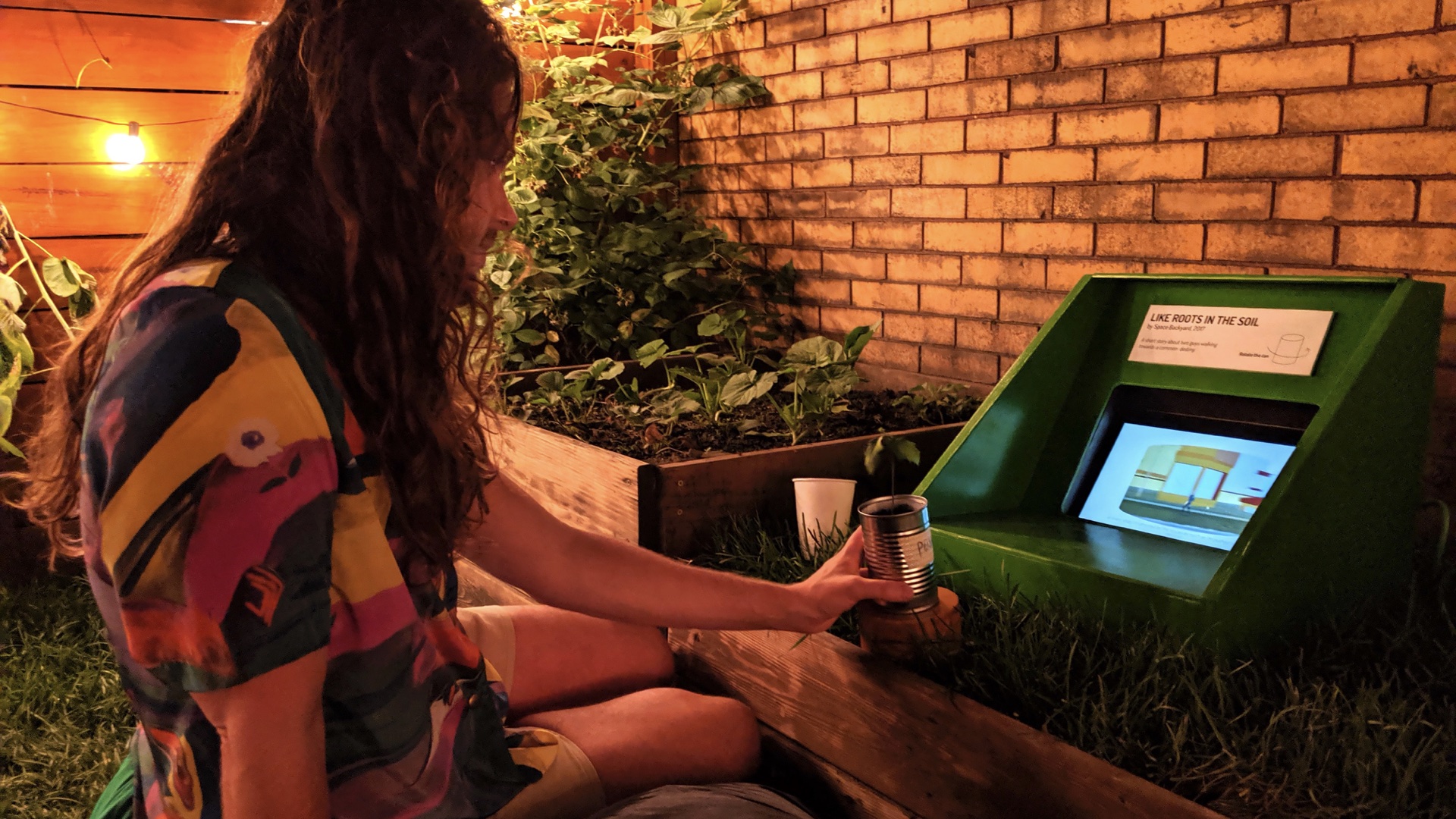
This game, Like roots in the soil, was moved to the backyard, on a garden bed to allow for a more quiet, contemplative experience.
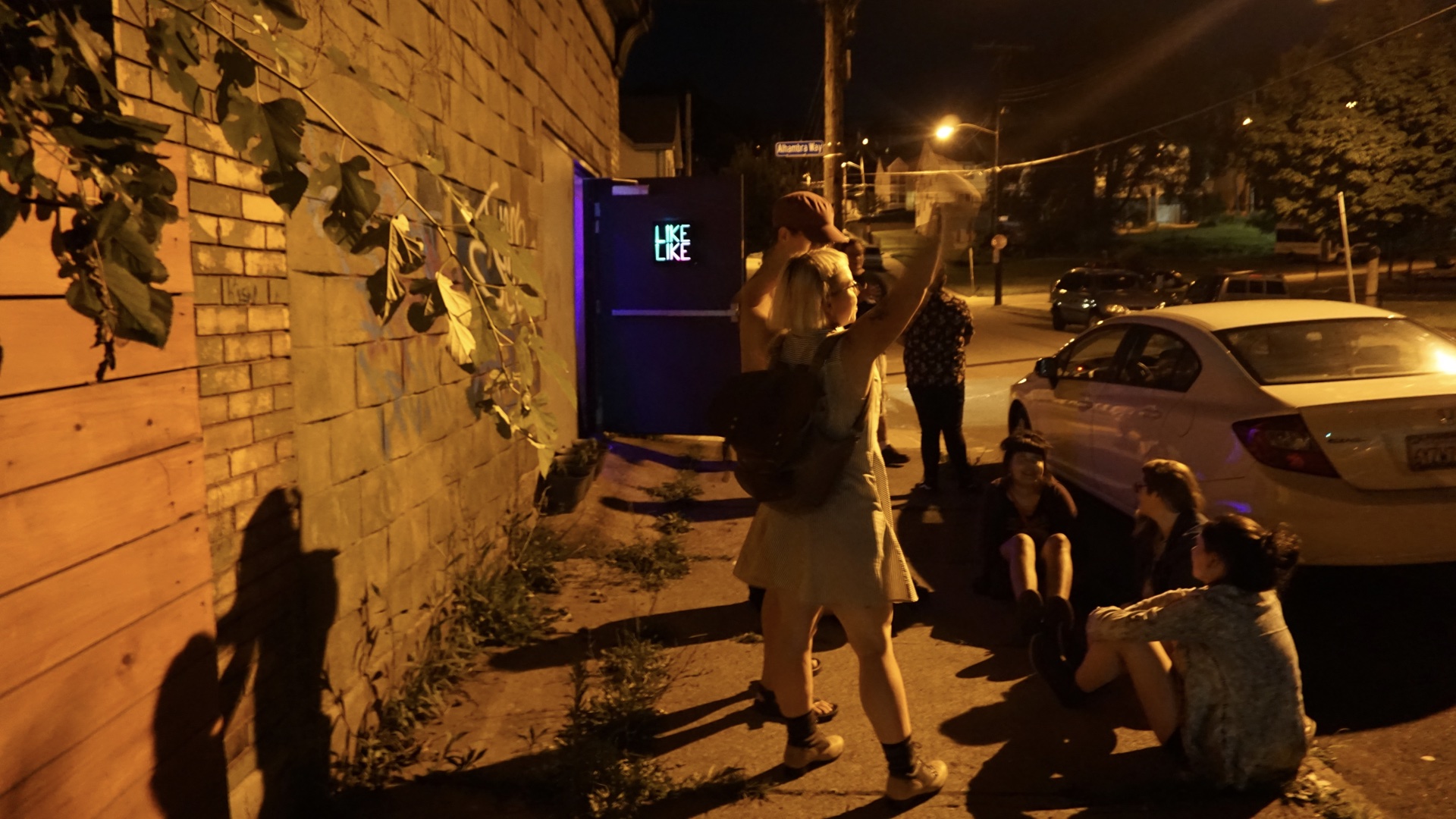
By the way the backyard and the sidewalk are our spill-out spaces.
The main room can be crowded and overwhelming and loud. All event organizers know that chill spaces are important. Spaces when you can take a break and have a chat before you return to the main event.
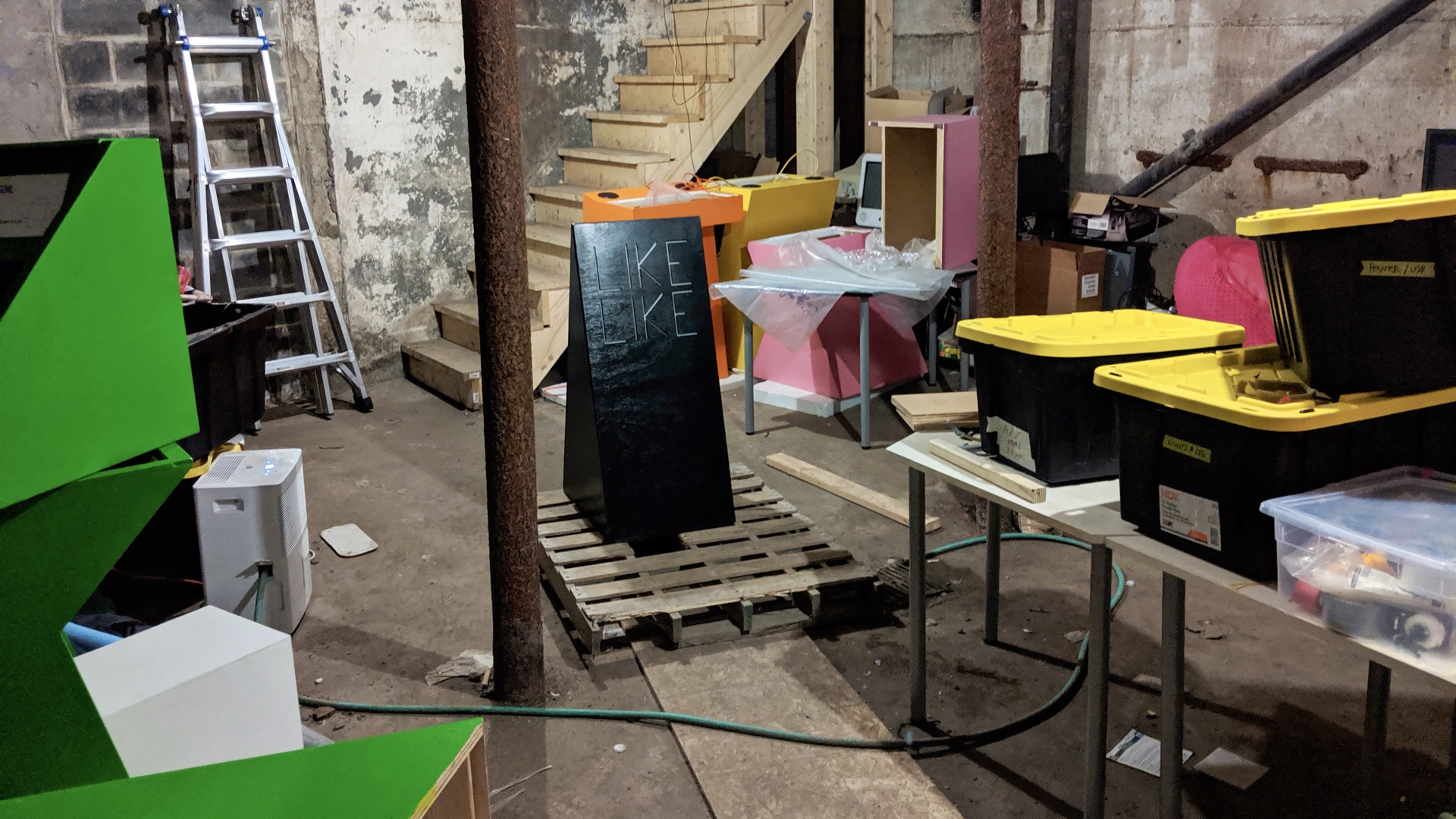
The single most important feature of LIKELIKE is the storage space
There is a basement right under the gallery space where I can store all the equipment that is not in use.
I would never be able to run events so effortlessly without that basement.
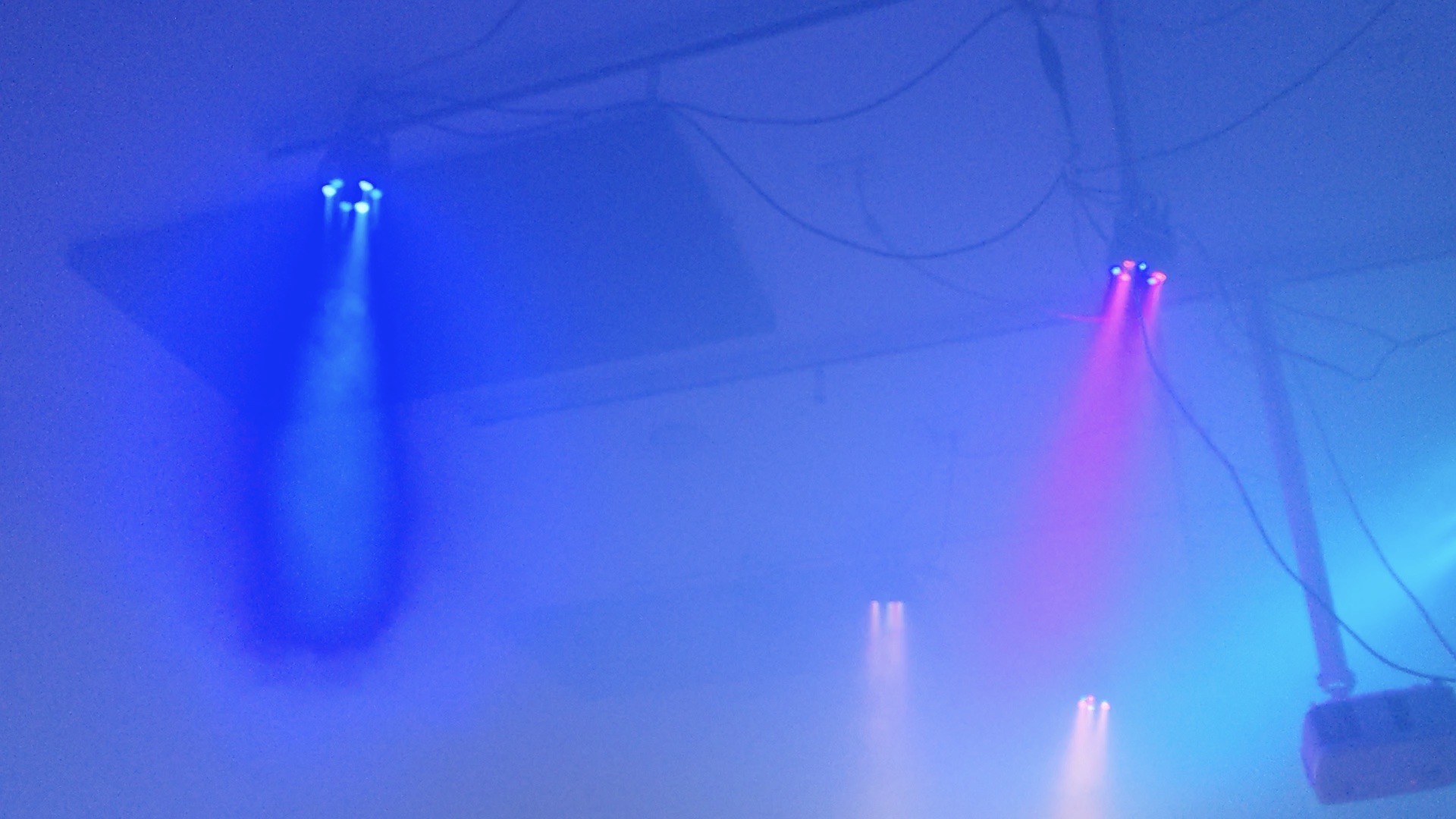
I have 9 RGB lights on the space. They were cheap, like $100.
They are DMX so I can change their color remotely from a computer.
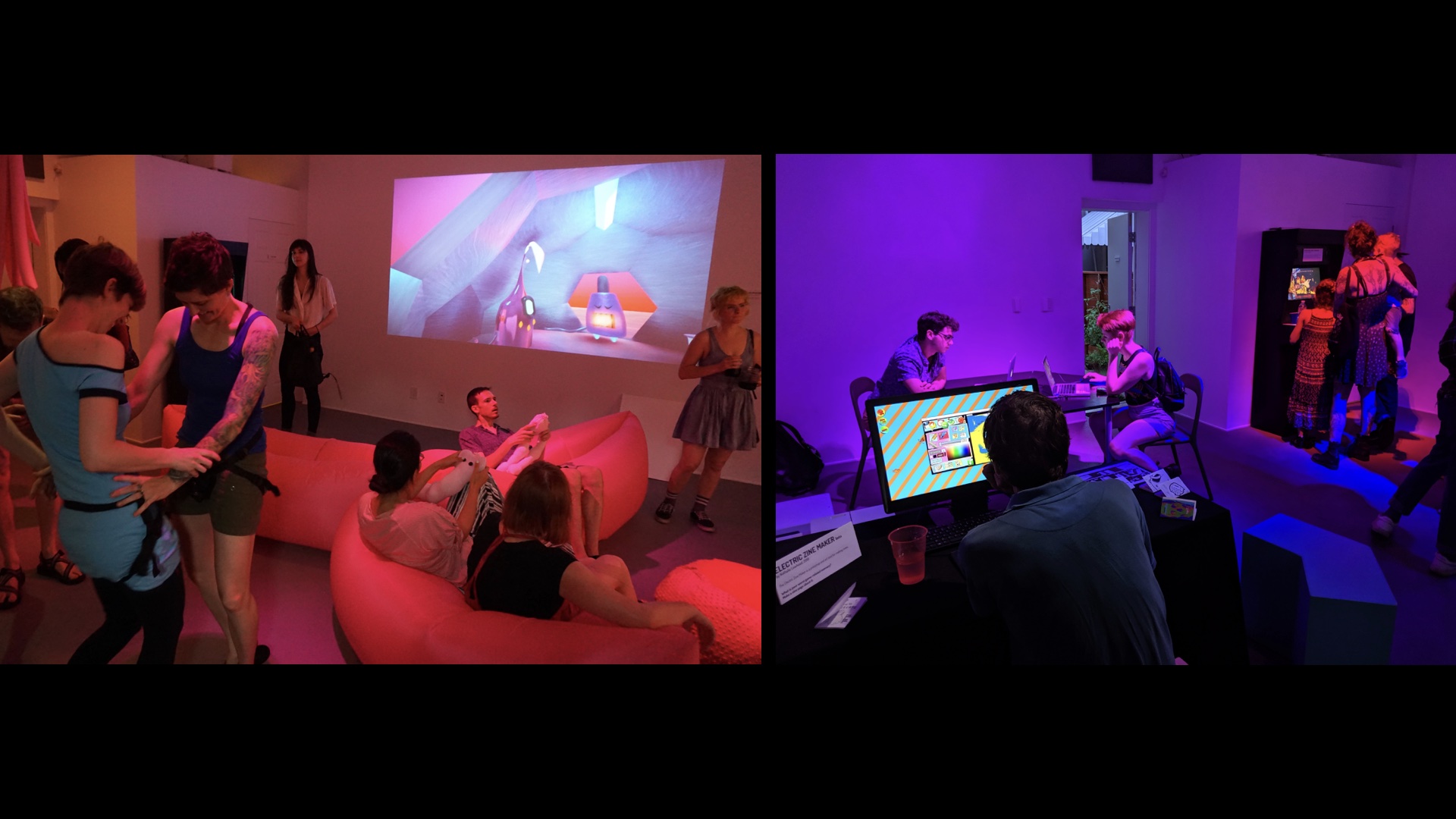
Lights do a couple of things. They are the quickest way to decorate a room and to set a mood.
On the left you see an exhibition about bodies, on the right Natalie Lawhead’s solo, visually themed around the blue screen of death.
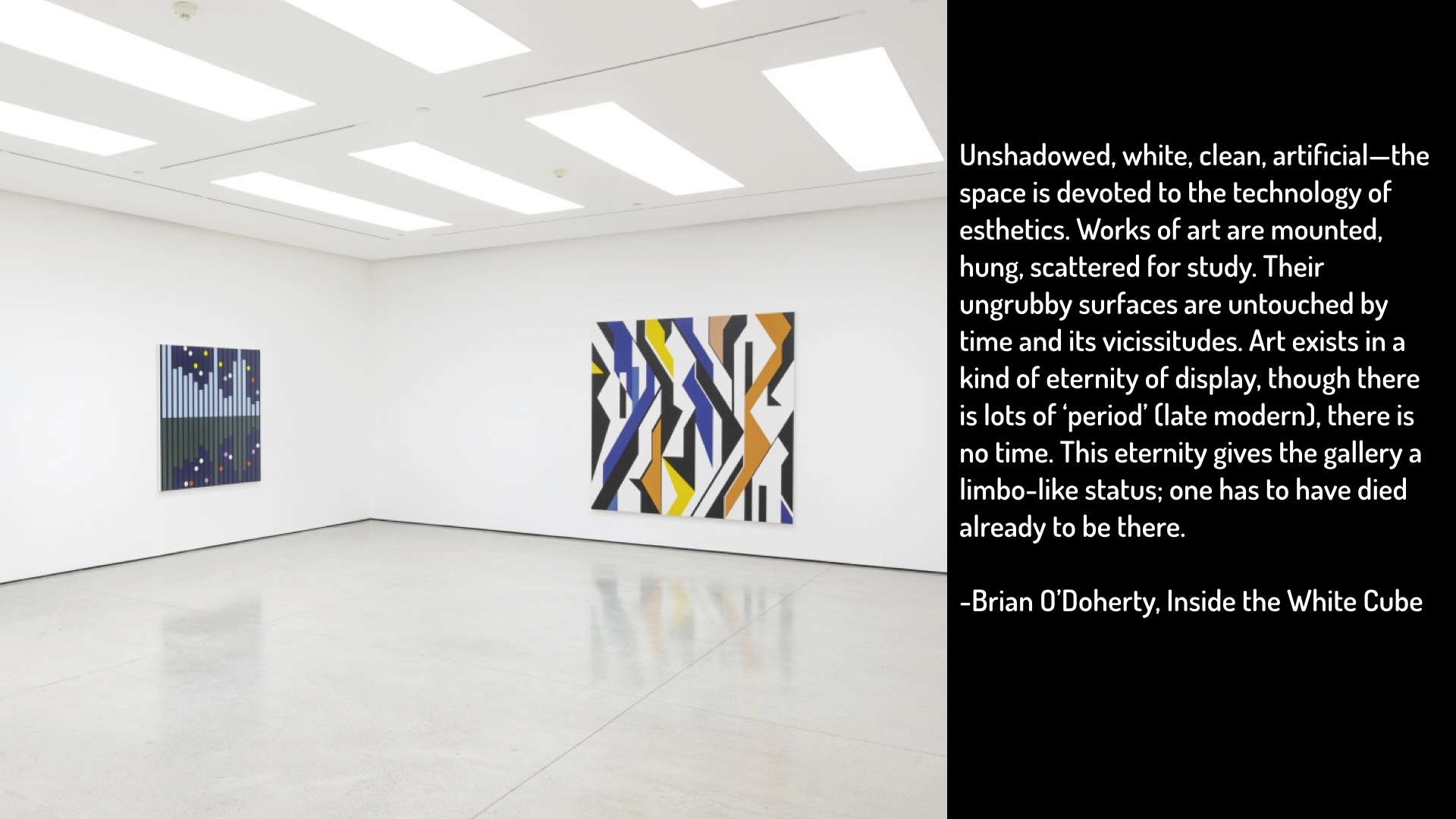
Second, they de-institutionalize the space.
This is the classic white cube type of gallery. The clean space makes the paintings pop, it removes distractions.
I like the flexibility of it, there are no architectural features to negotiate.
But it’s not a neutral look. This is how modern museum and galleries look like.
It has a baggage of class and privilege. And, in America, it's entangled with race. Consider that LIKELIKE is at the edge of a majority African American neighborhood.
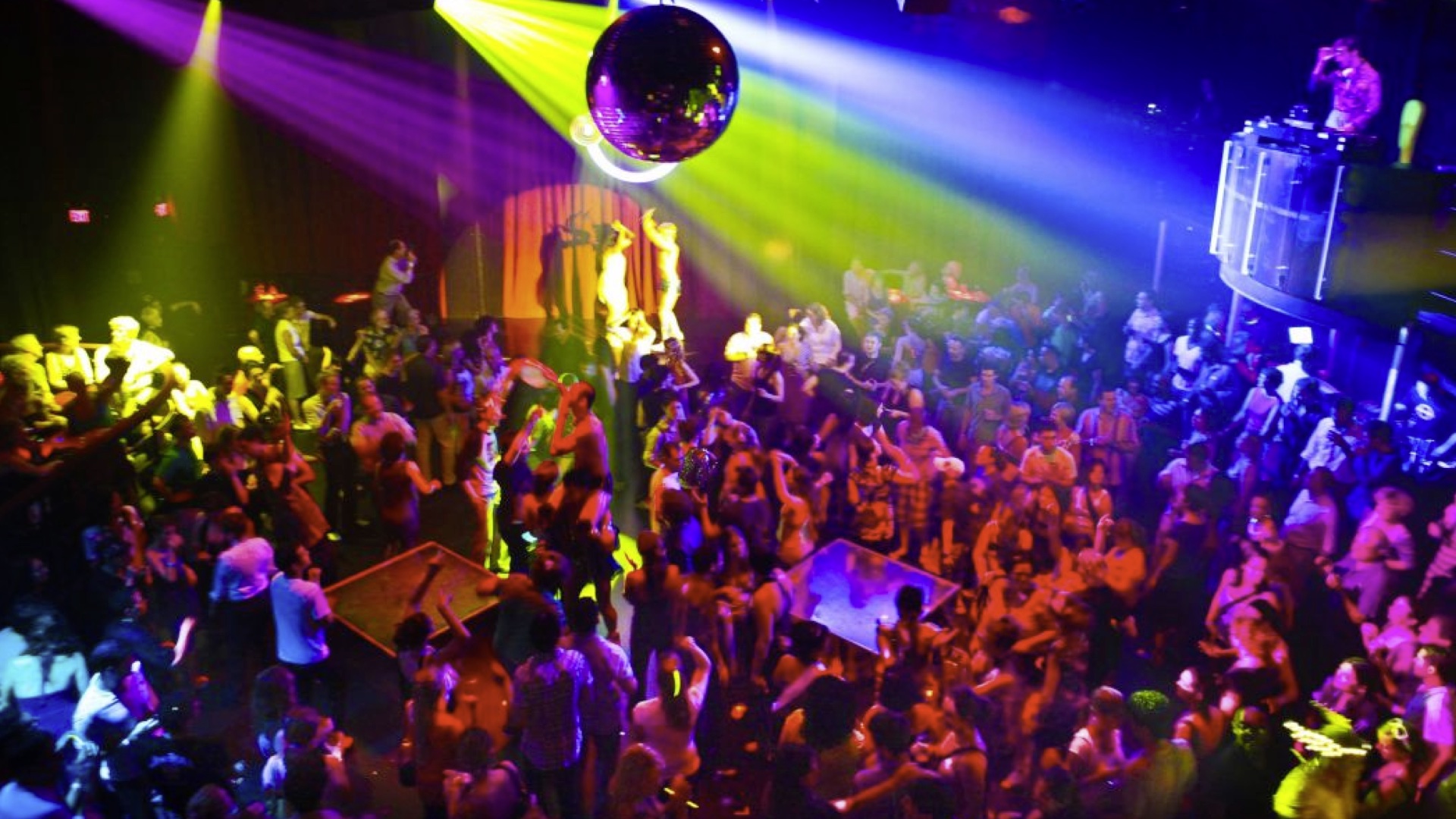
Unnatural colored lights are more associated with dance clubs, and I’d rather have that association.
If people enter LIKELIKE for the first time and they immediately read it as an art gallery, I failed.
The more typical reaction is: "what is this place?"
That's a success for me!
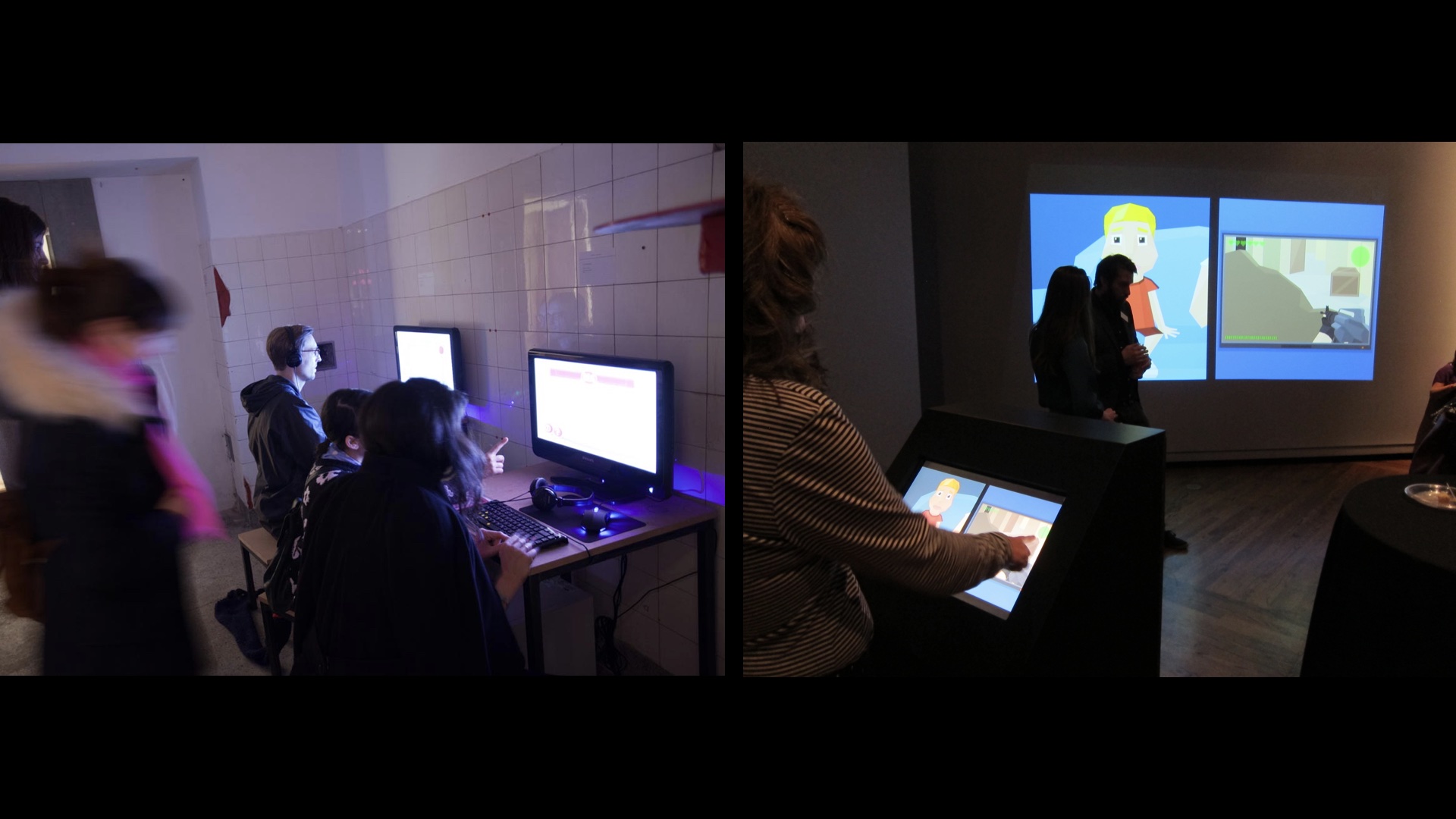
Third, if you point the spotlights to the players. You avoid this well known problem with documentation in digital arts exhibitions.
If the screens are the main source of light the camera can either expose the players, and overexpose the screens (left) or expose the screens and underexpose the players, turning them into silouhettes
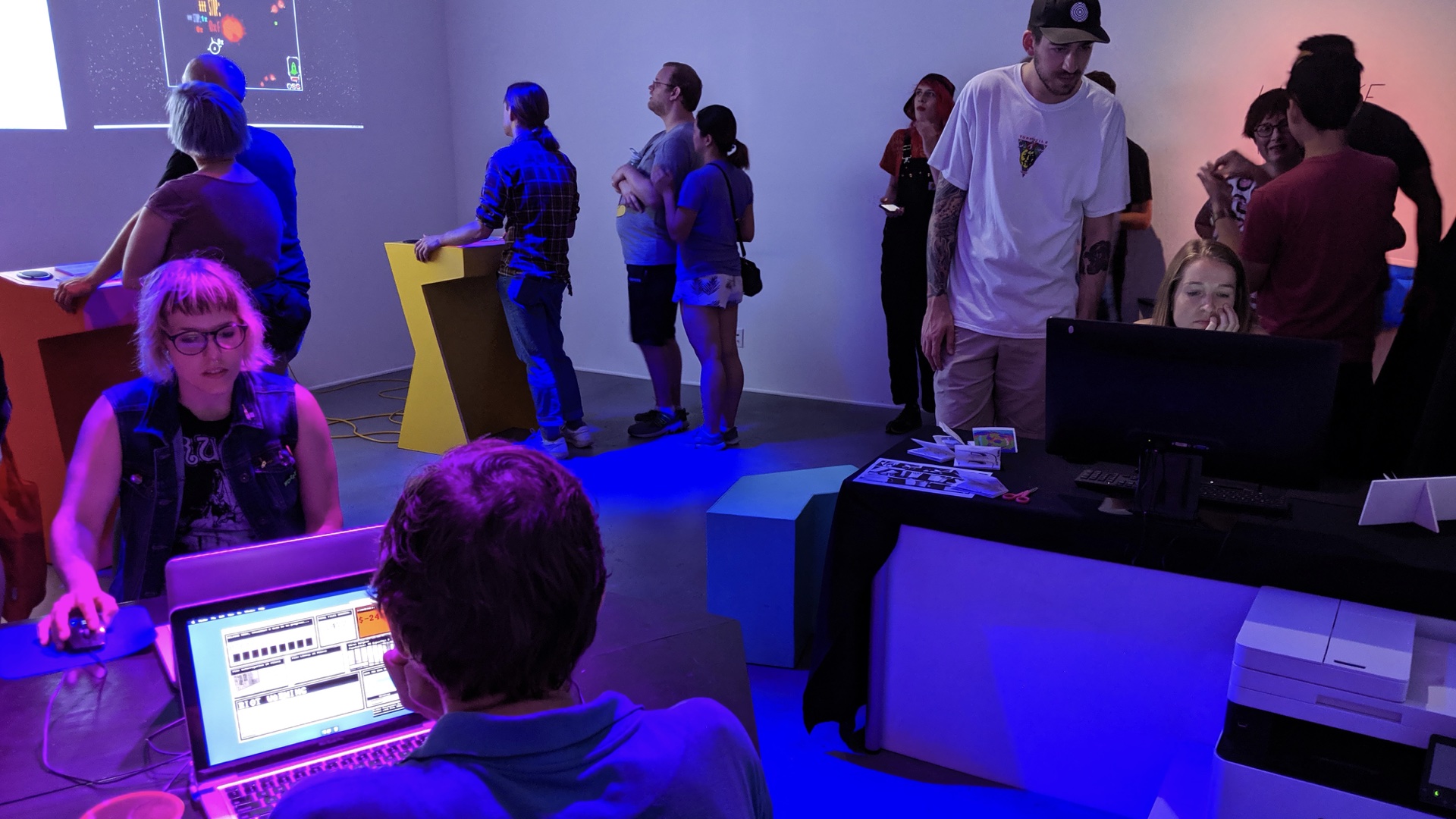
This is not a particularily good picture but it’s well exposed. You can see both humans and games.
Also, I found that recent phones like Google Pixel 3, work much better than high end DLSR cameras in low light conditions.
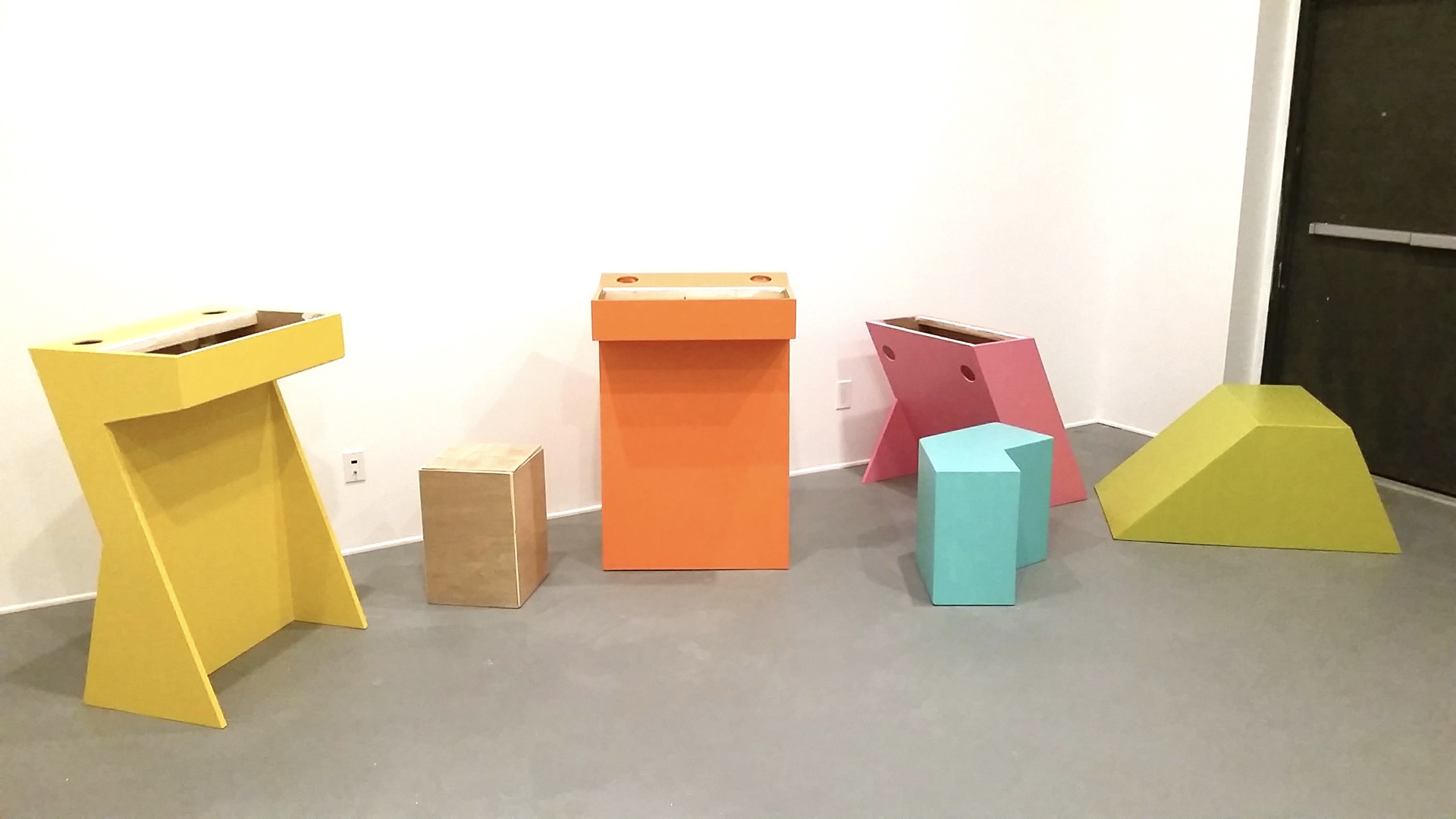
I made a few half cabinets that I keep reusing.
They are not super study but they are very light so I can move them by myself if necessary.
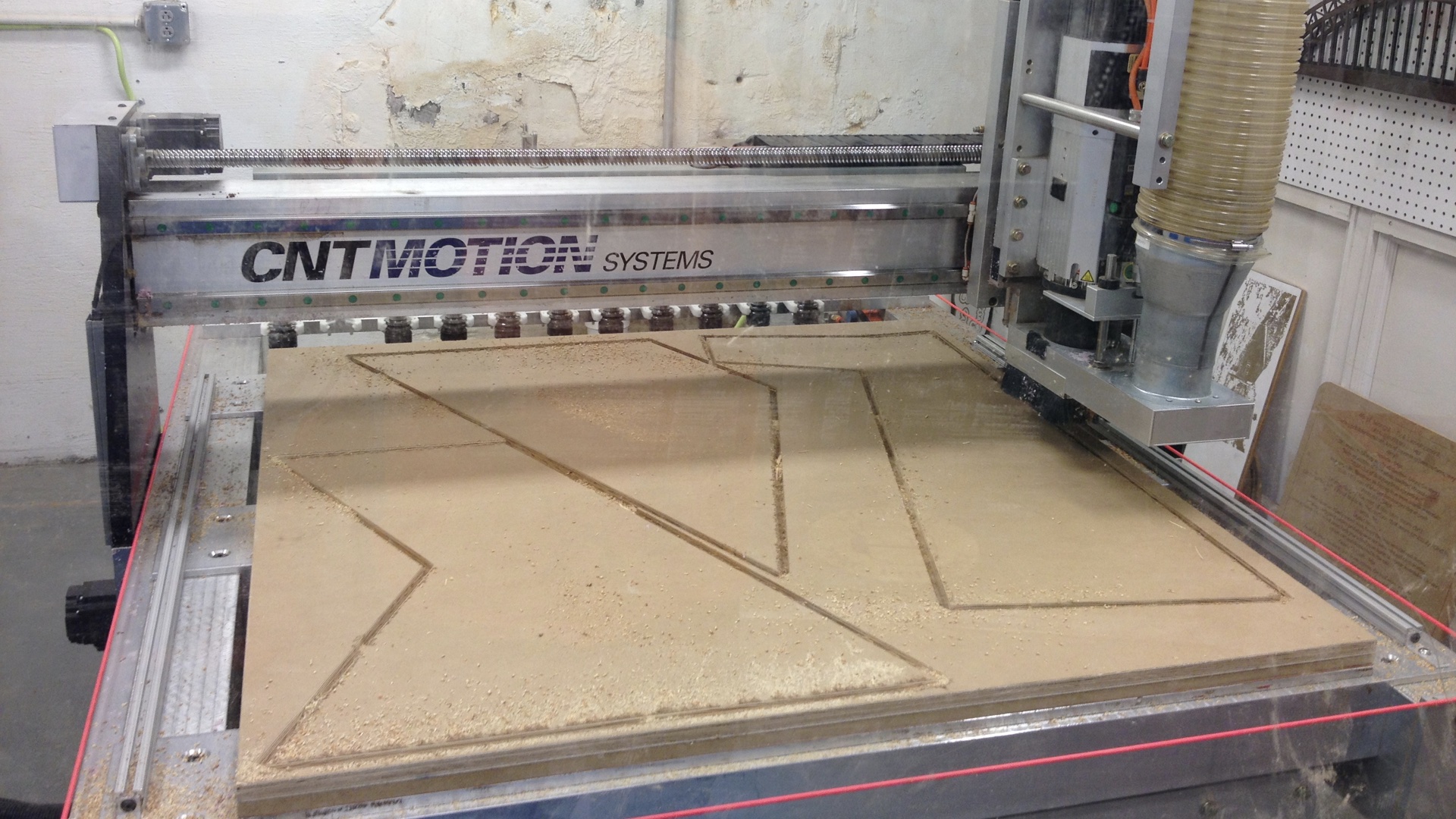
I have access to a fancy CNC router from my university but I don’t really know how to design for it.
I can only cut simple shapes. I didn’t want to pay professional fabricators so I came up with my own illiterate method for building cabinets.
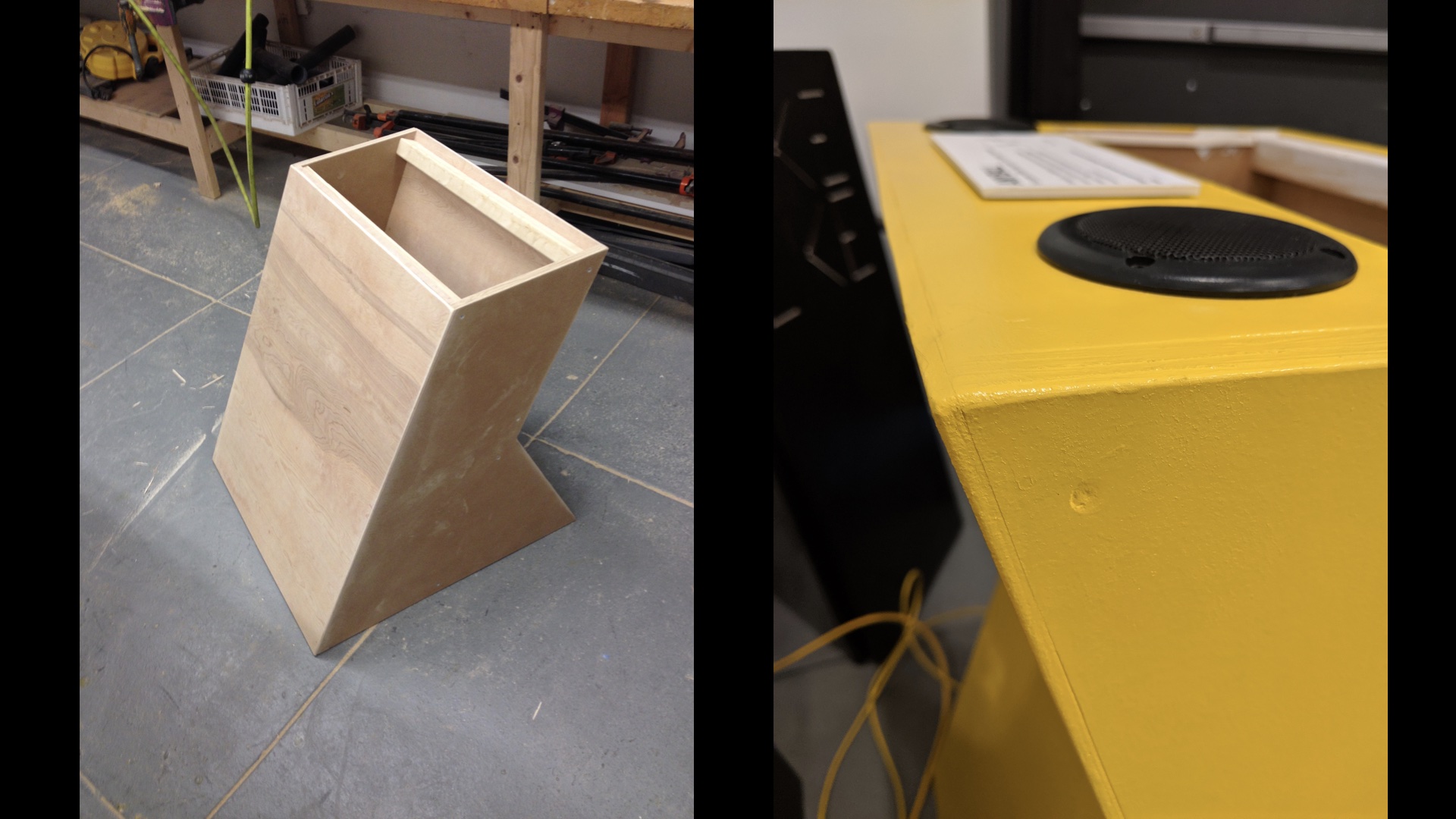
They are basically extrusions of the CNC-cut shapes held together by 1x1 or 2x2 dowels, and covered by thin panels, which are measured and cut on the spot.
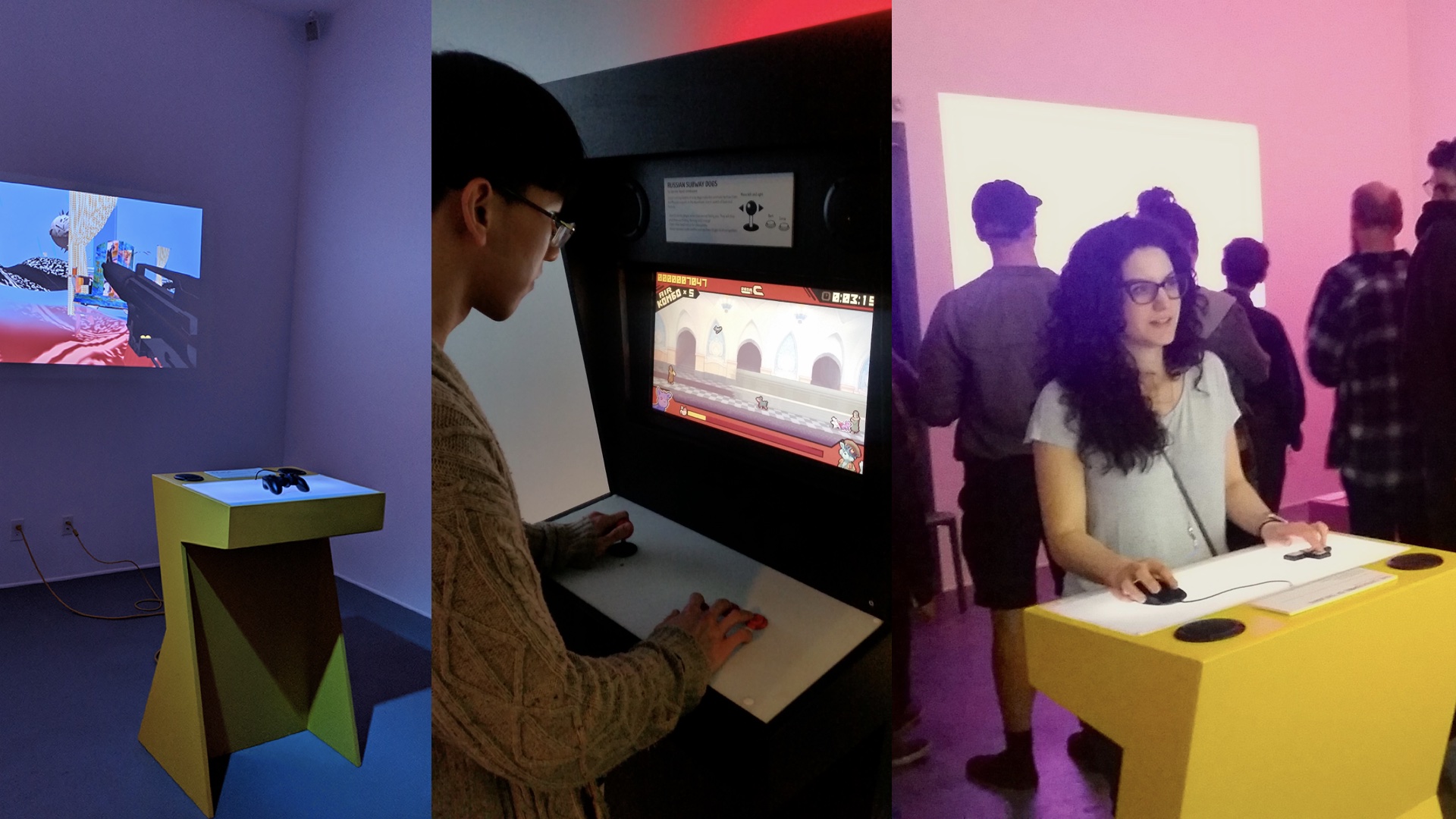
The tops are plastic and they are all the same size so they can accomodate different control interfaces and be swapped around.
They can also be back lit to attract attention in the dark.
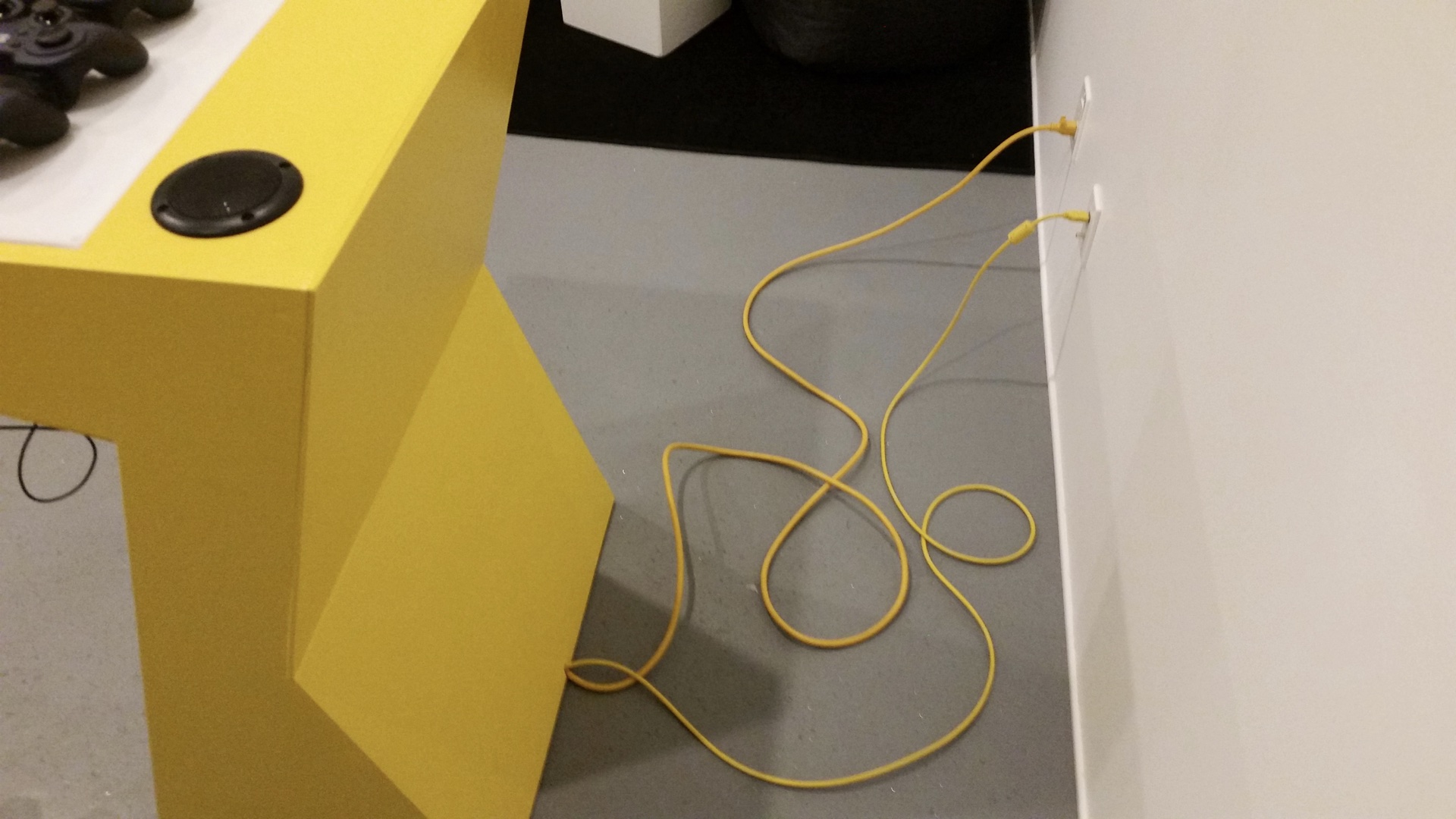
I don’t like to spend time hiding cables and taping them to ground. So I made them pretty and visible.
There’s no shame in cables, cables are cool.
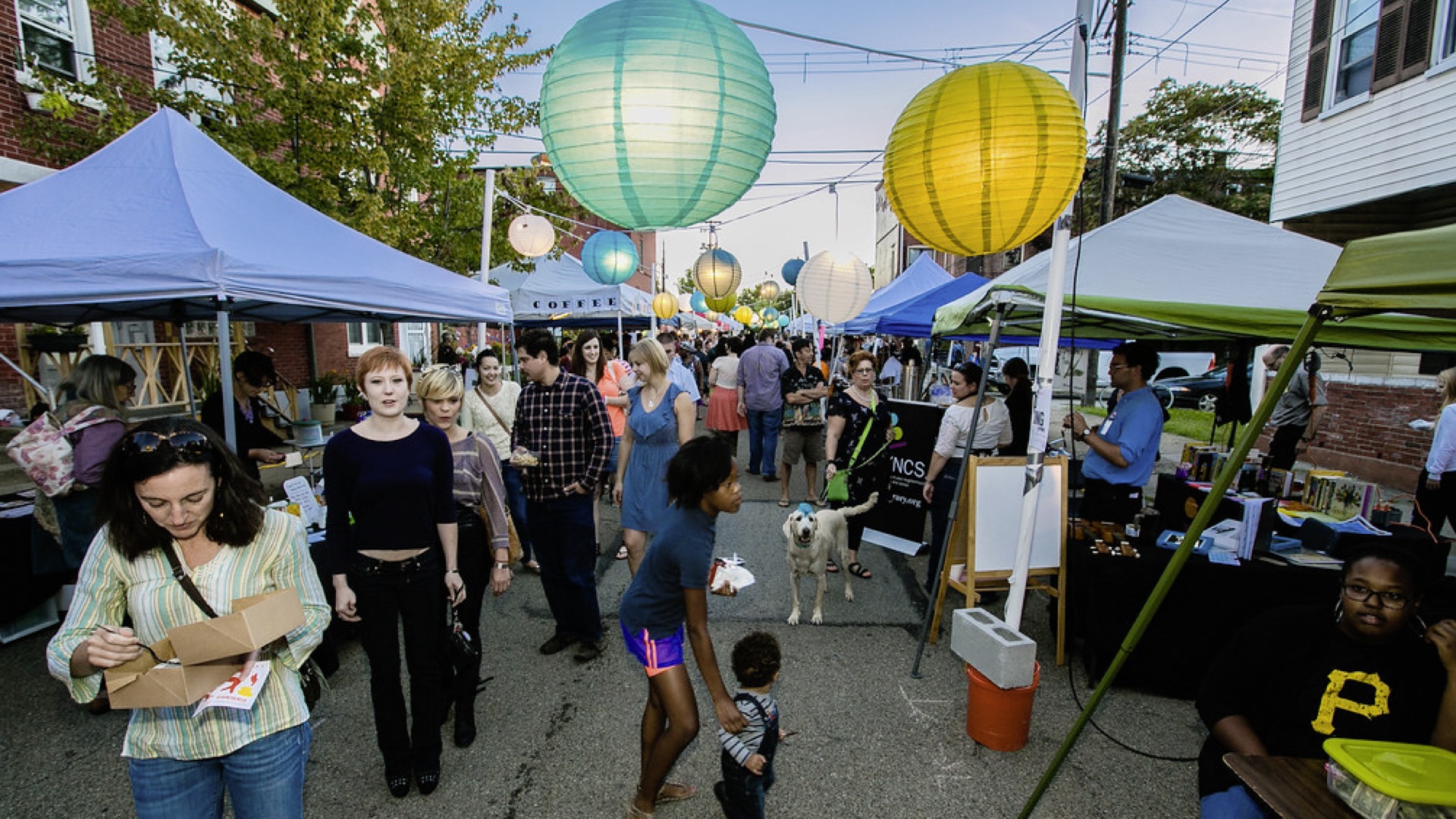
The reason we do one event per month is that I wouldn’t have time to organize a big festival.
Small events are more manageable. But it’s also because it’s tied to a monthly gallery crawl in the neighborhood.
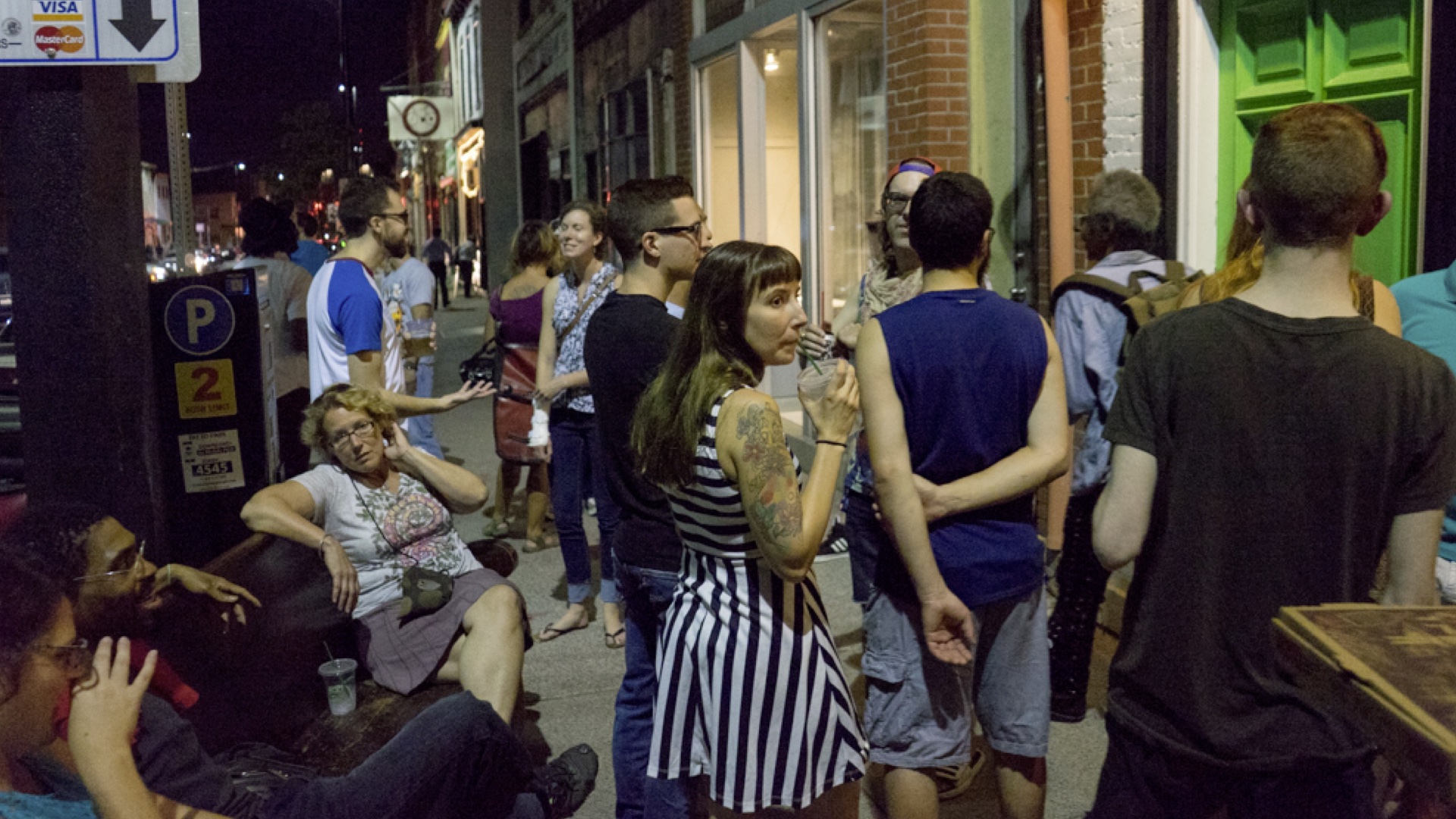
Basically a bunch of art galleries band together. There is music, food trucks, quite unpretentious vibe. A rather diverse crowd just wanders around a few blocks.
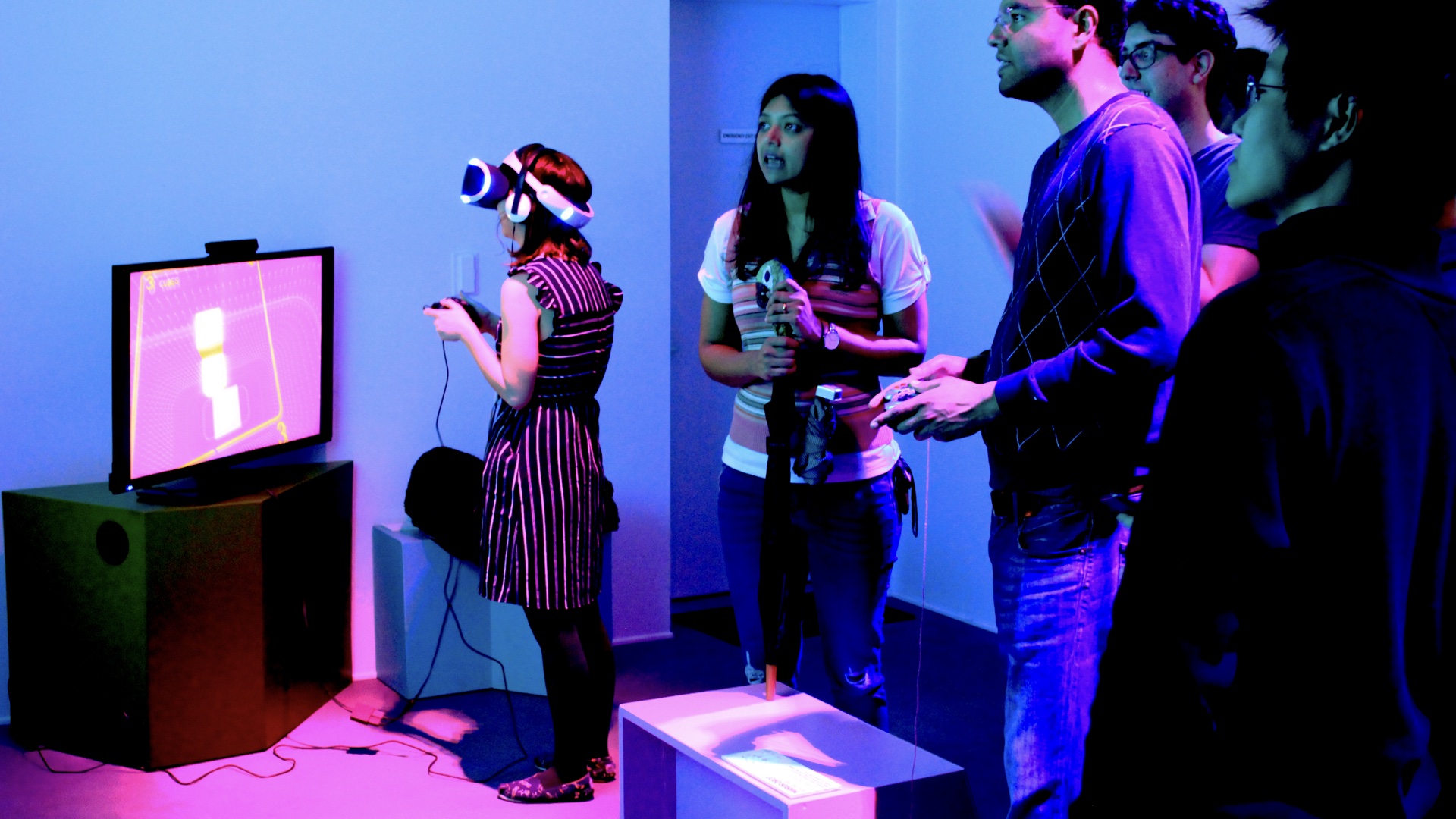
Most of the audience are young hip arty people, but not necessarily gamers.
A lot of people show up and they never tried a VR game before.
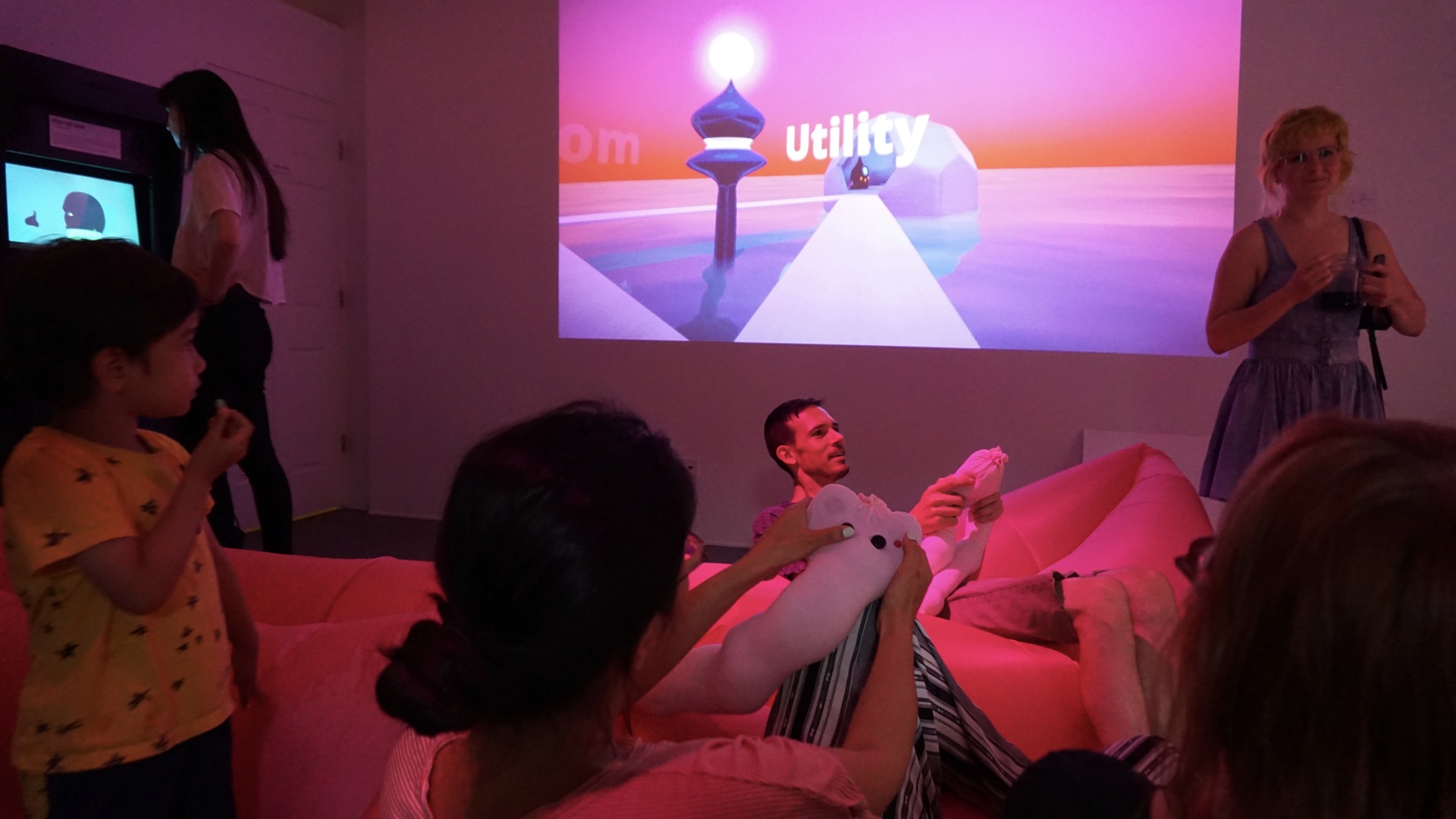
Or some older folks who haven’t played games since space invaders or never held a twin stick controller.
And they are thrown into an avant garde queer game.
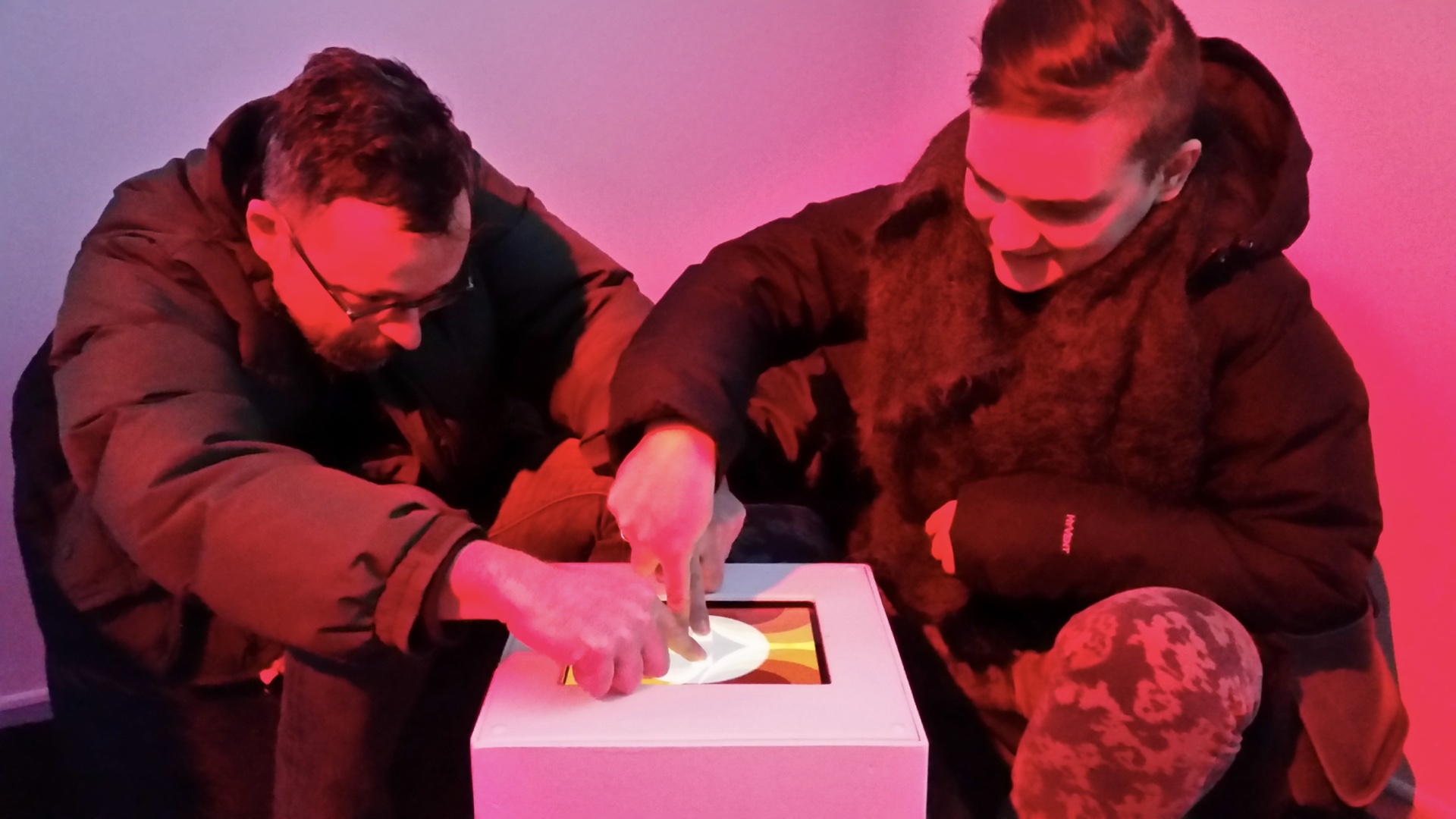
By the way non gamers are fine with weird games. Most normies don’t play games because not because they lack skills but because they think all games are boring and immature, like triple AAA shooters or bejeweled
We need to stop thinking of experimental games as a subset of a subset (indie) of a fandom (videogames).

There is an economy of scale in this monthly event format.
All the promotional material follows the same templates. I don’t want to spend time designing flyers.
I’ve got one different gradient every show, one centered image that can be resized for different social media. Usually some free 3D model slightly modified.
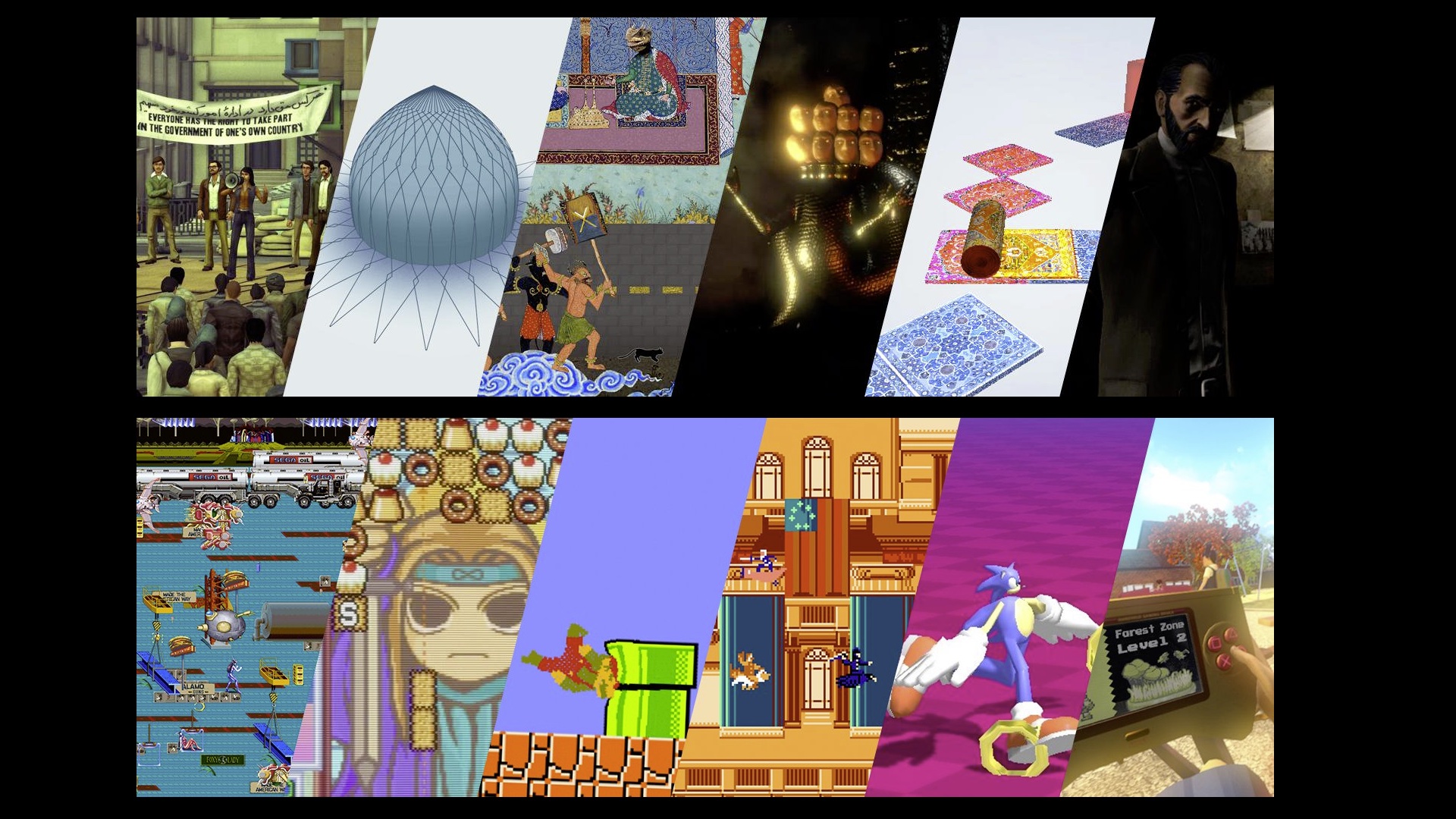
One composite screenshot for each show.
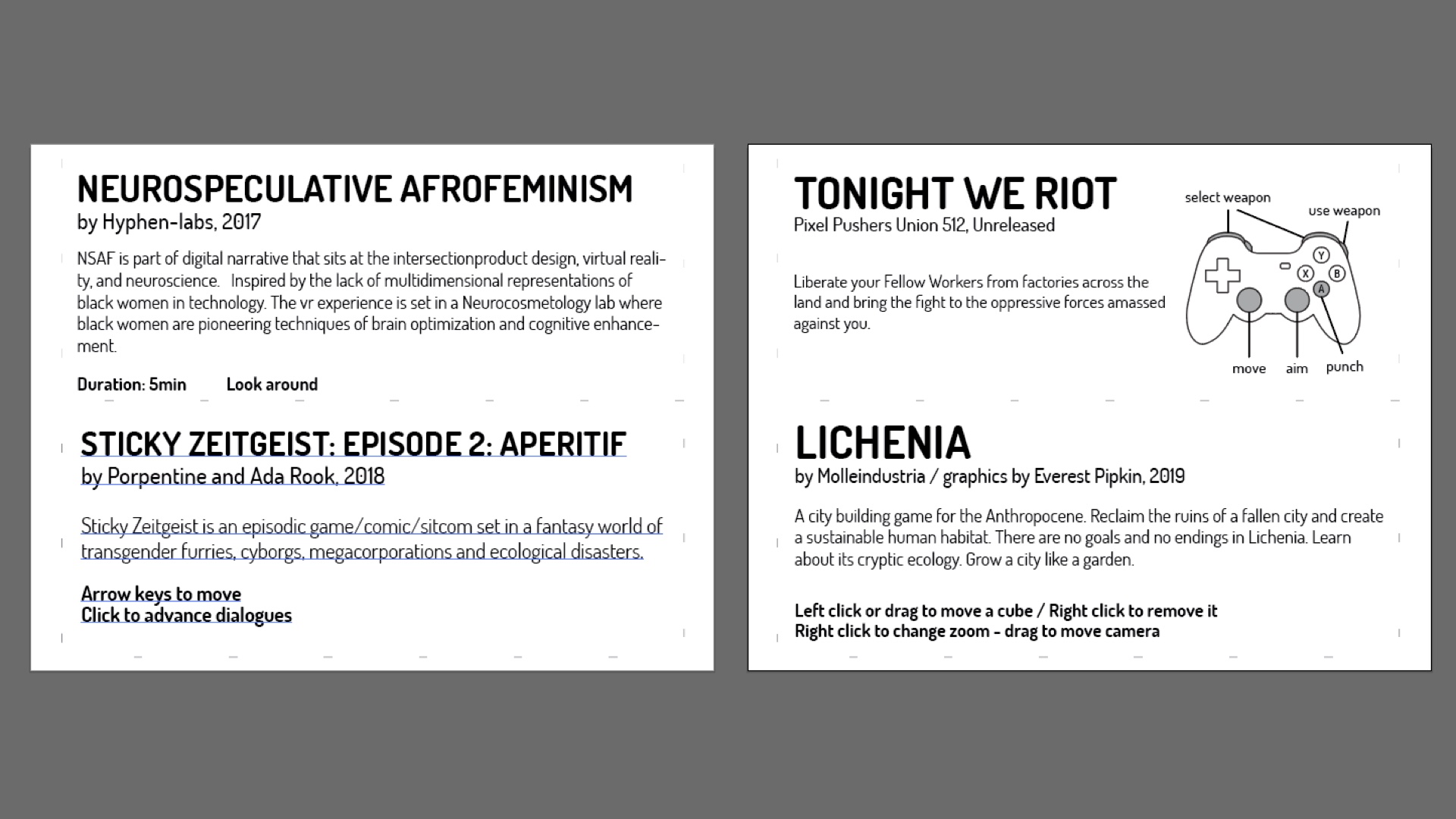
The wall texts have the same size and format.
I'm fine with wall text as long as it provides credits, instructions, and maybe just a little interpretative hook if the game is too obscure or conceptual.
People might not read the text at first, but it's there if they are confused or want to know more.
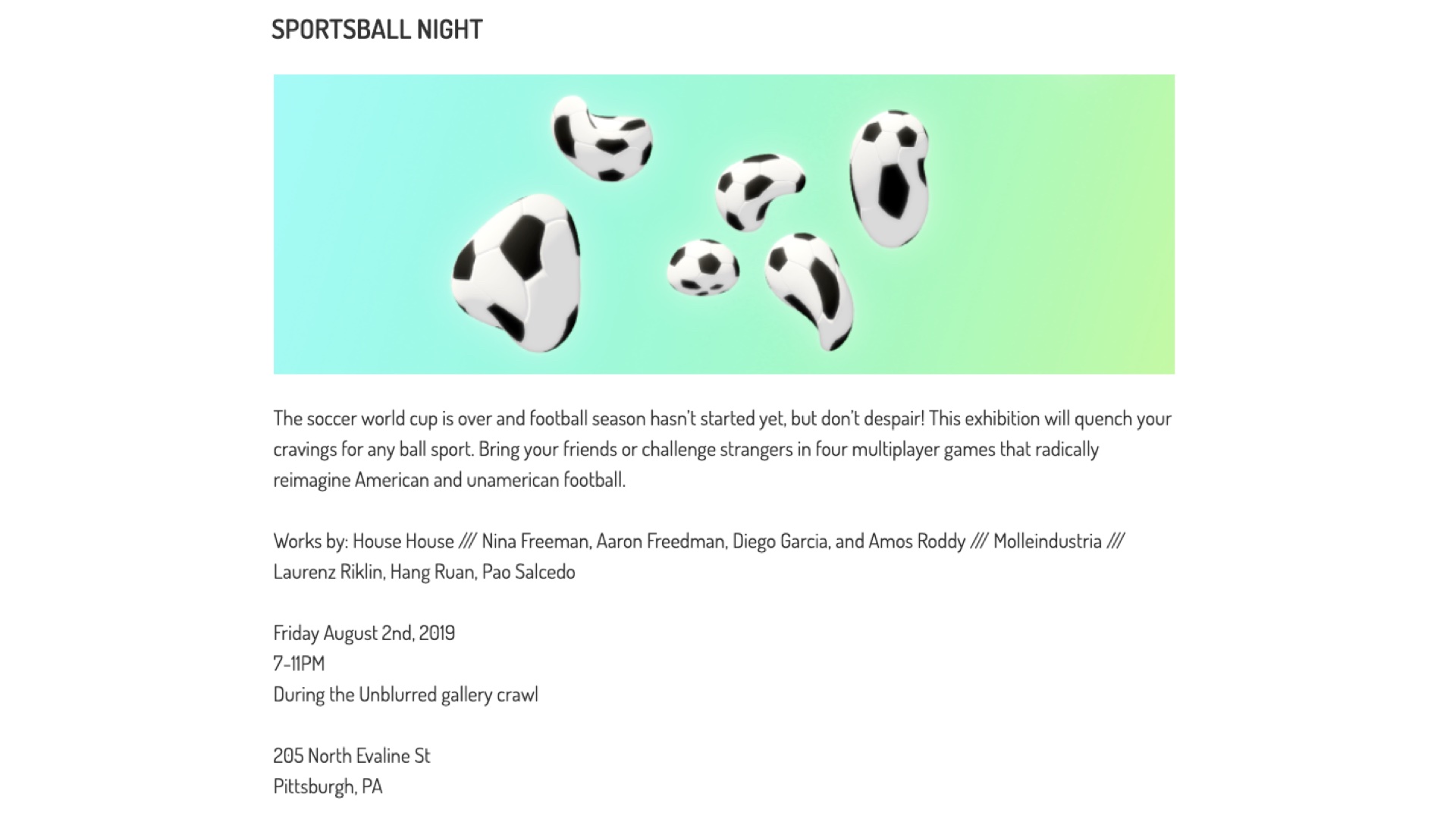
Every show has a one paragraph curatorial statement and copy pasted media material.
Aside of being efficient it’s also consistent branding. And the regularity means it doesn’t require any promotion because people know it’s happening every first friday of the month.
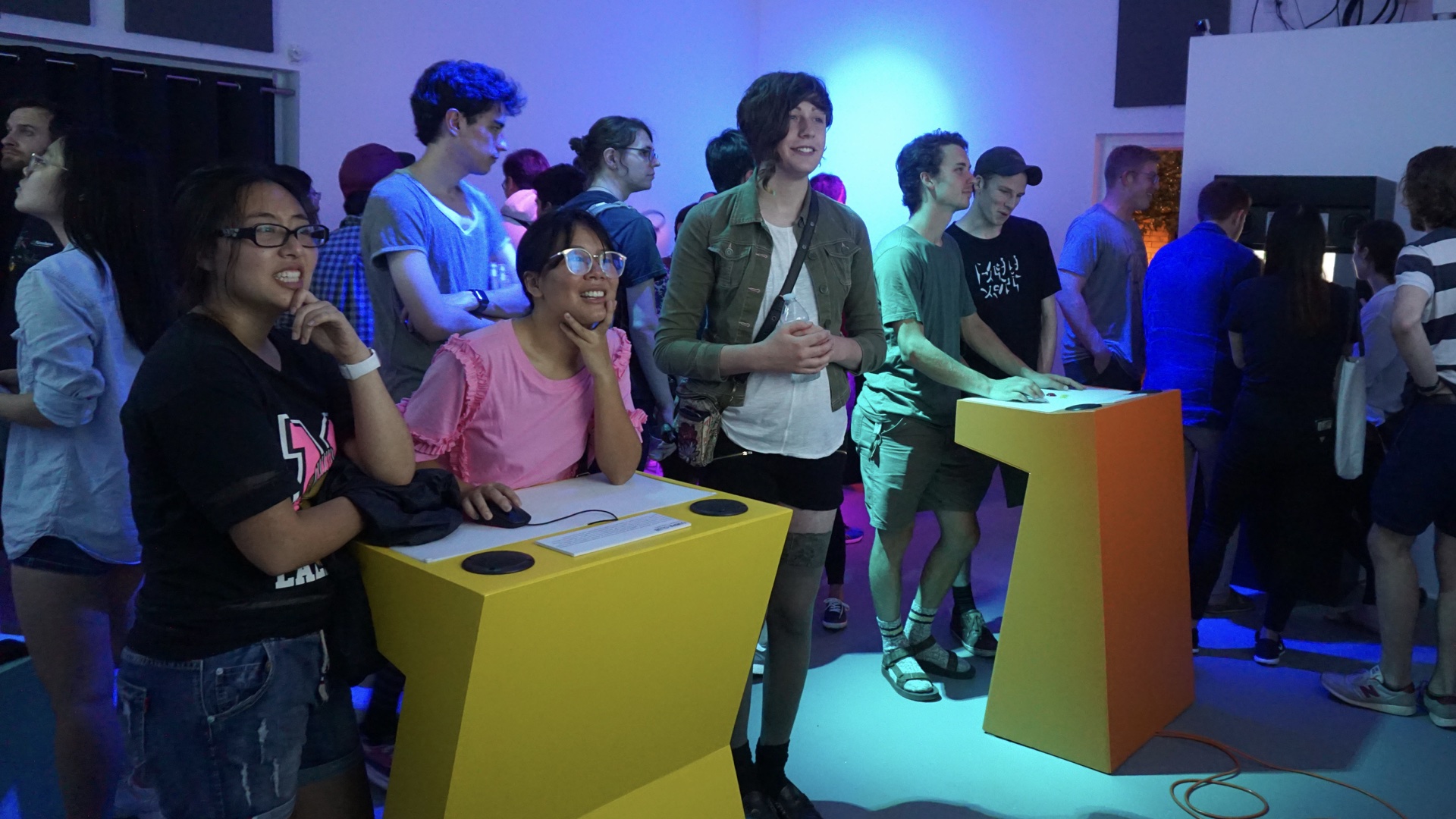
Also, LIKELIKE is a tiny space and it fills pretty quickly.
To me maintaining a good visitors / games ratio is more important than the total number of visitors.
I’ve been to big game events with one game for every 1000 people and long lines.
Games bacome less central to the experience. I don’t like that.
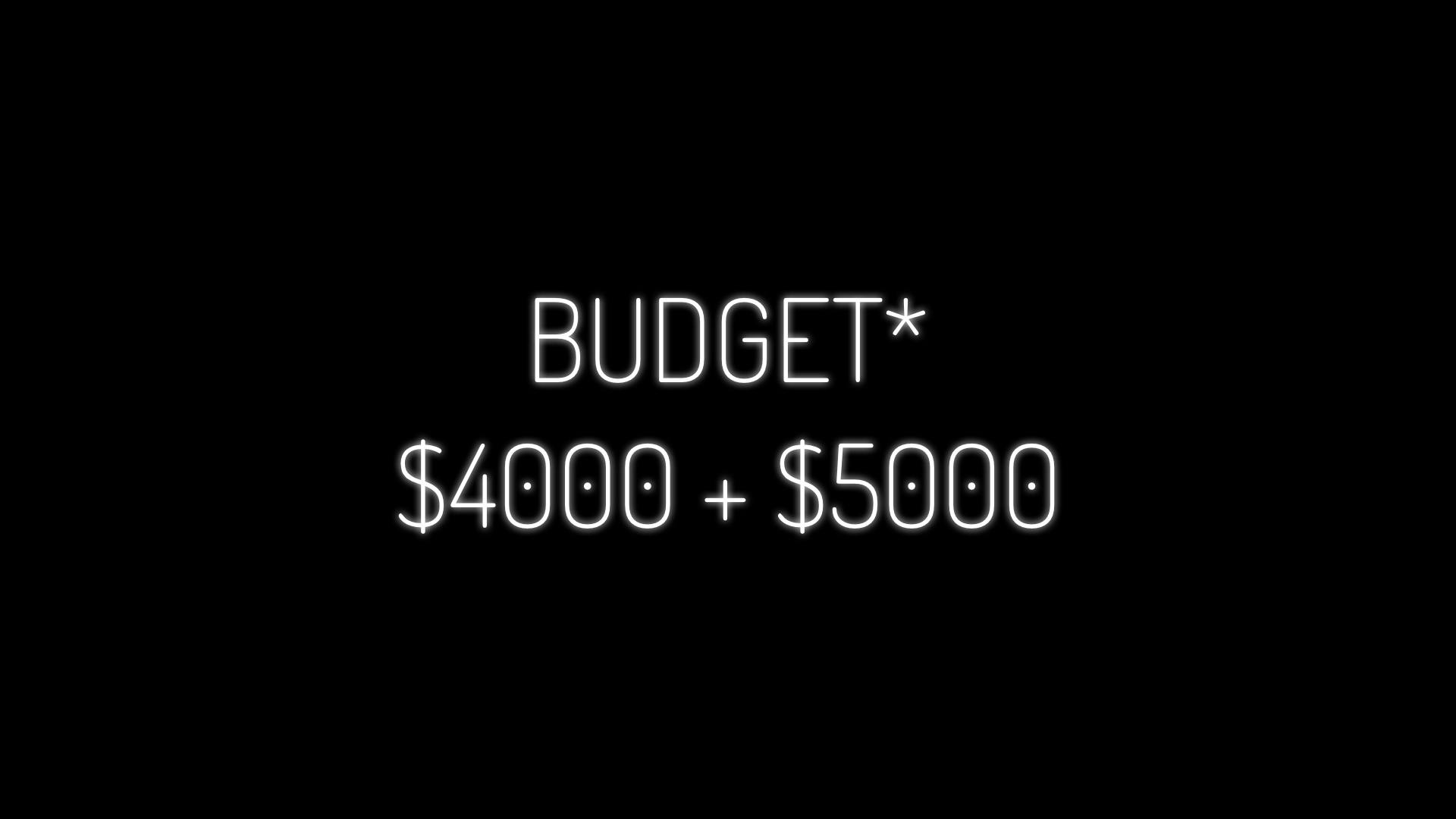
To conclude: the operating budget for these two years was 4 thousand dollars + 5 thousand dollars.
*the asterisk is there because there are some expense that I can’t get reinbursed.
So I lose some money but it’s comparable to a hobby.
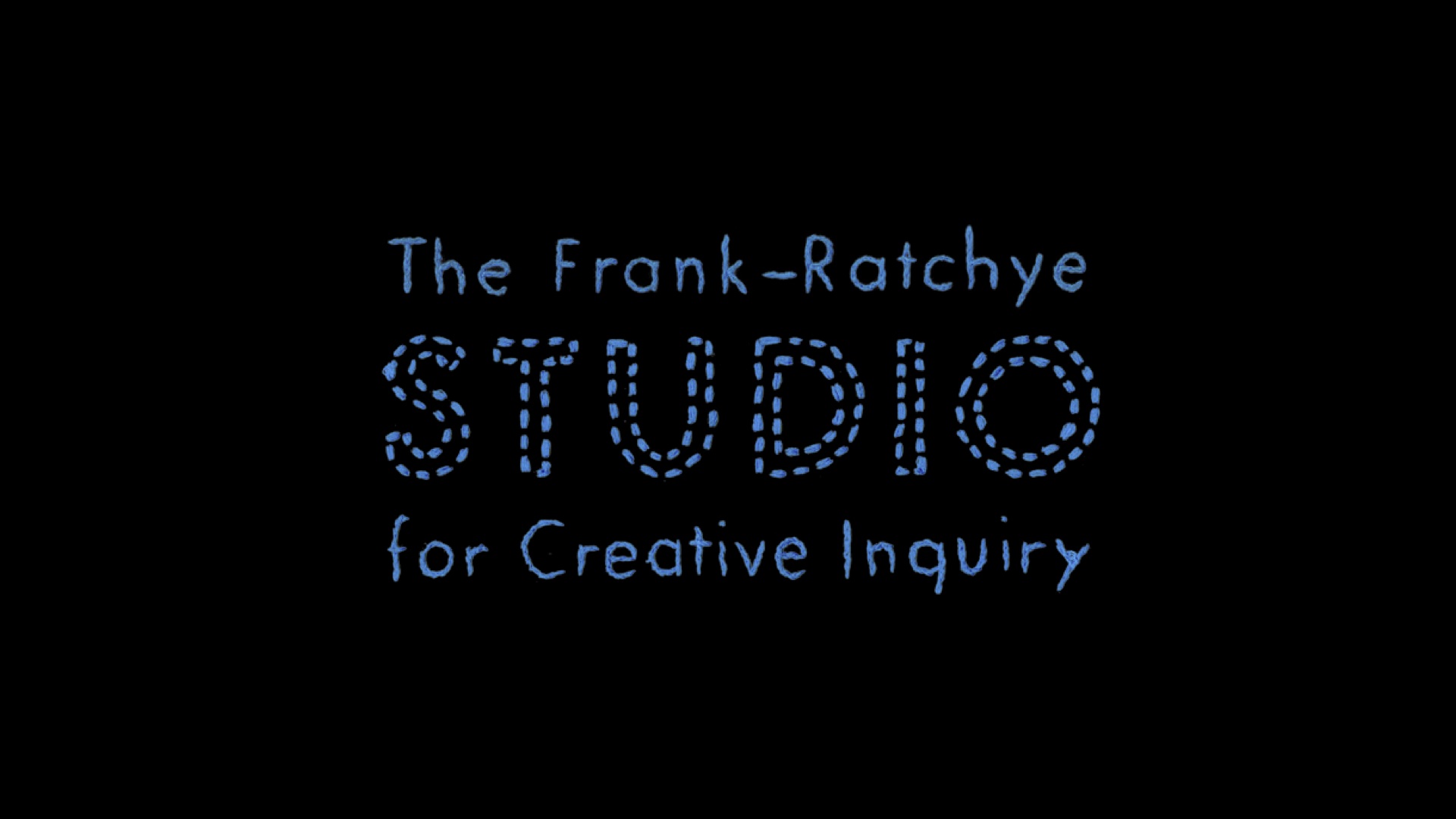
The money all came from two grants by this research center which is part of my University.
So I’m not taking that money away from poor local artists.
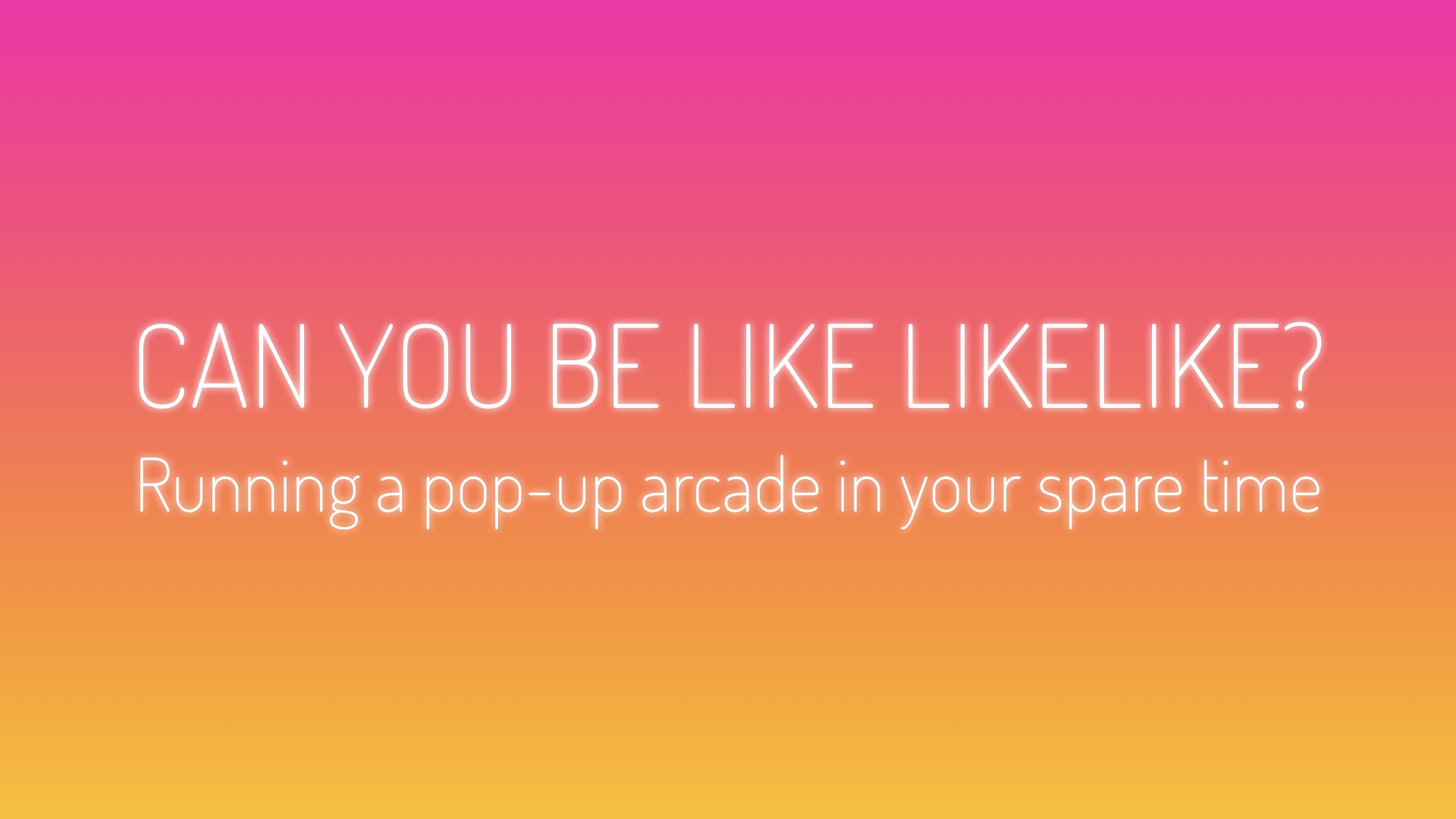
So back to the initial question:
Can you be like likelike?
No, in the sense that most of these conditions are not replicable everywhere.
But yes in the sense that you can try to shape a project entirely around your personal, material and logistical limitations. Around your access to resources and skills. And around your social context.